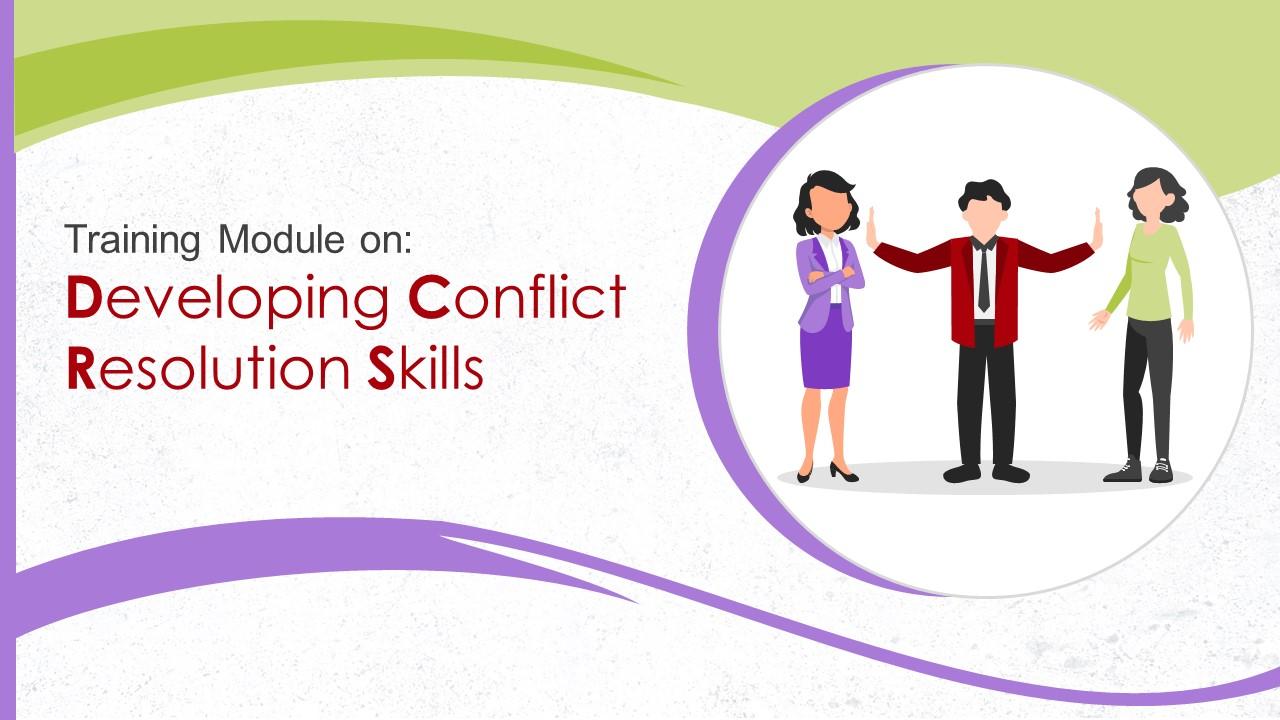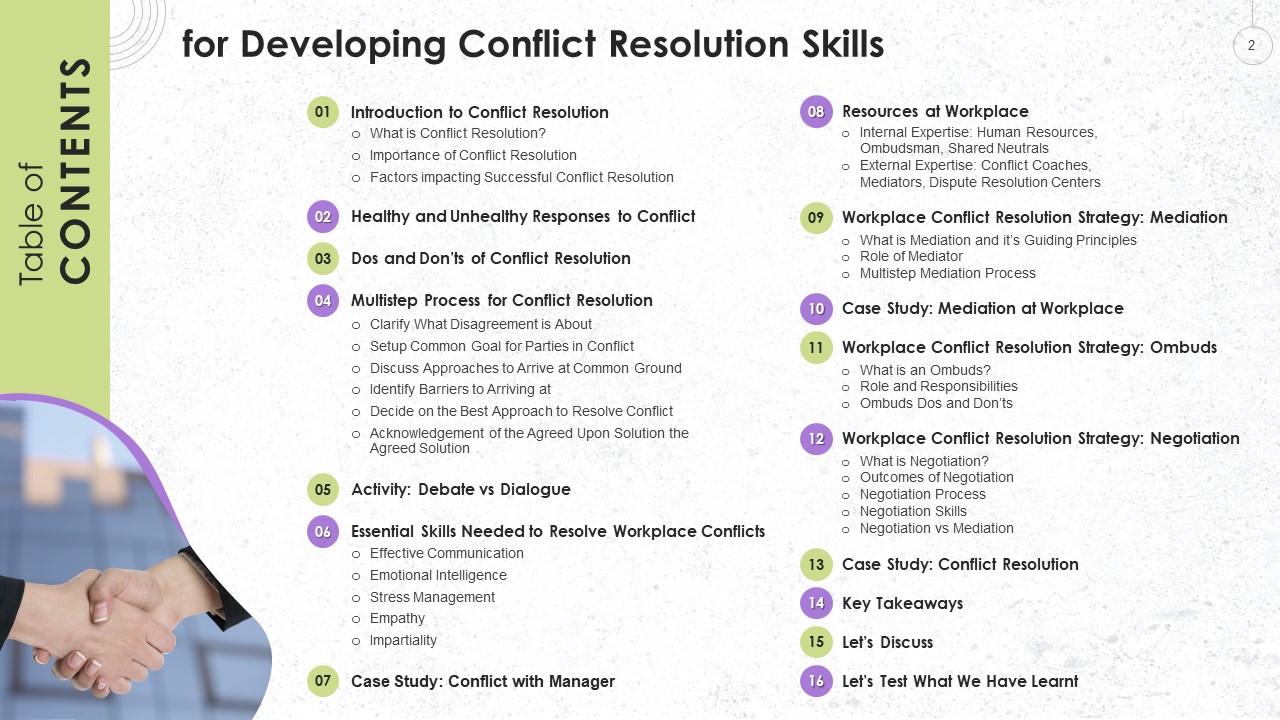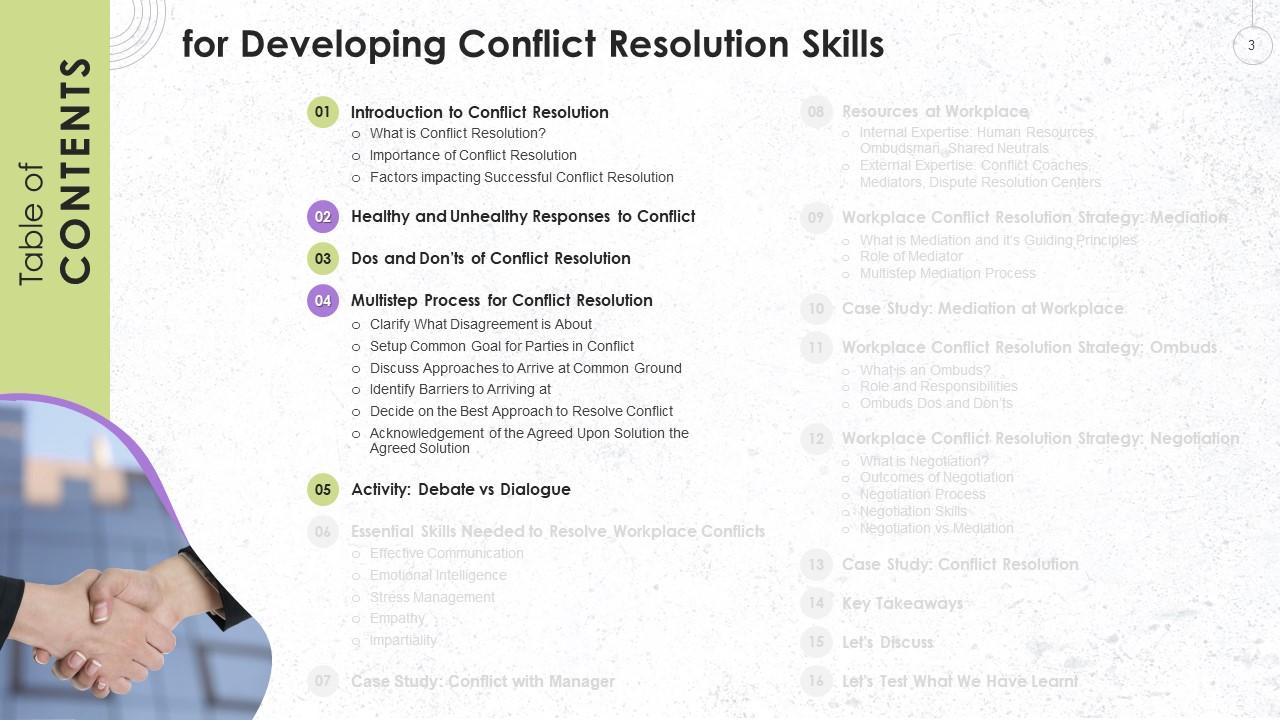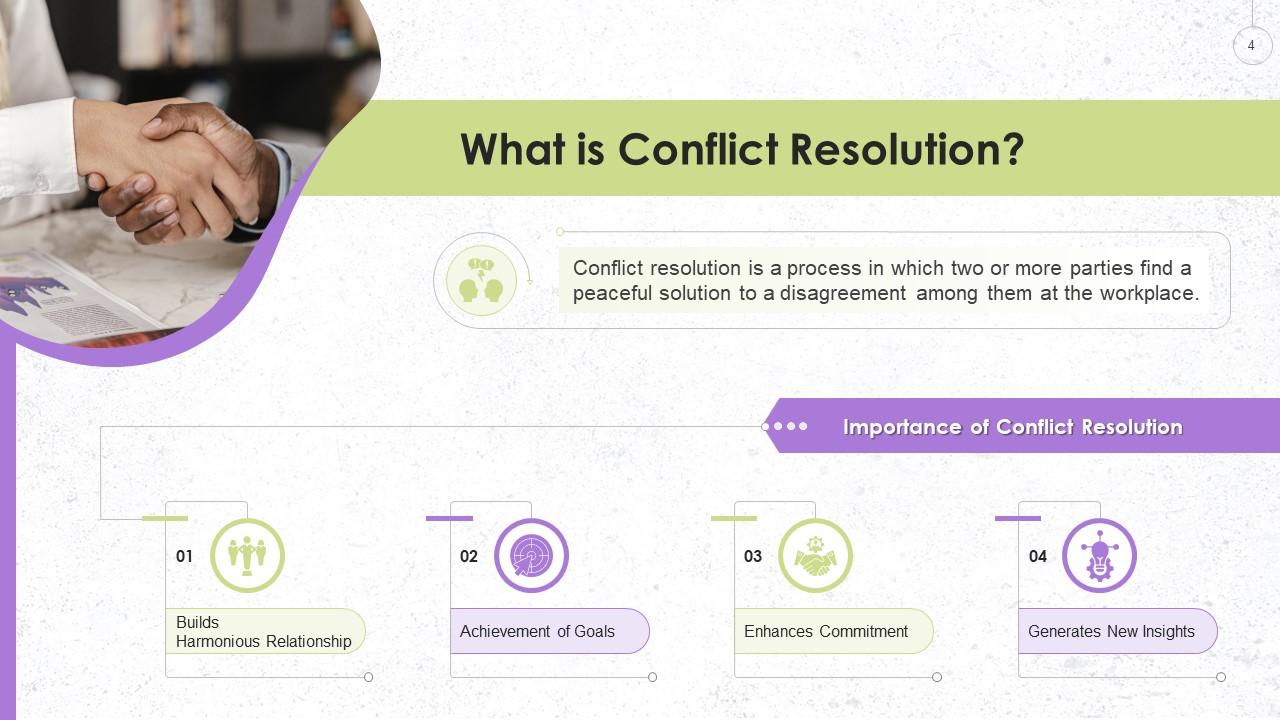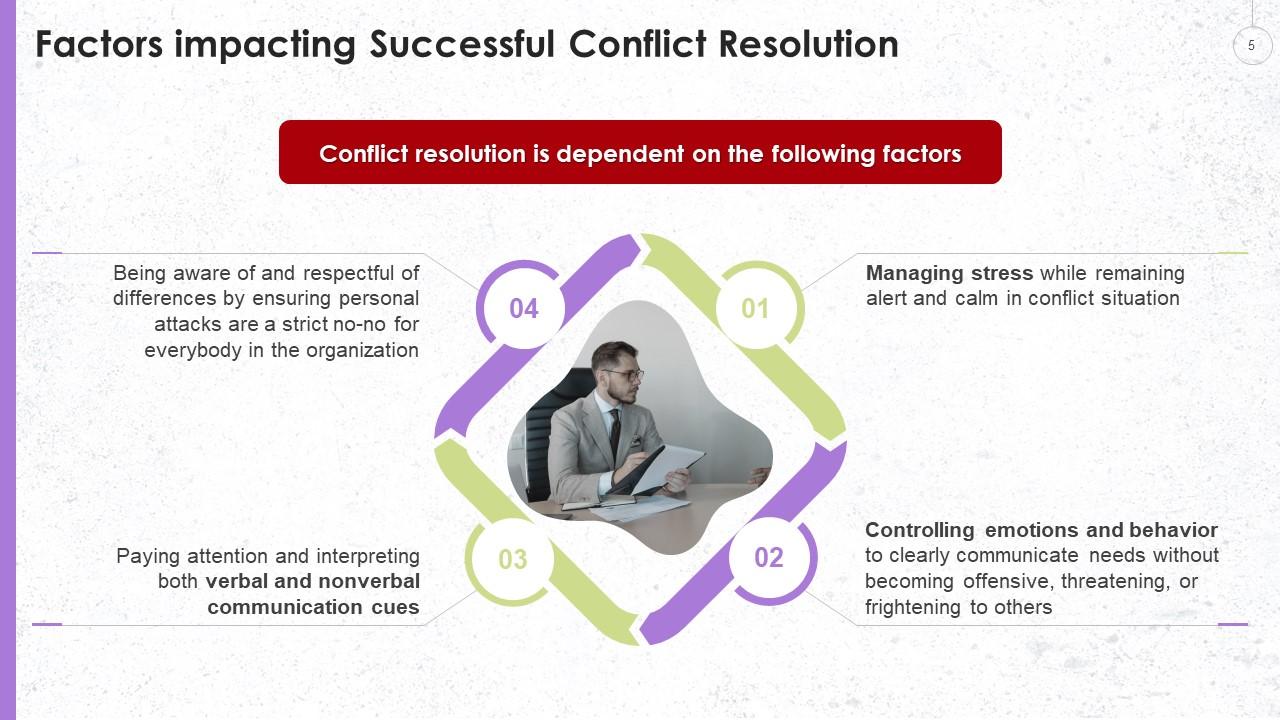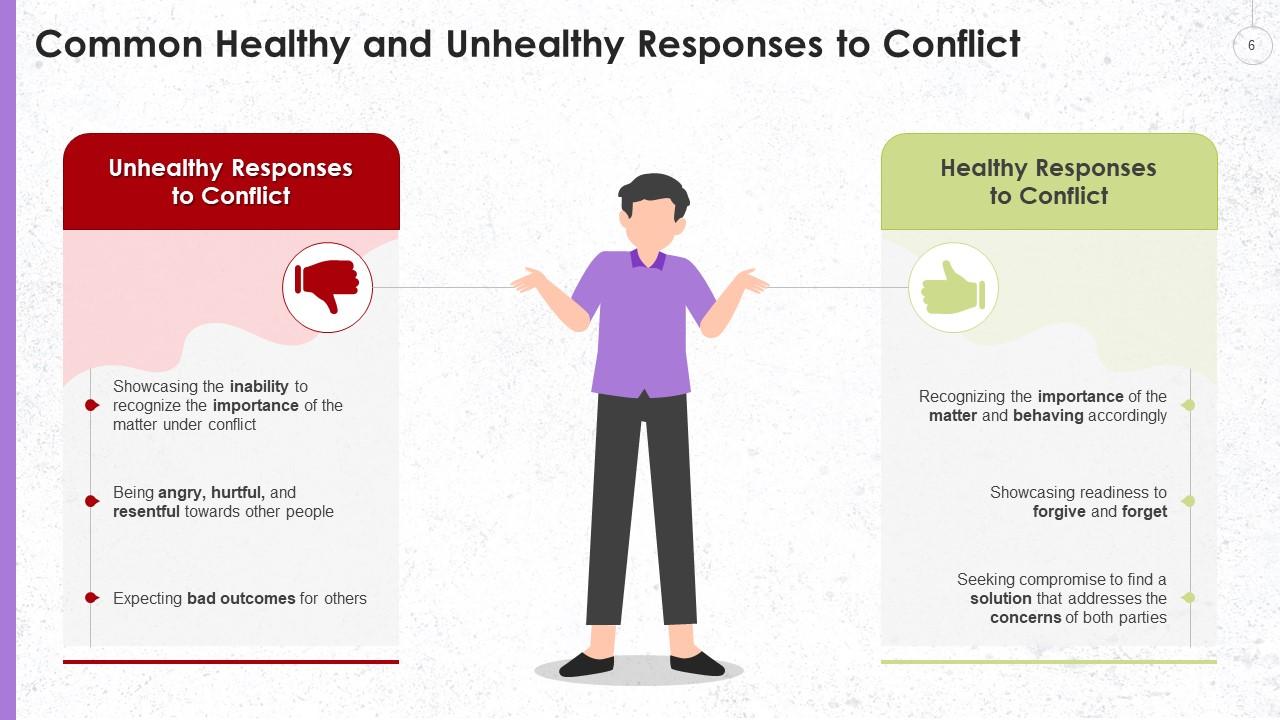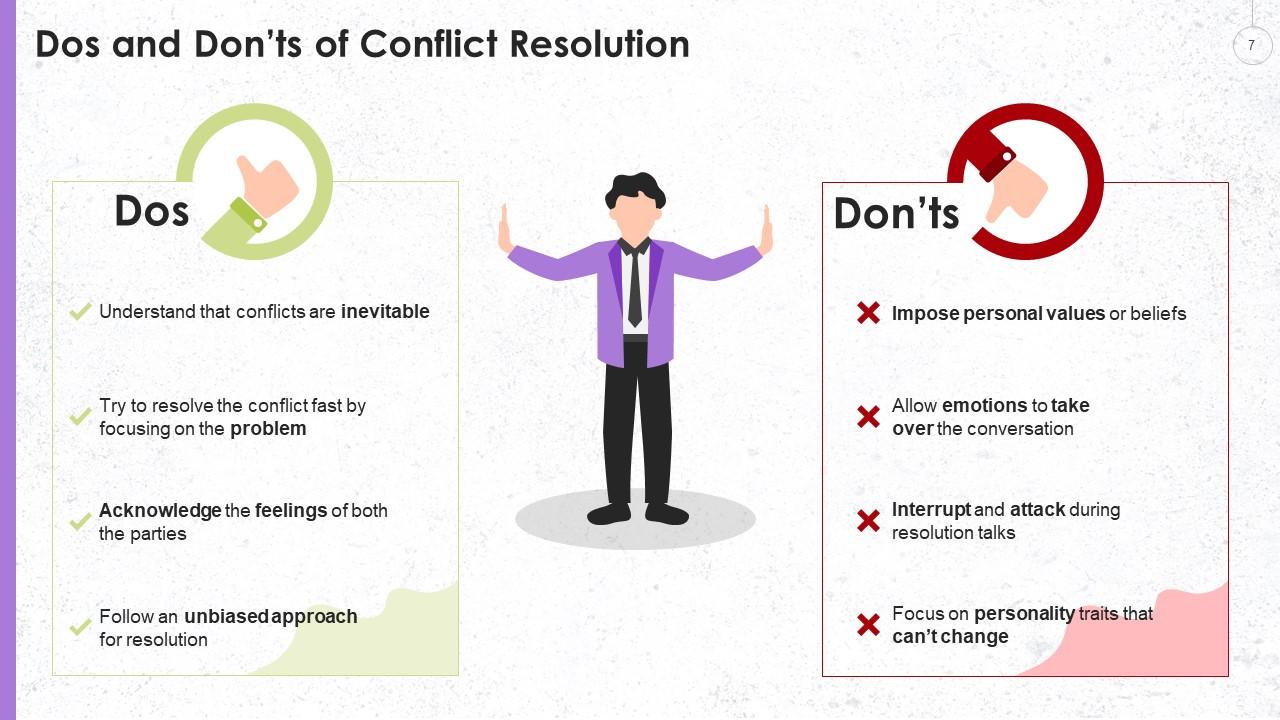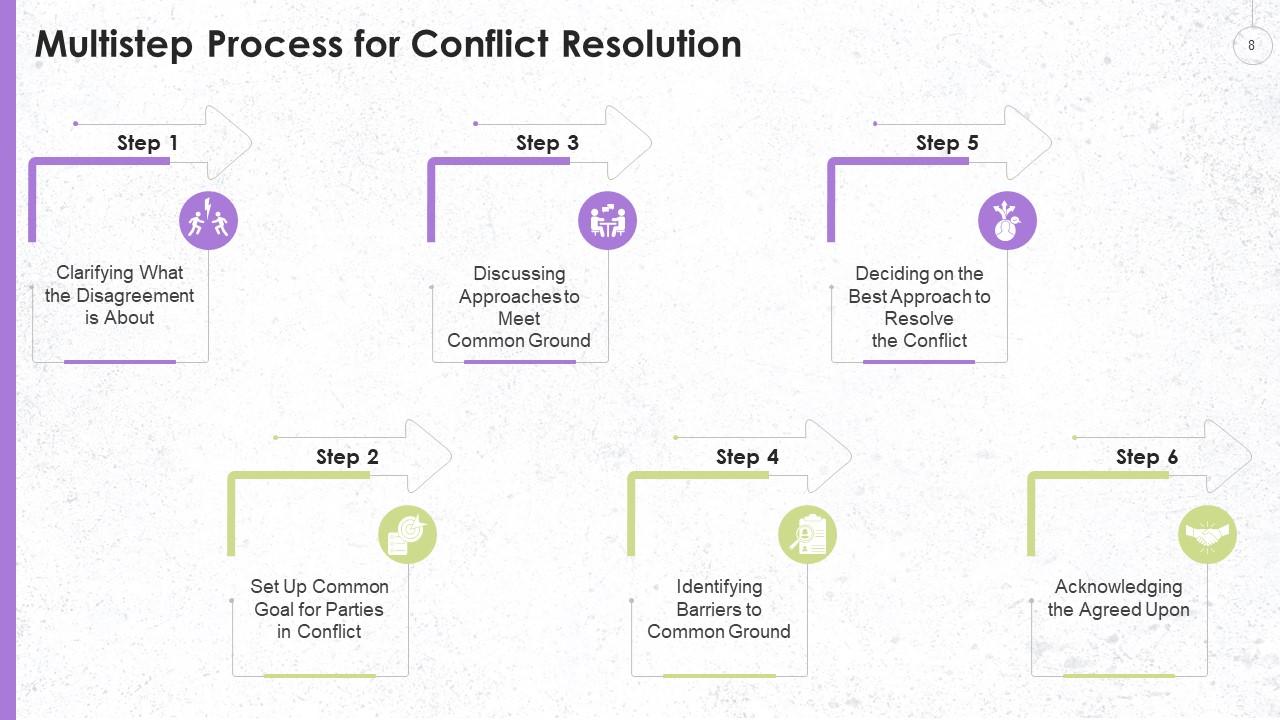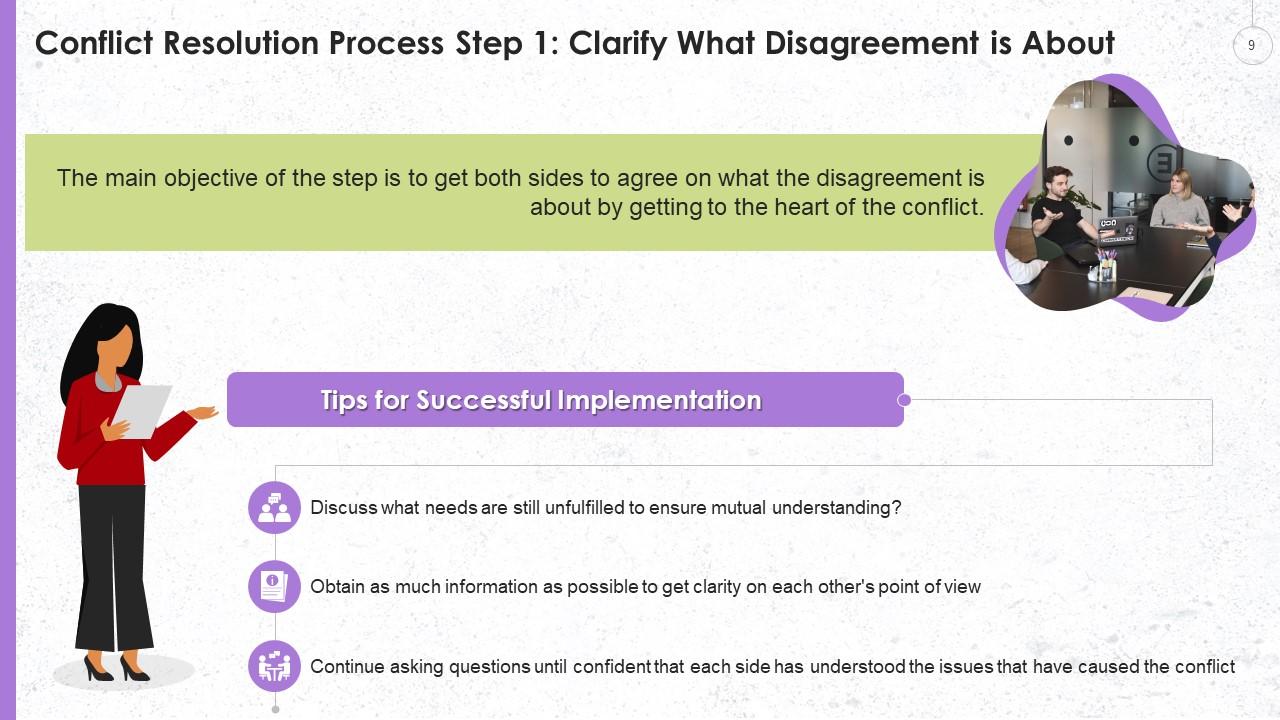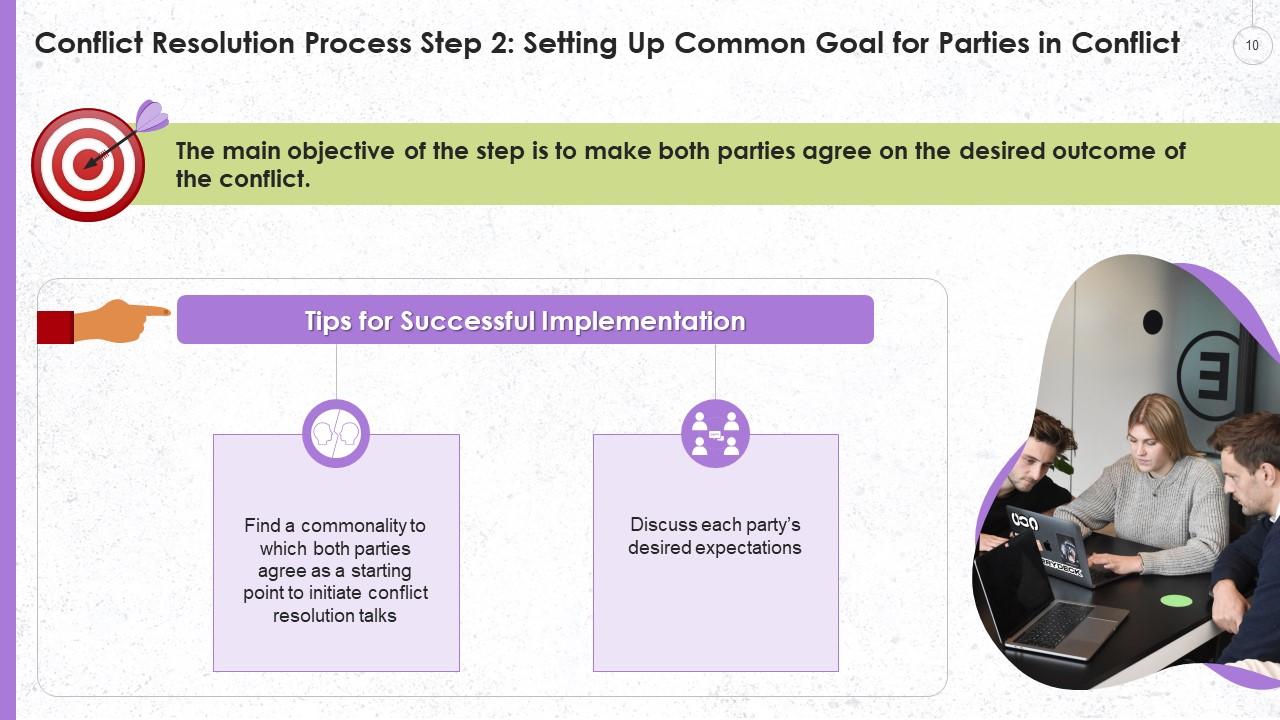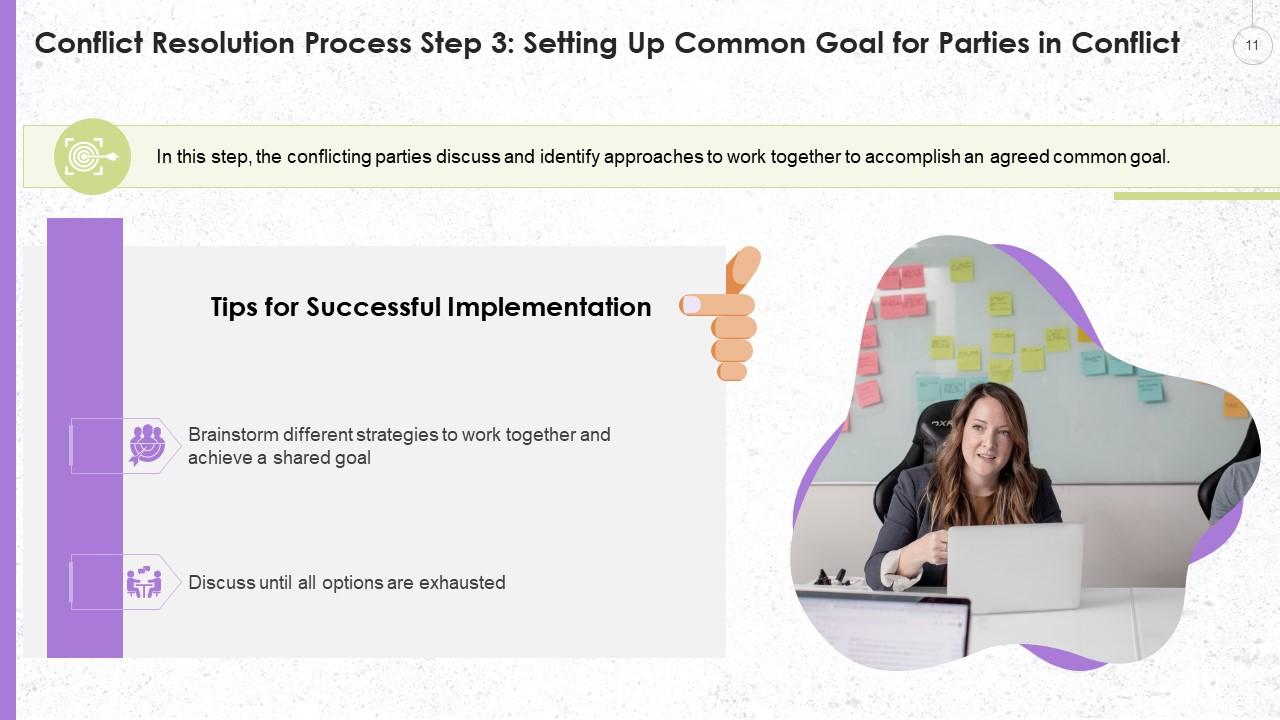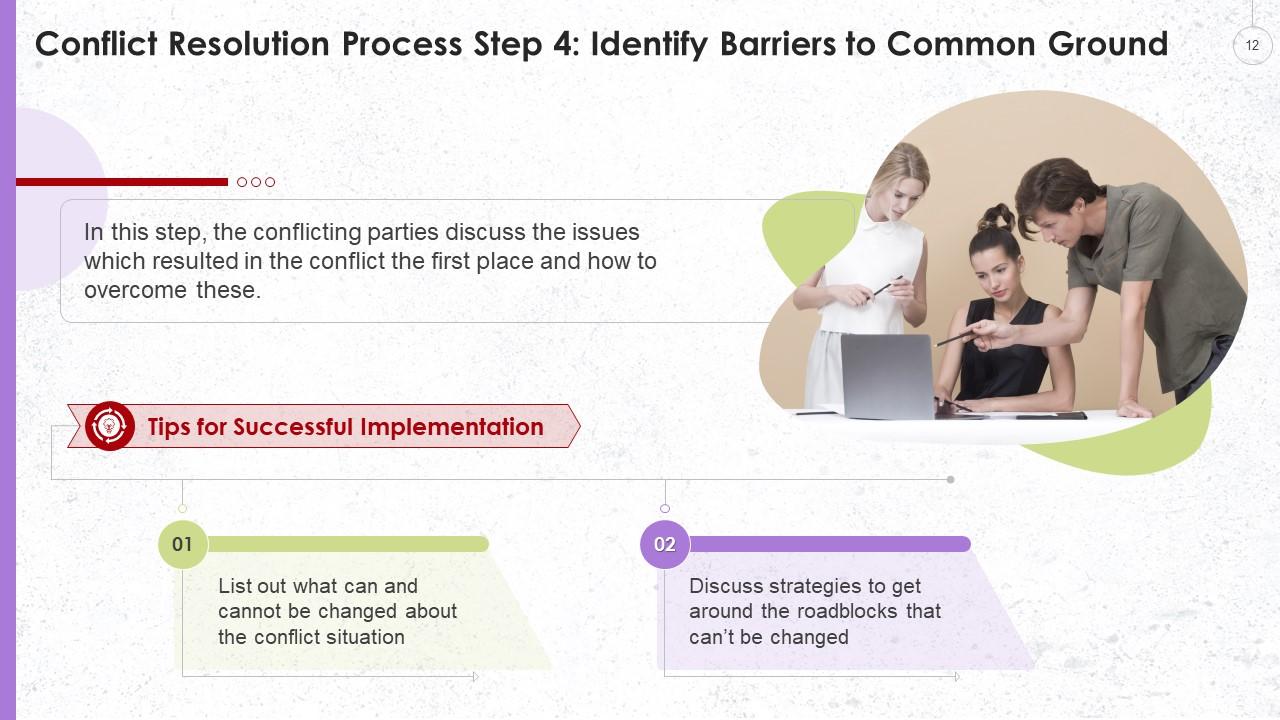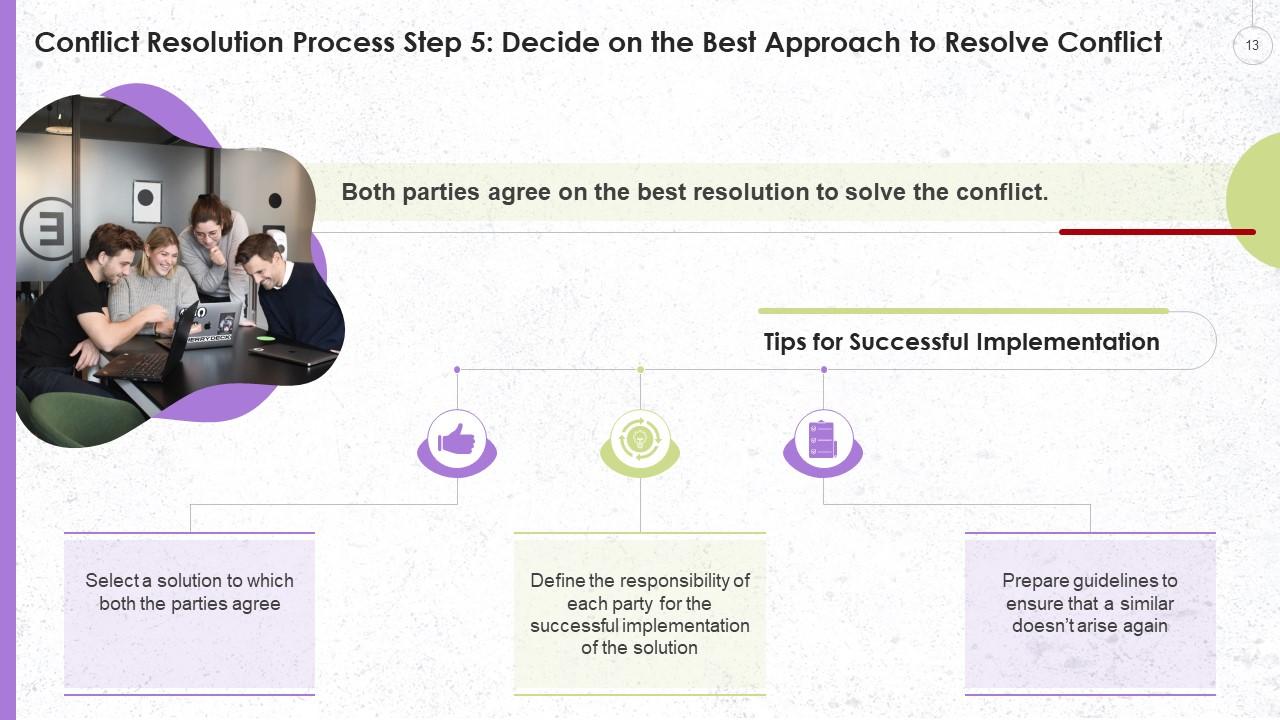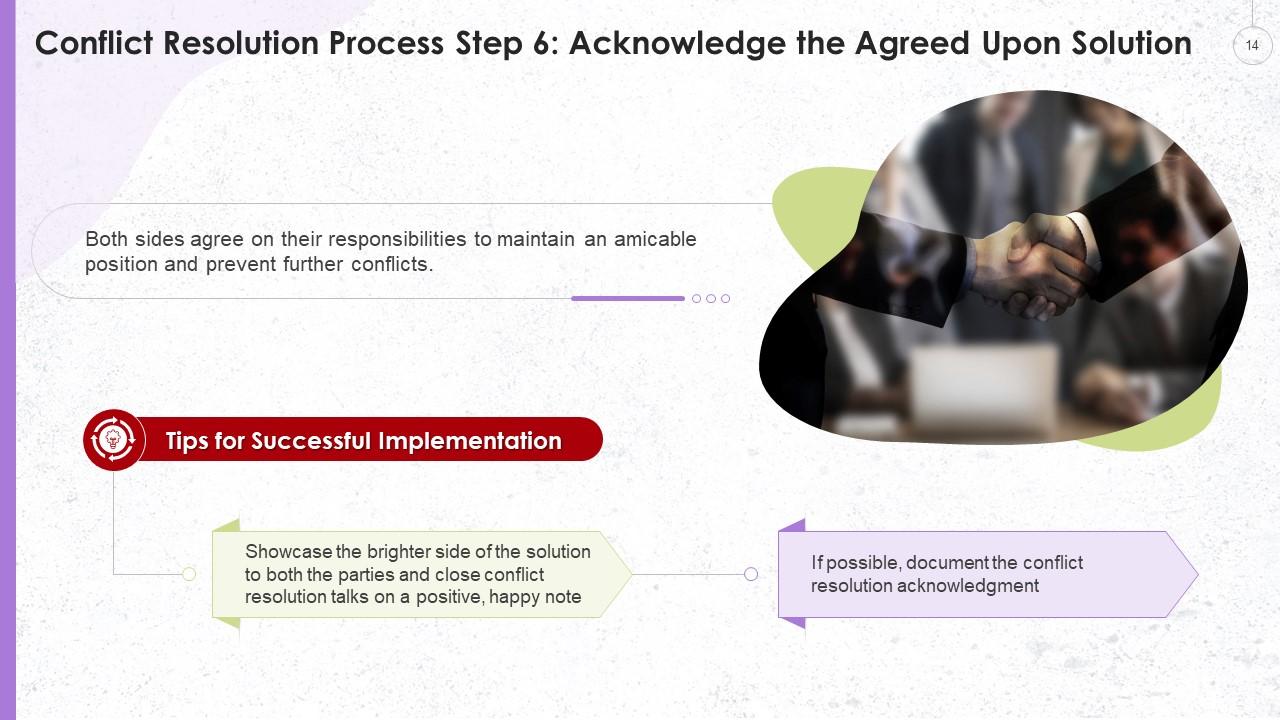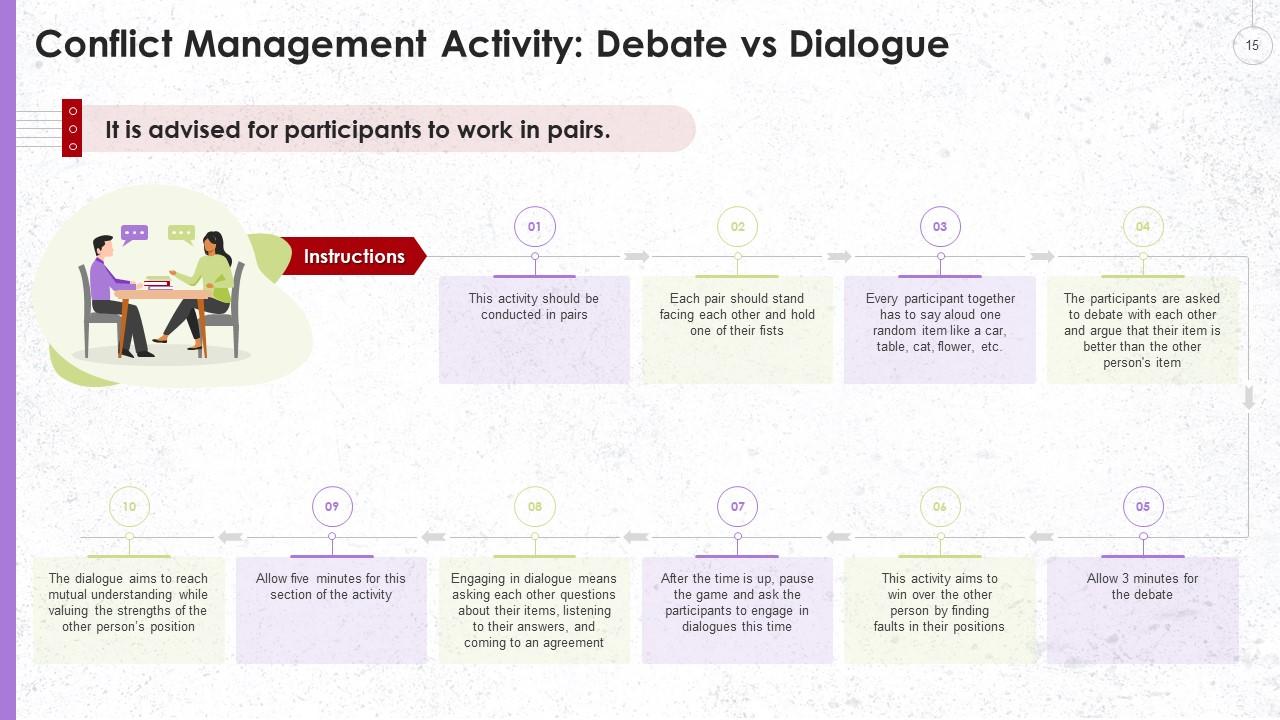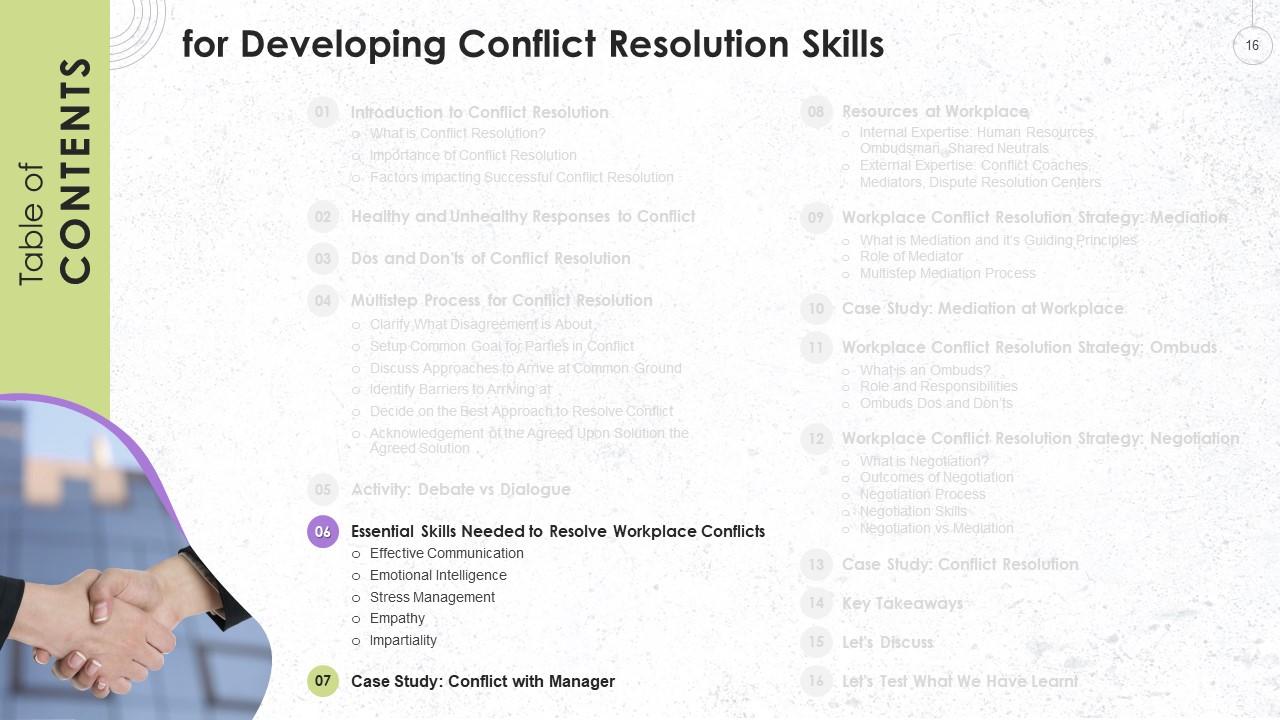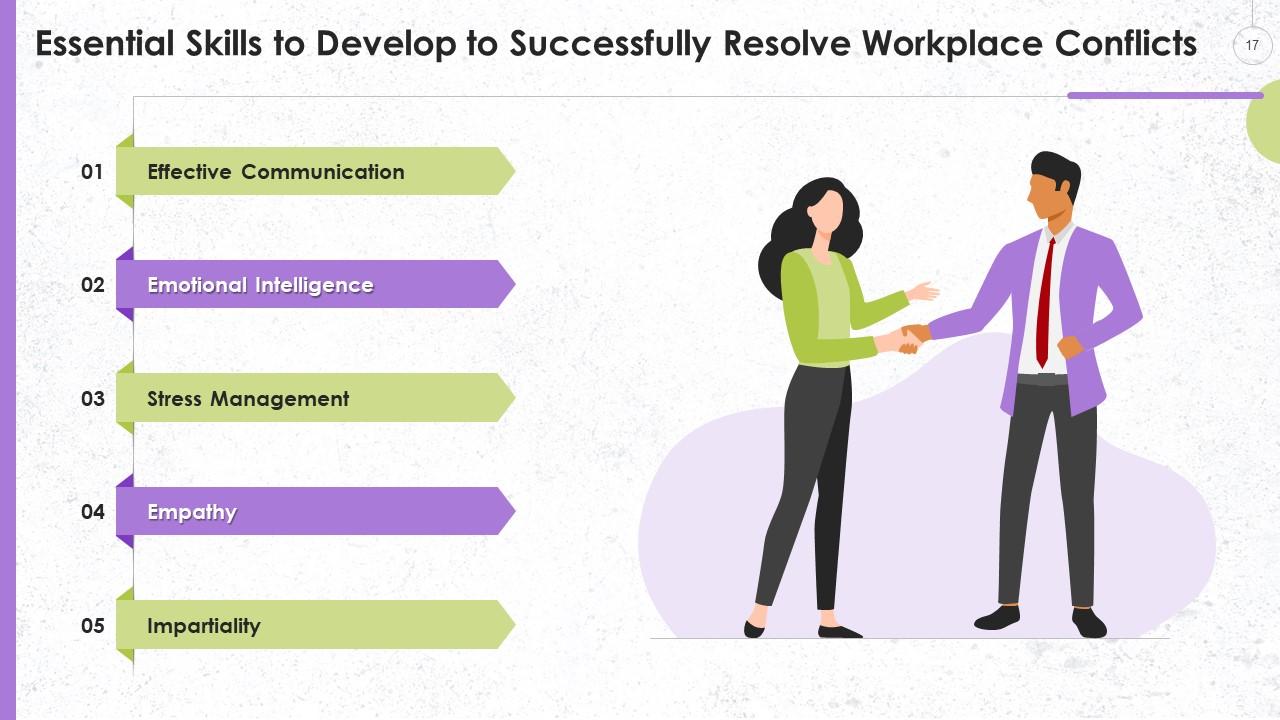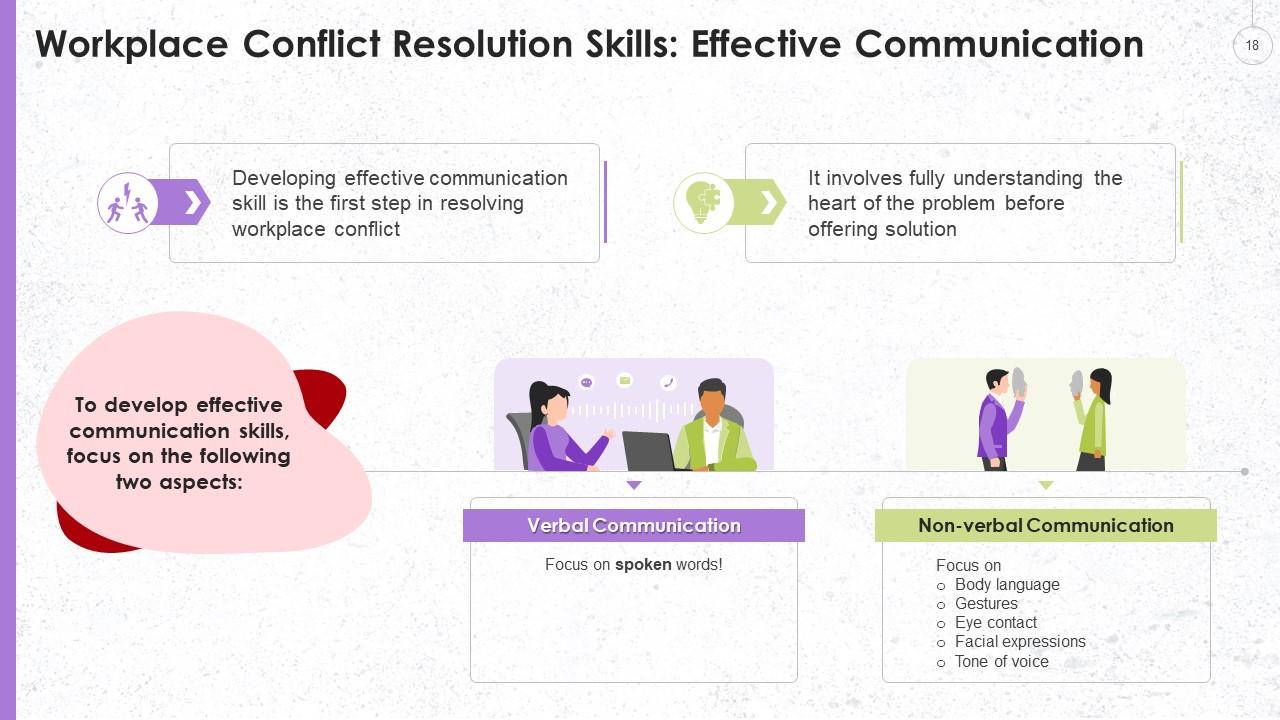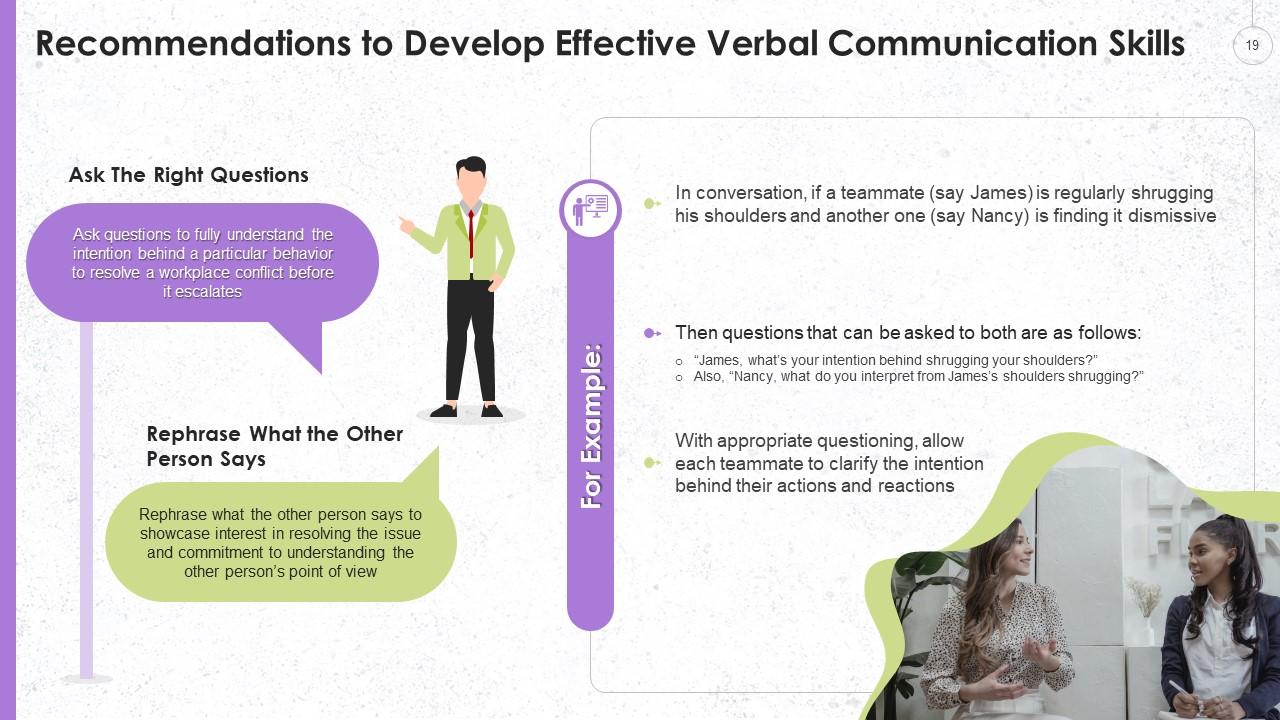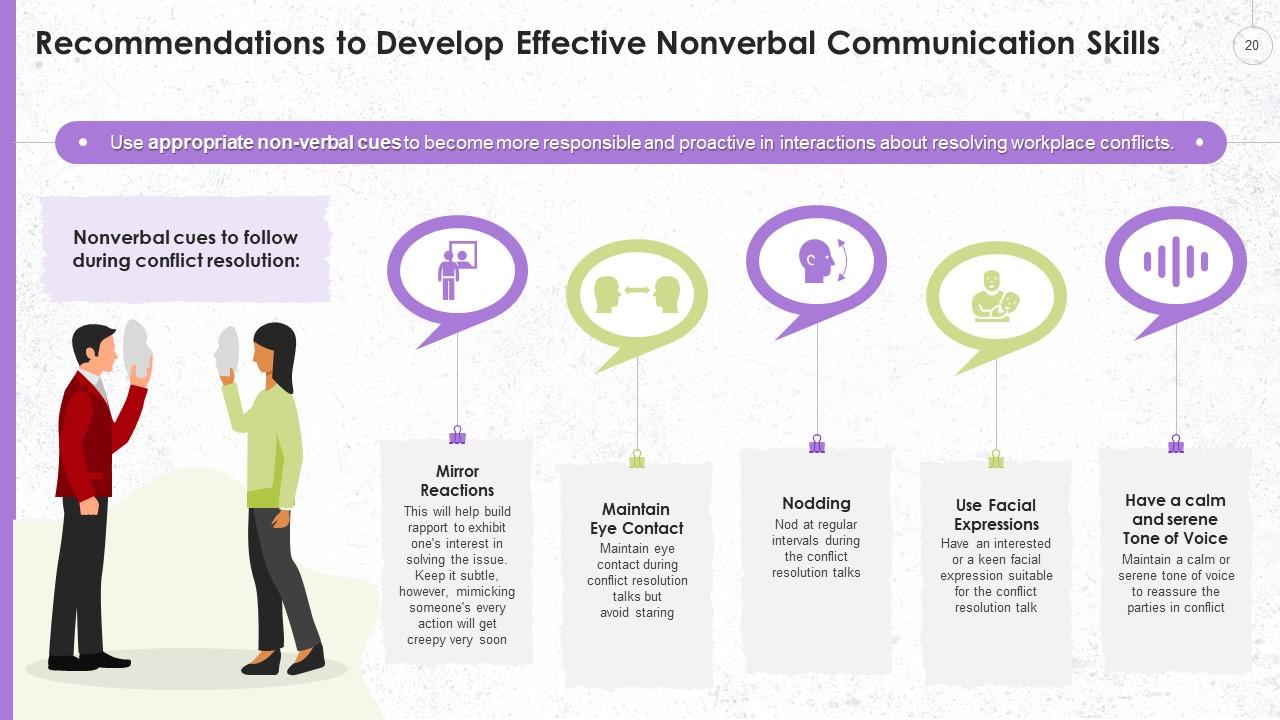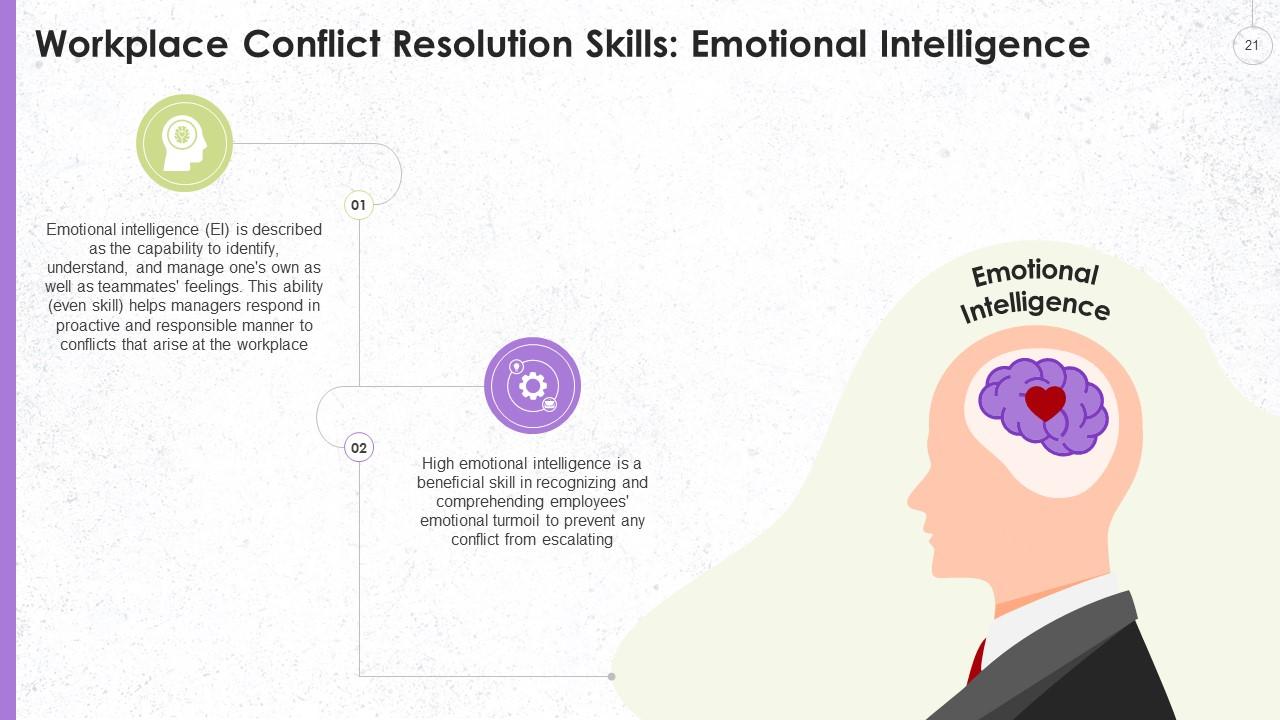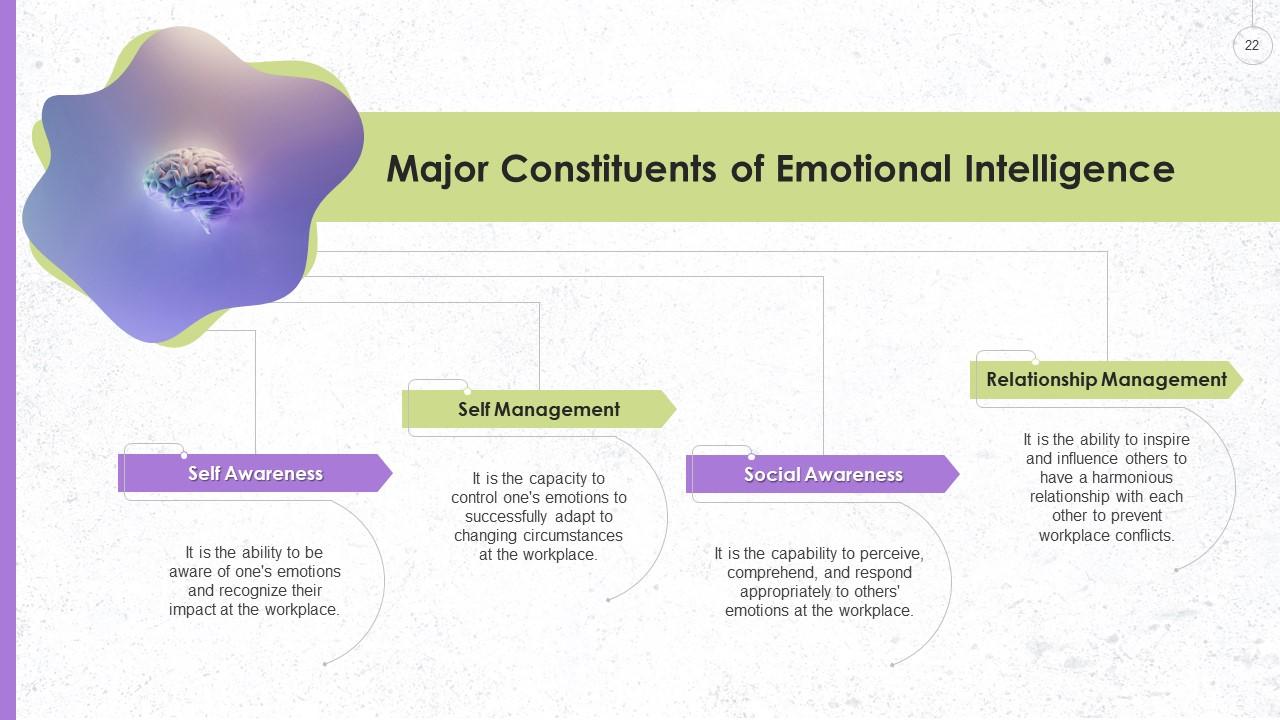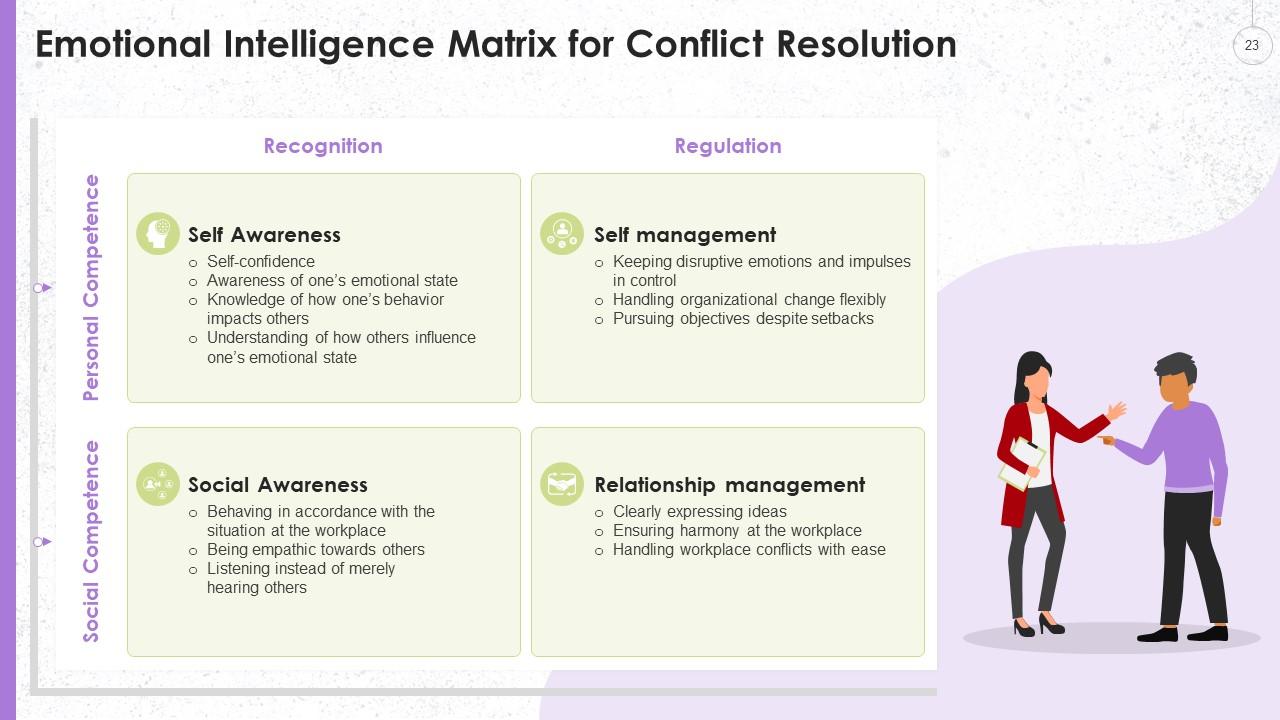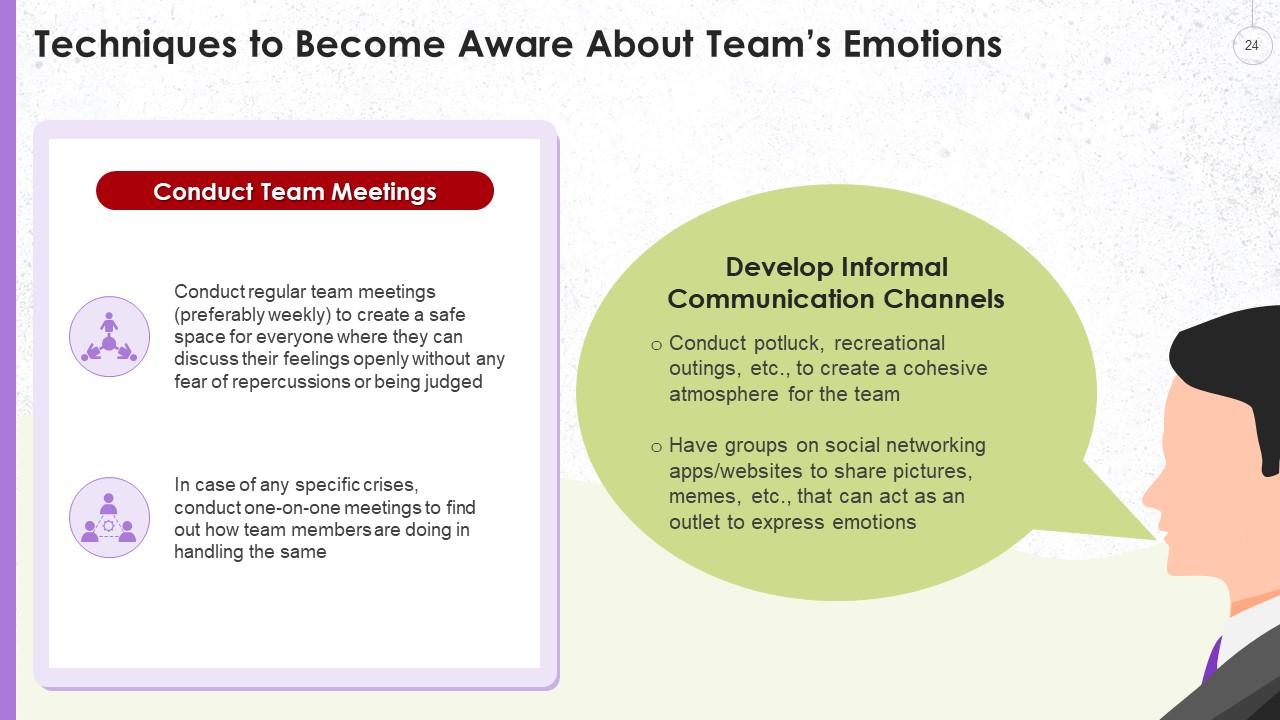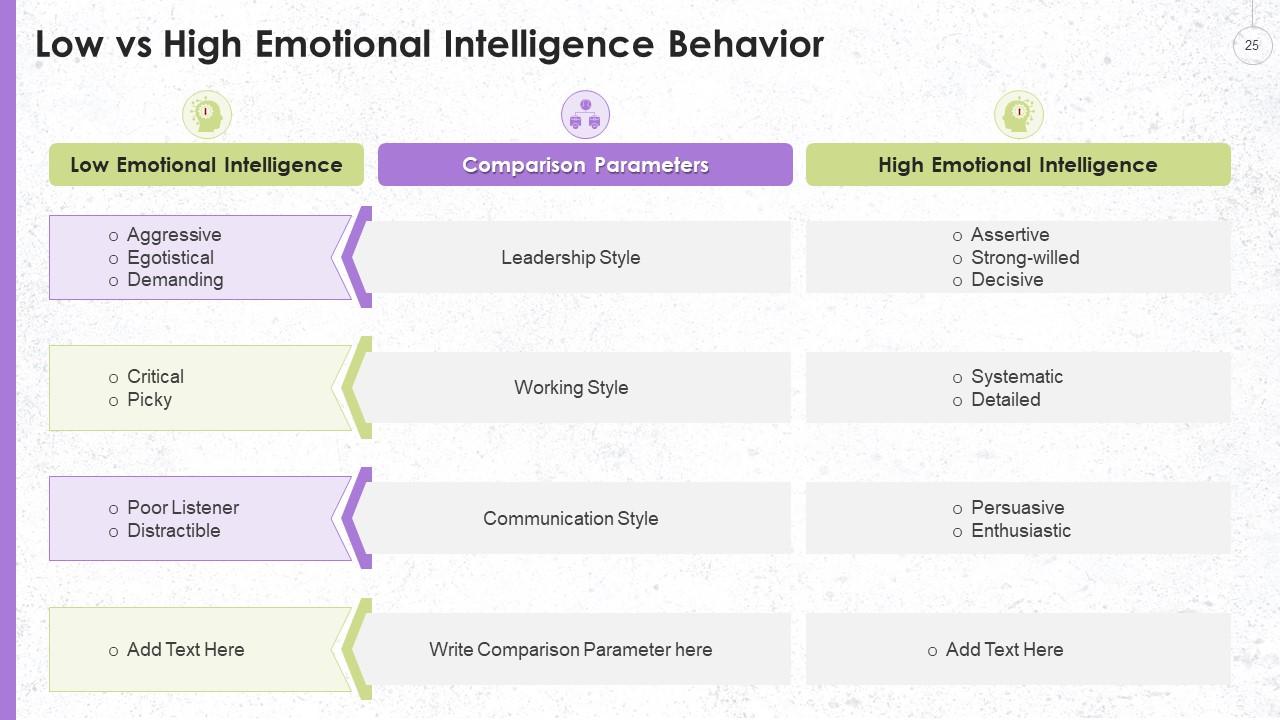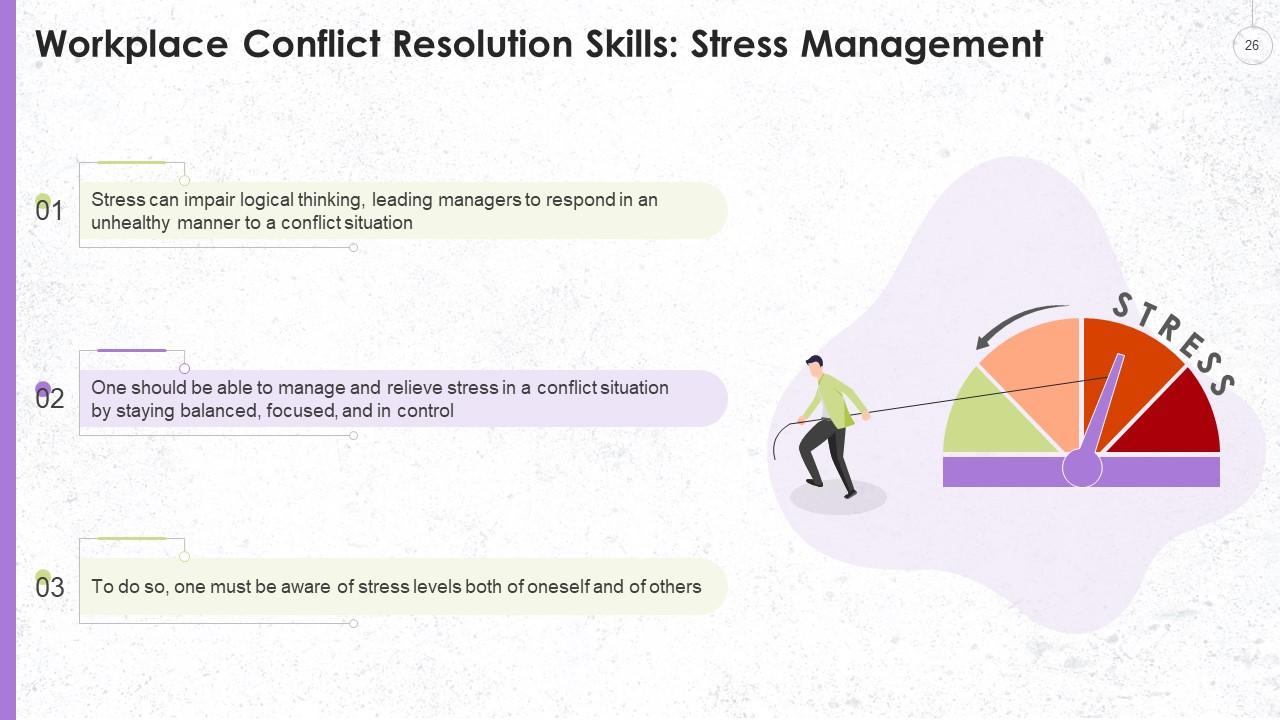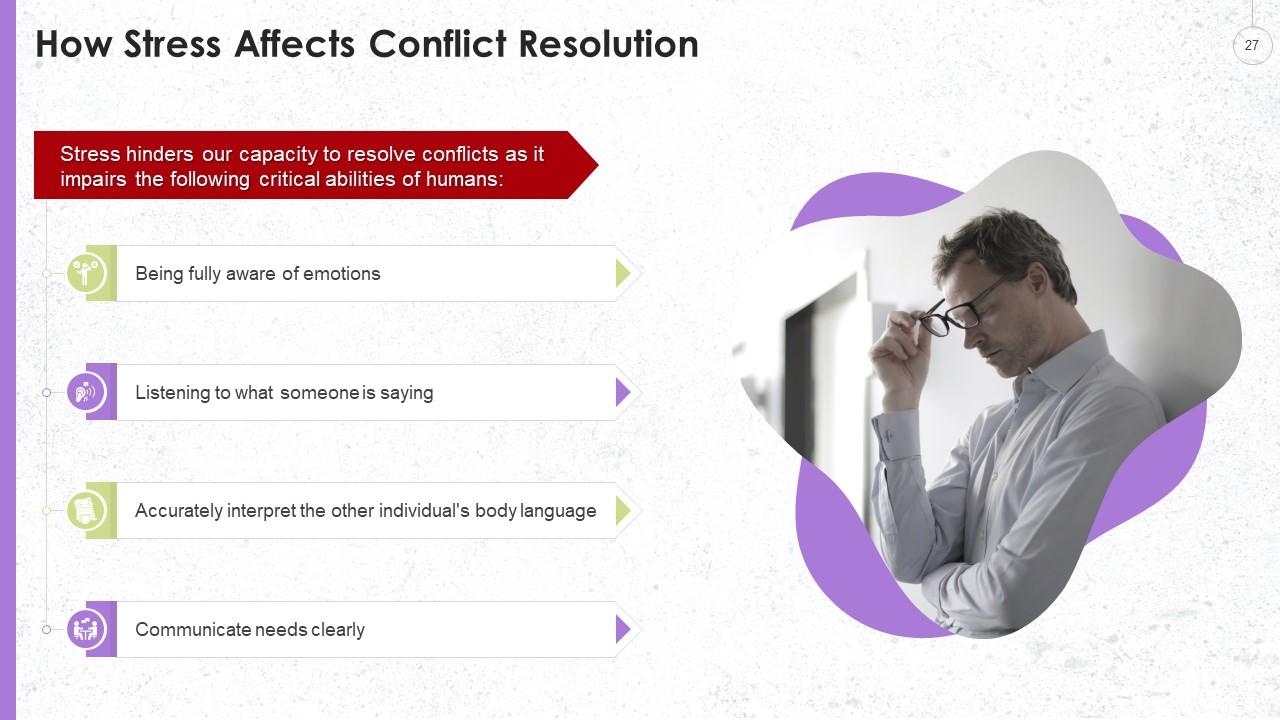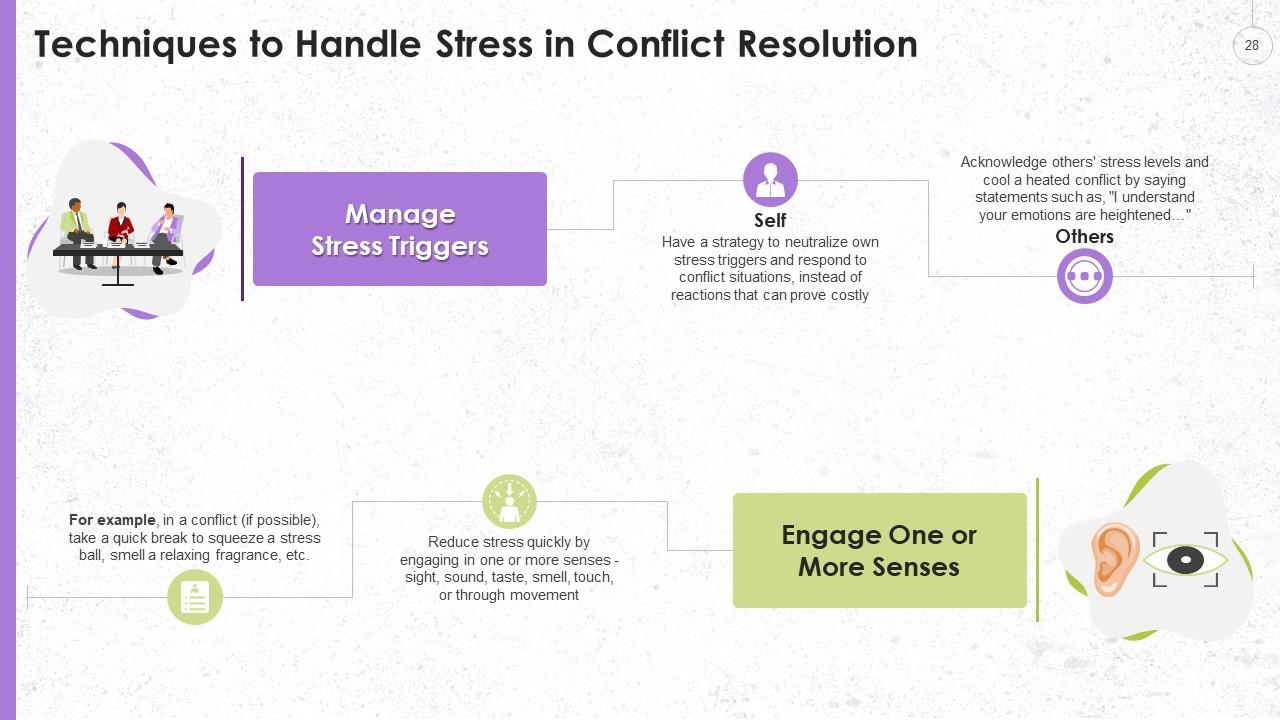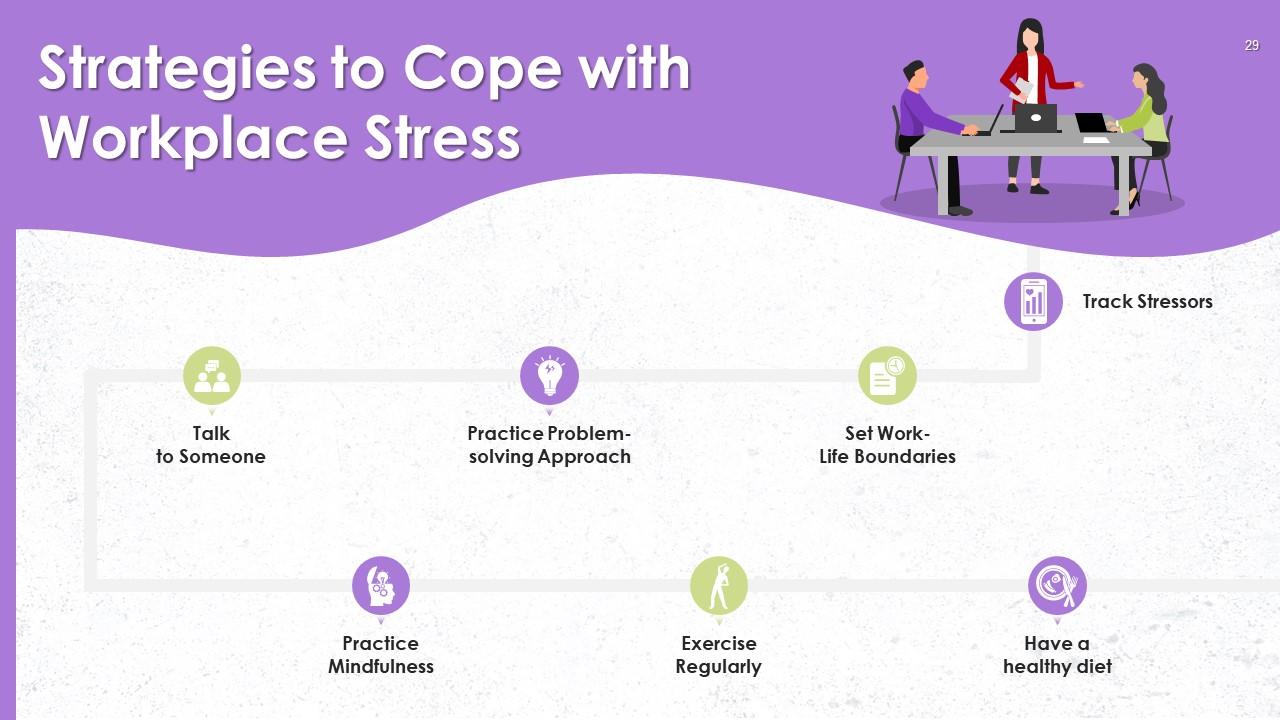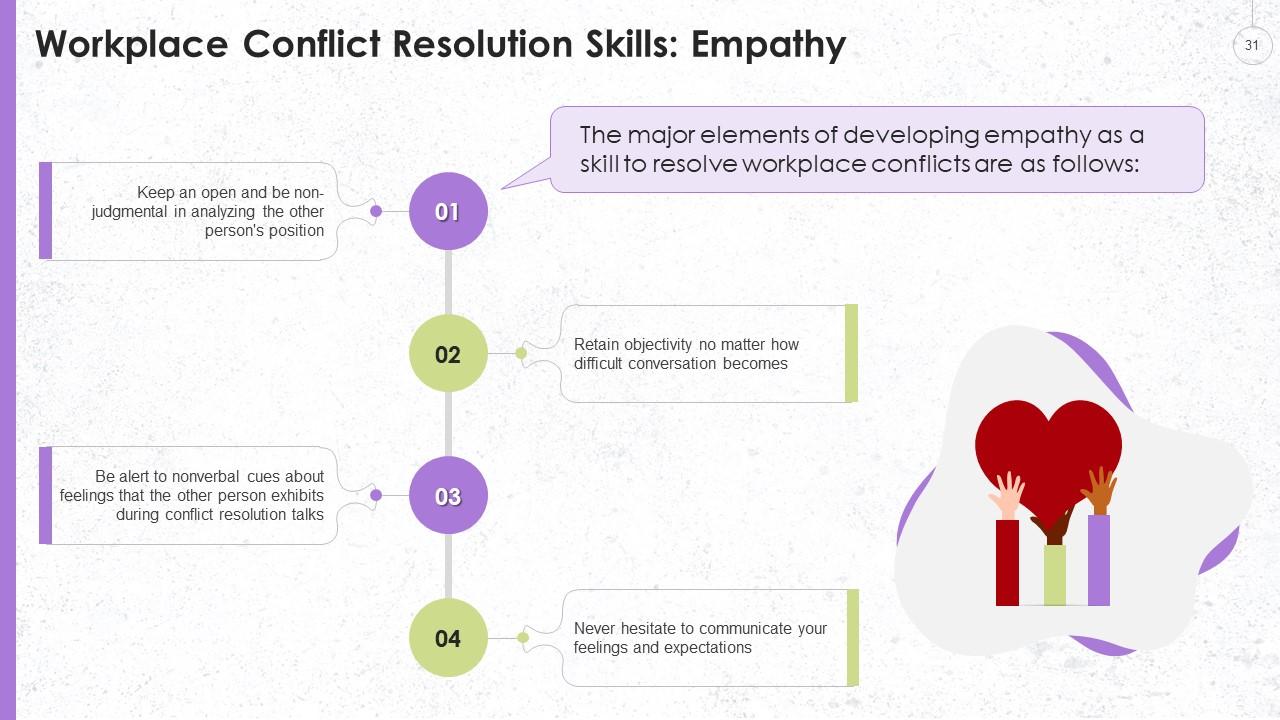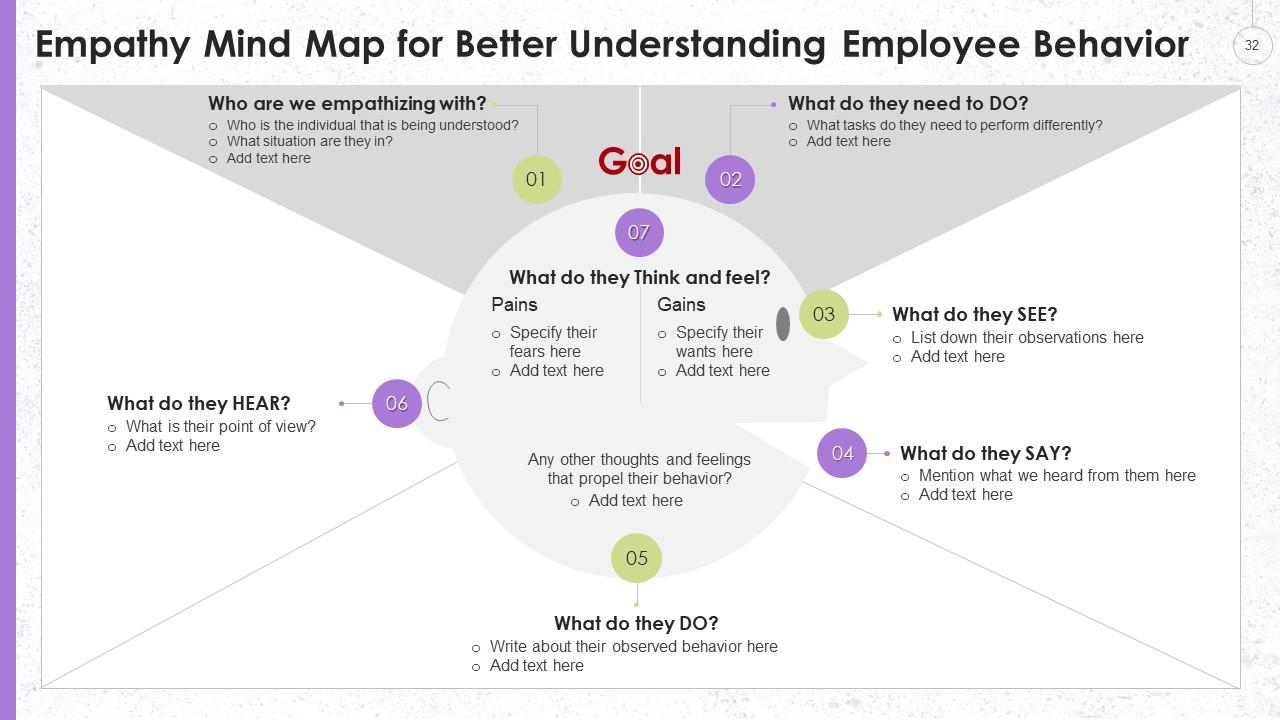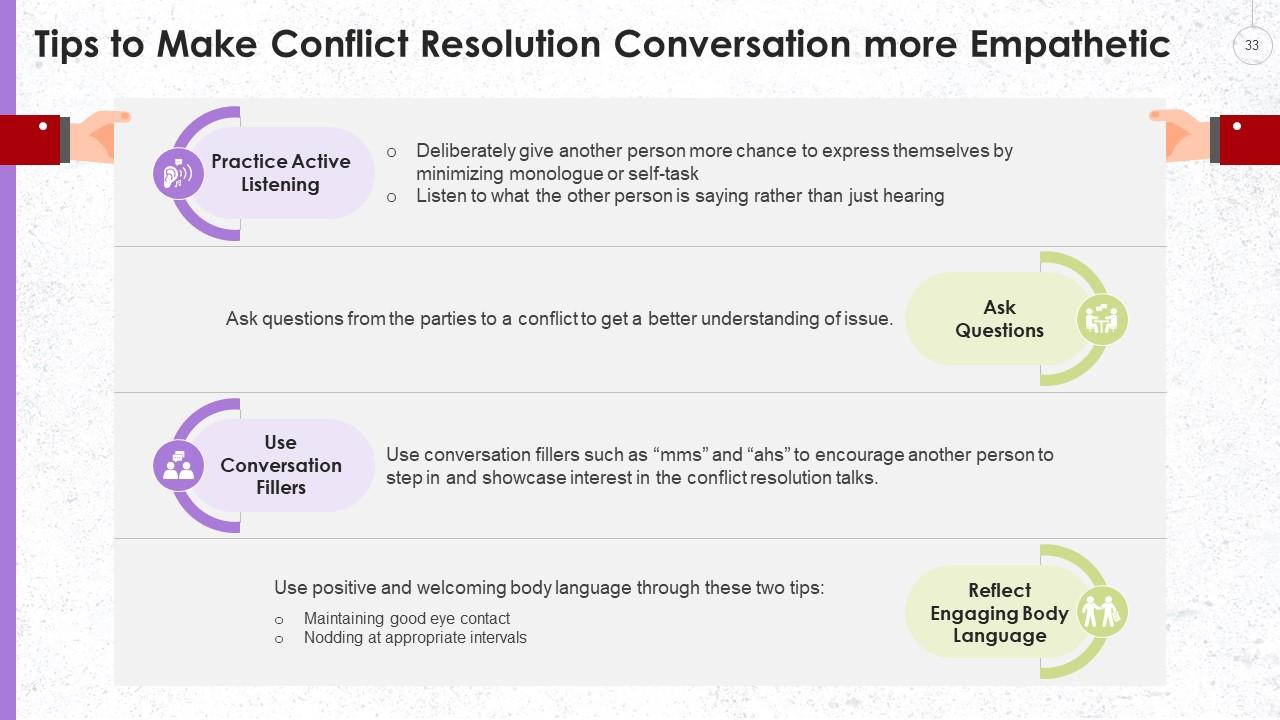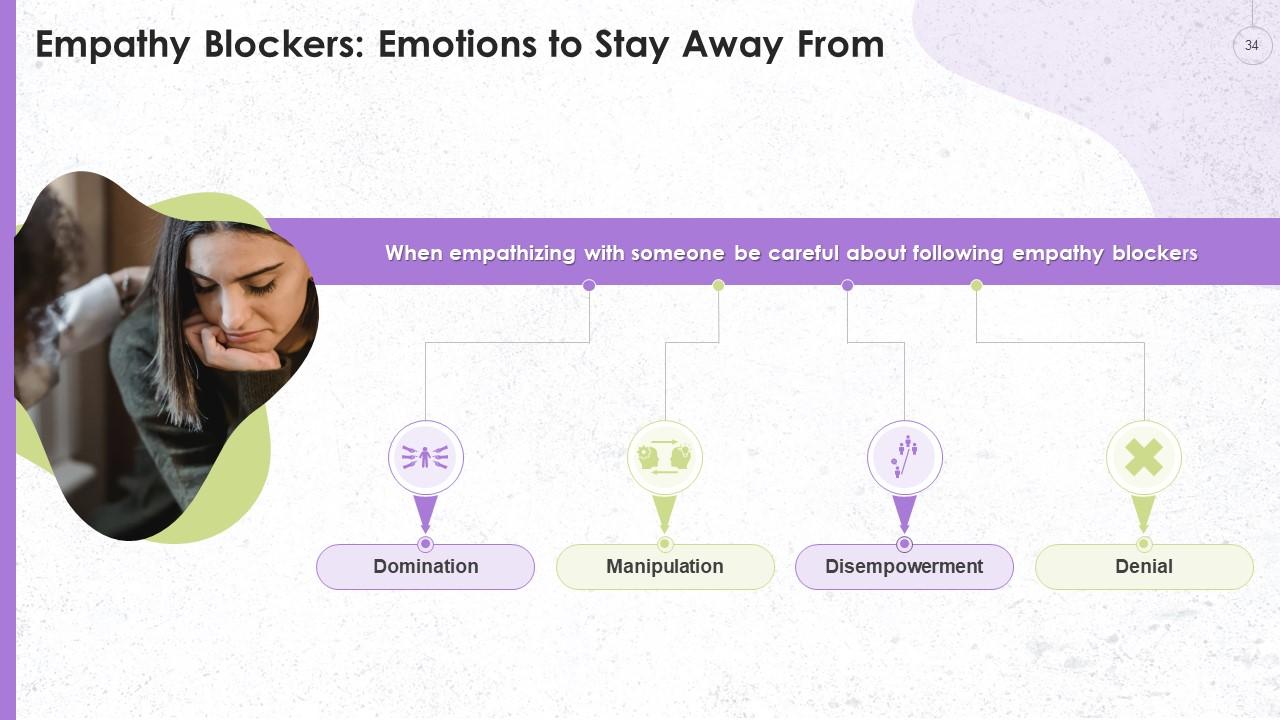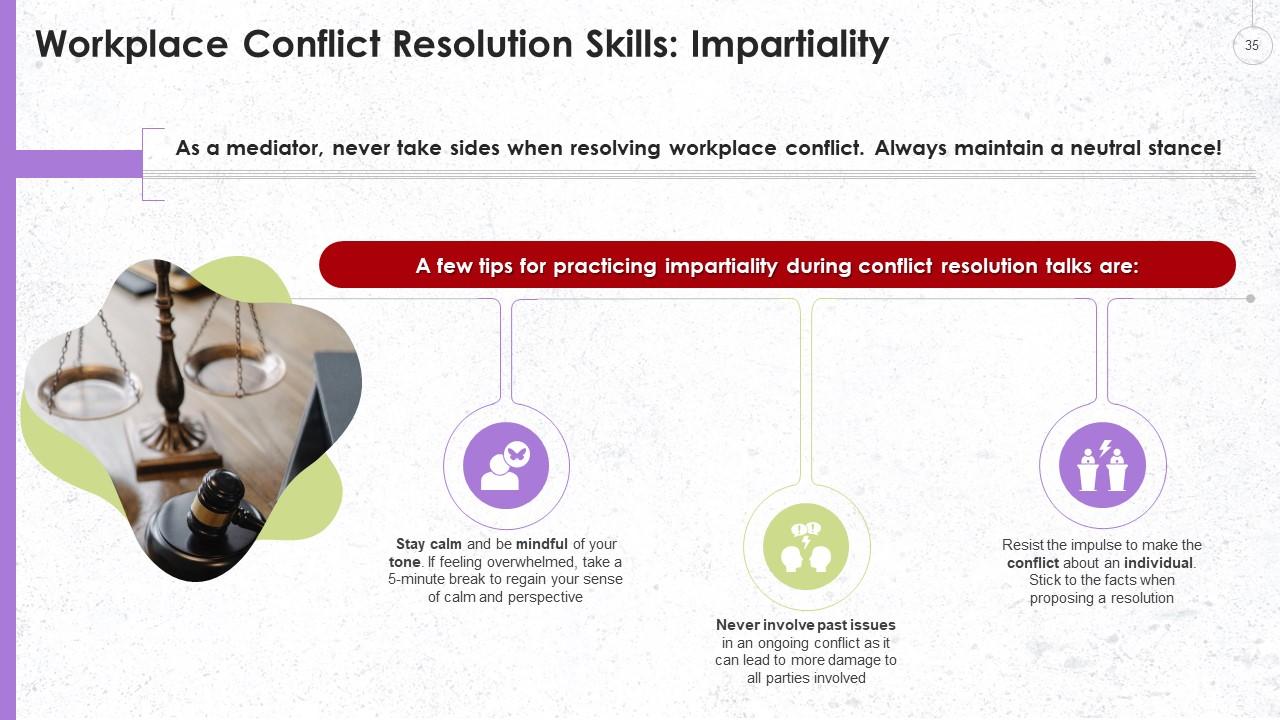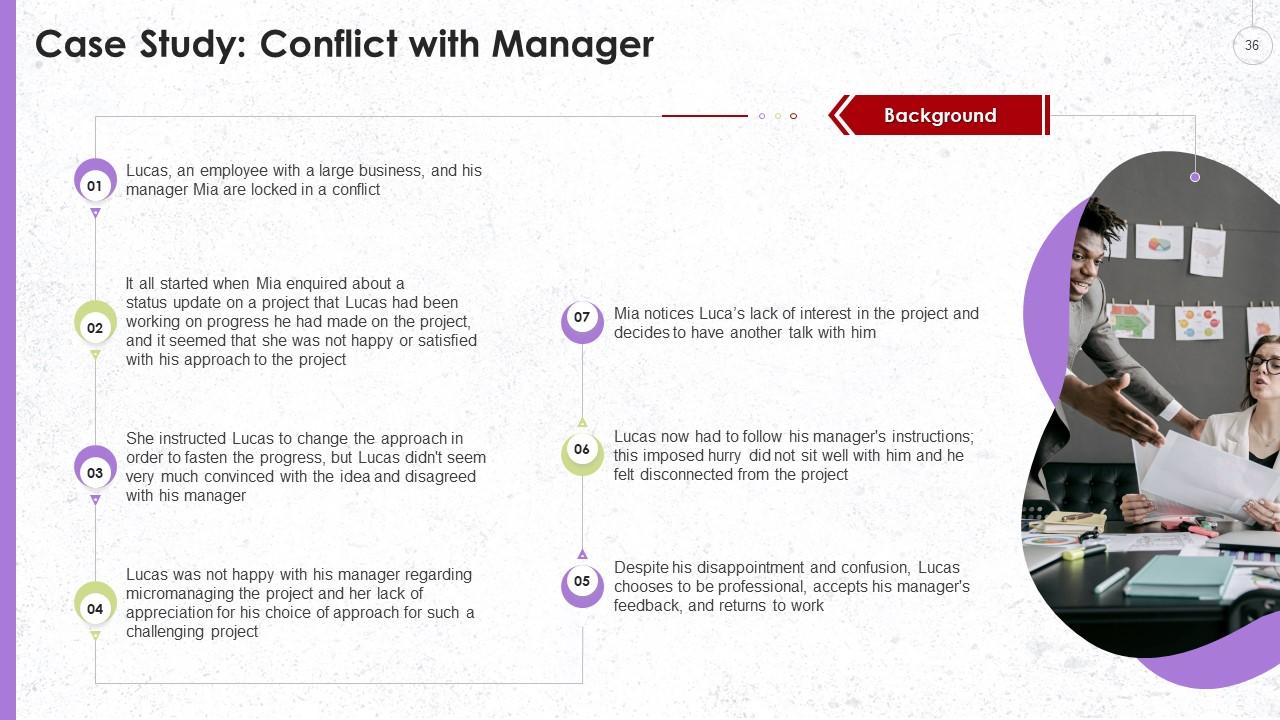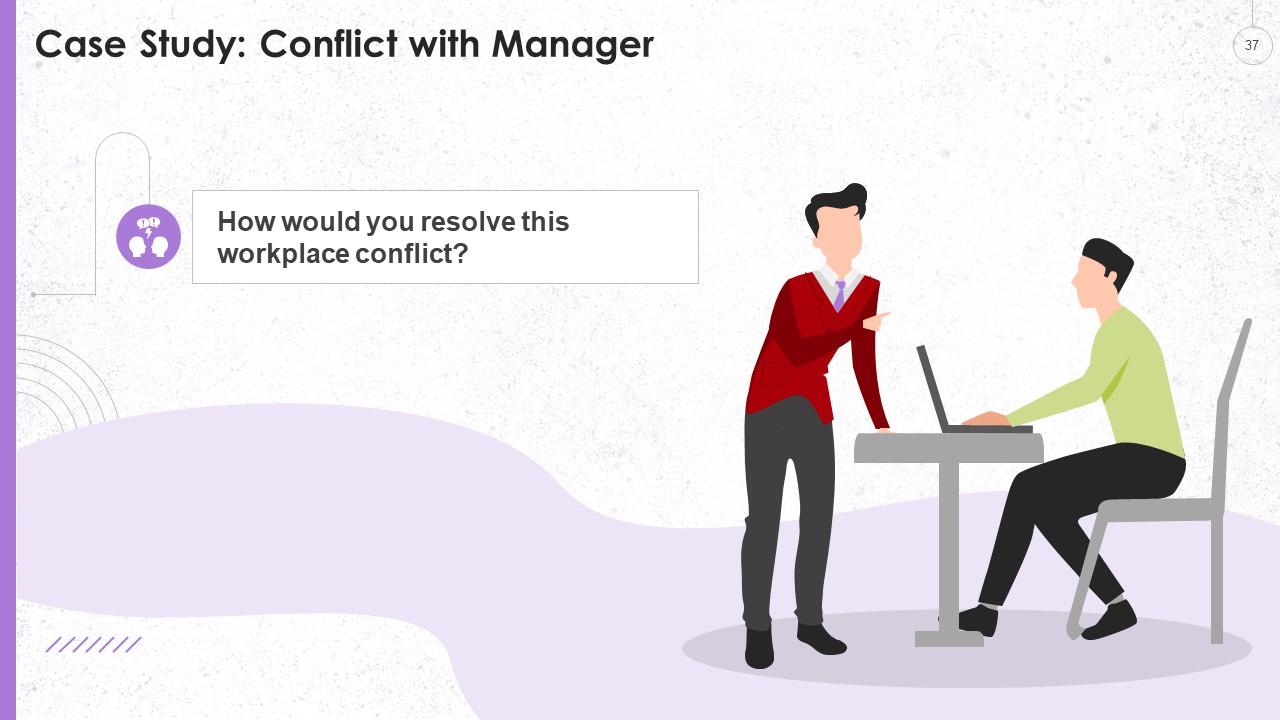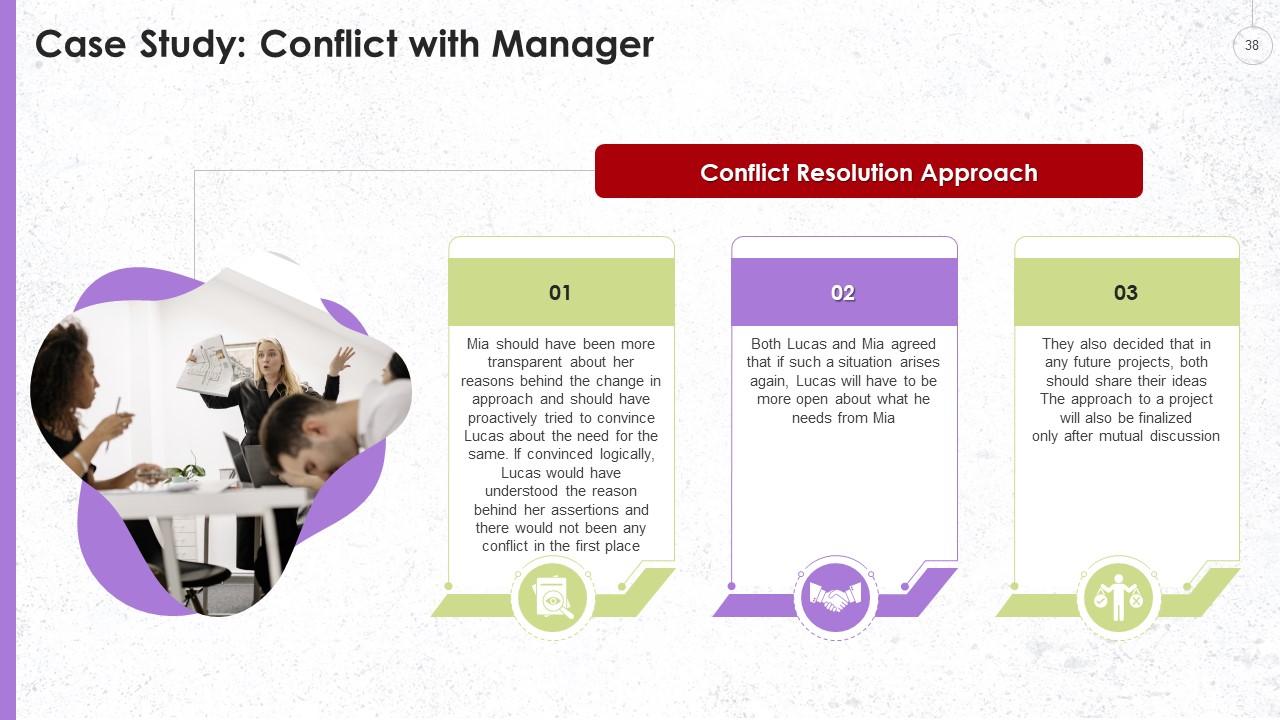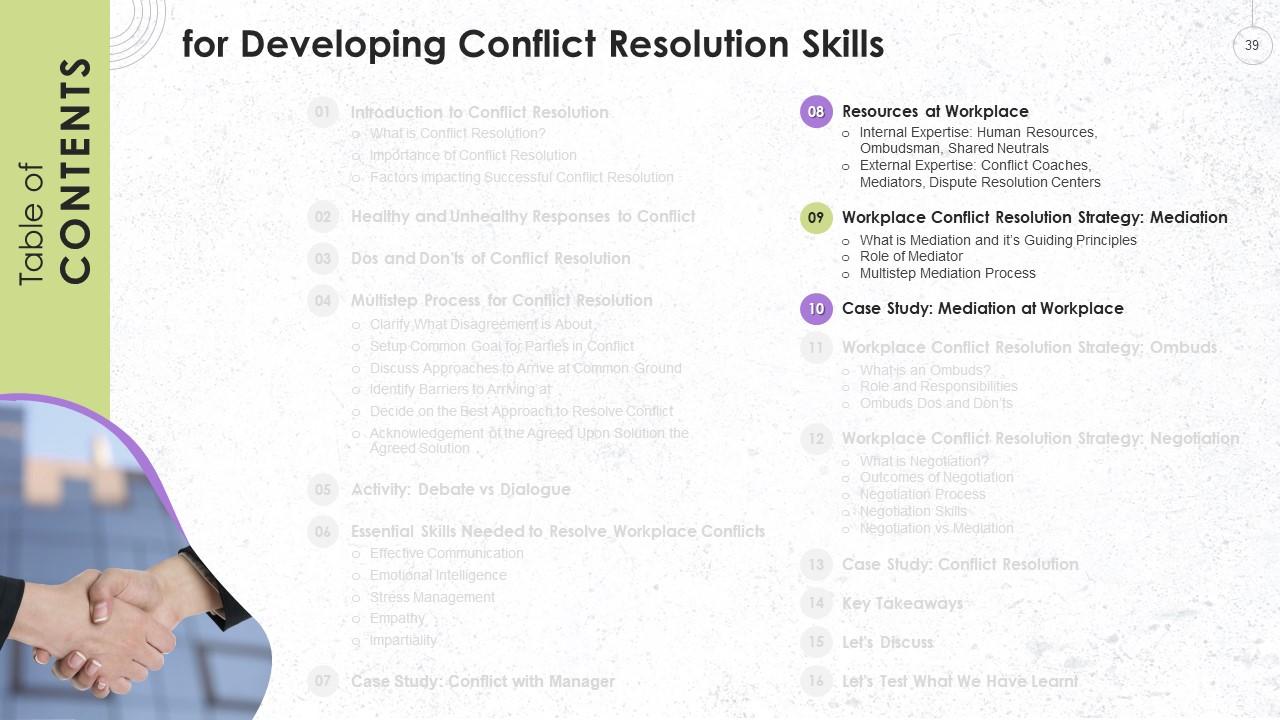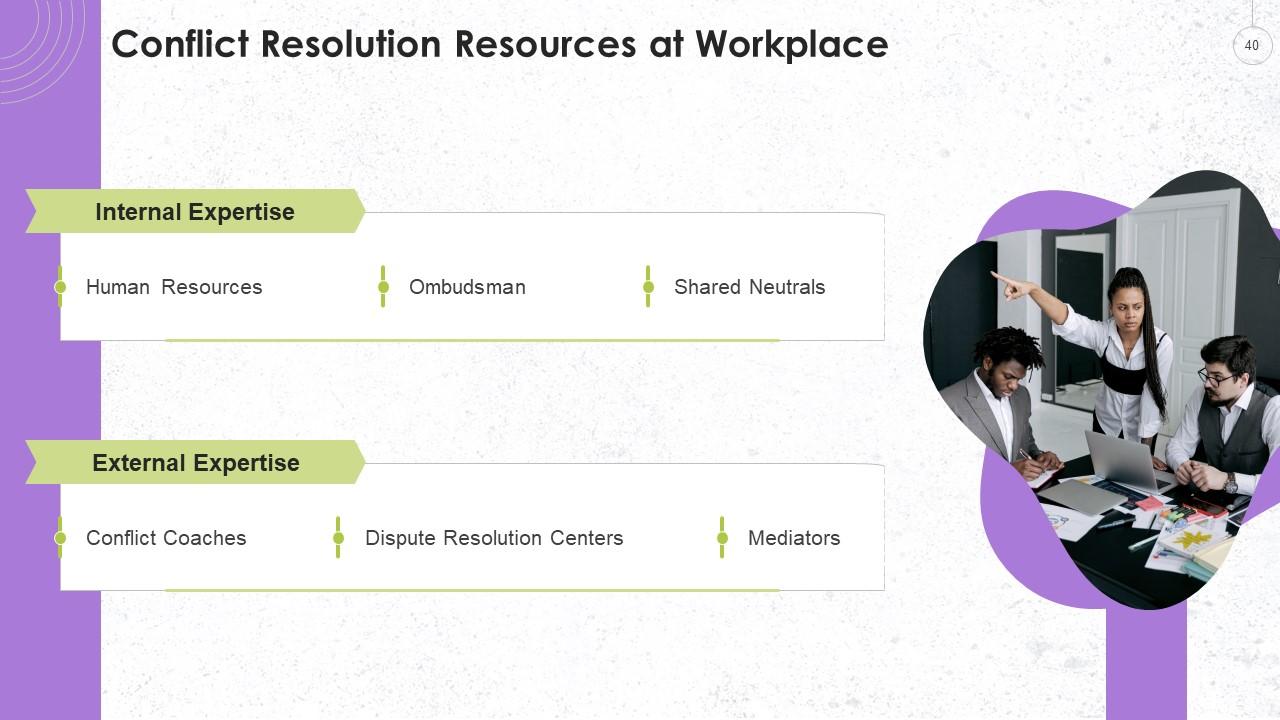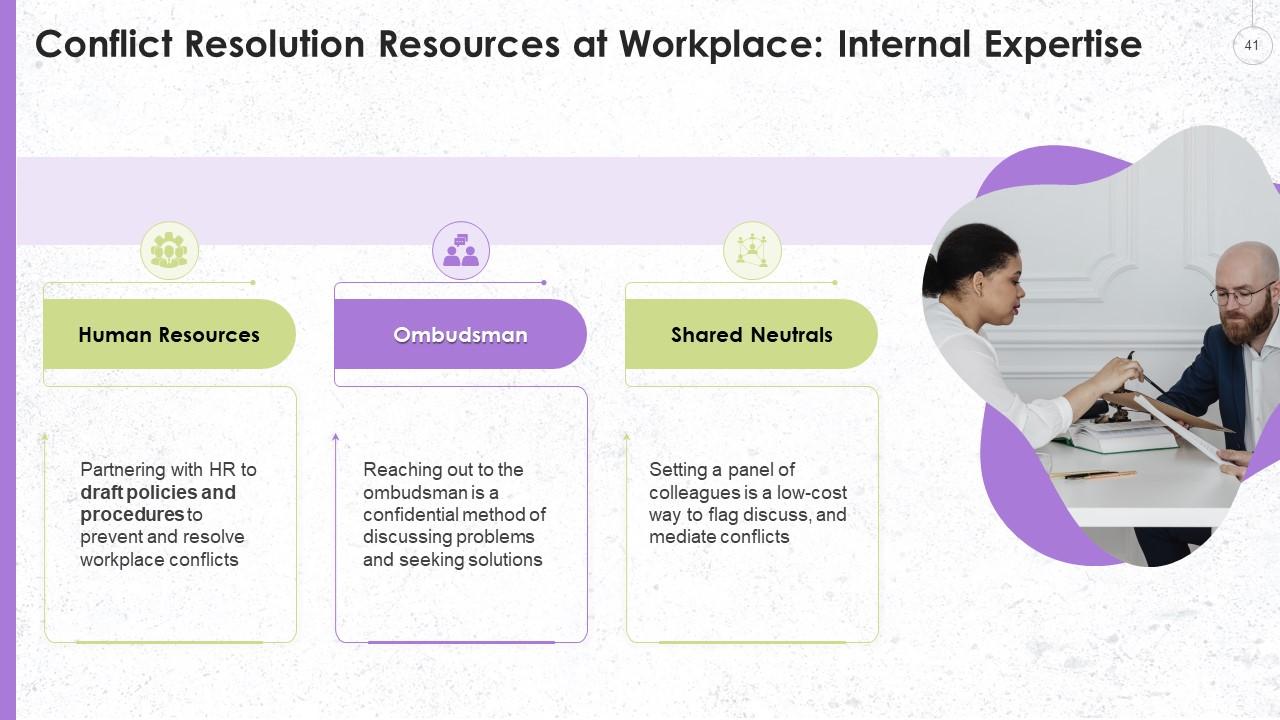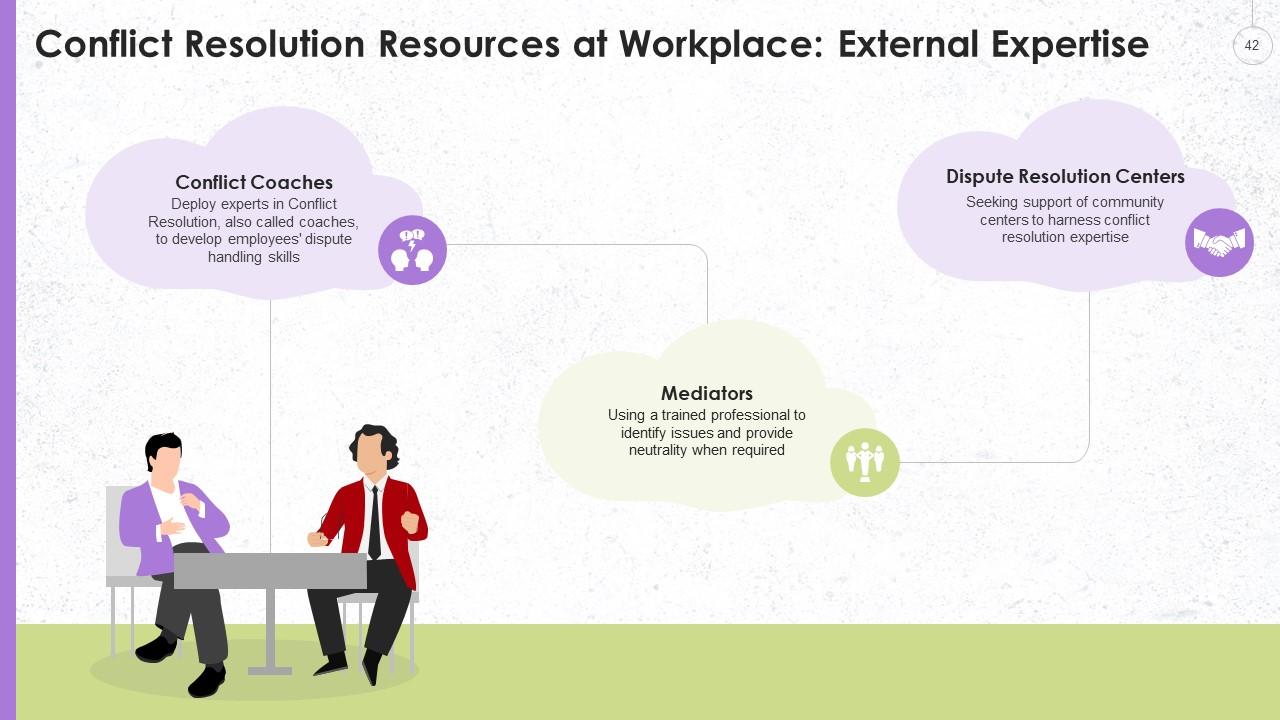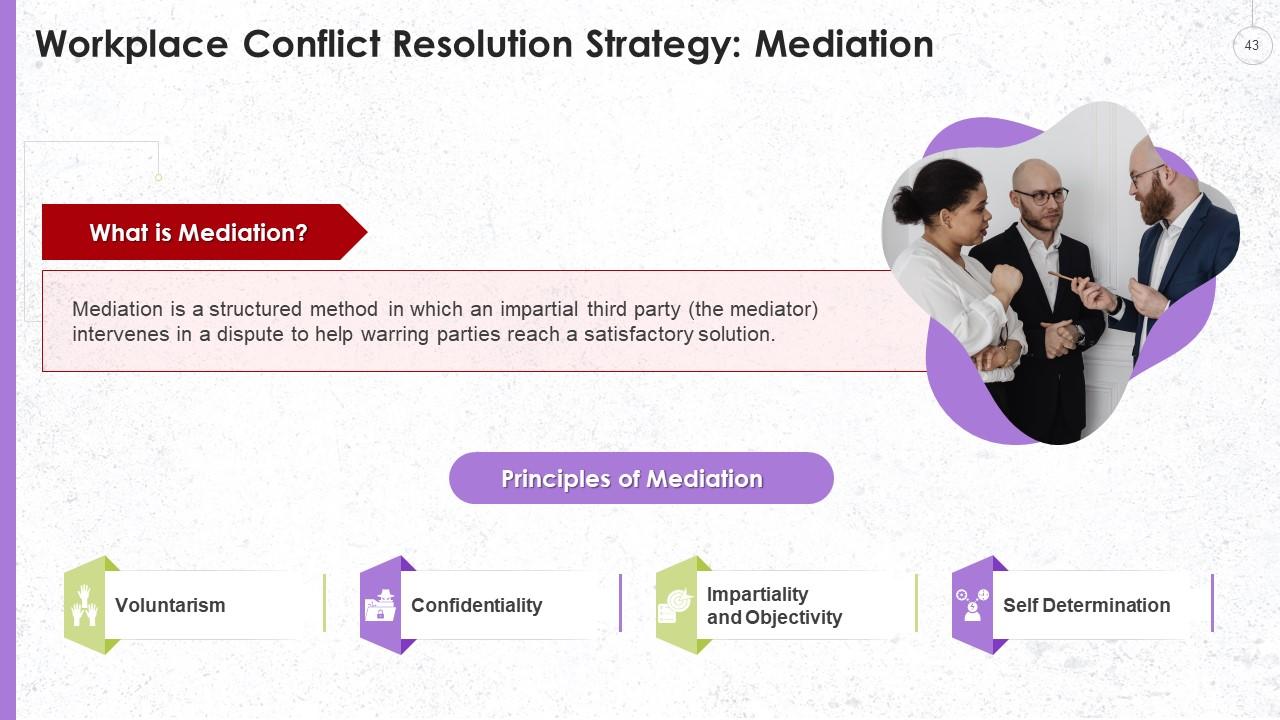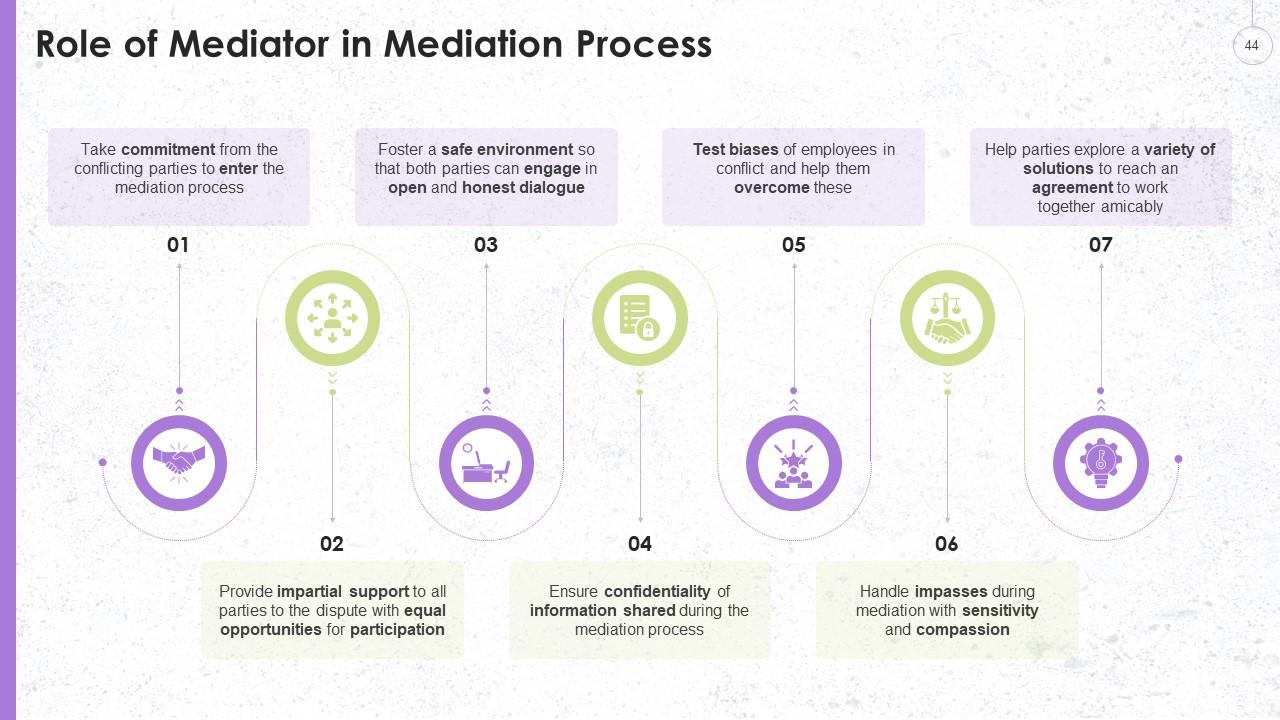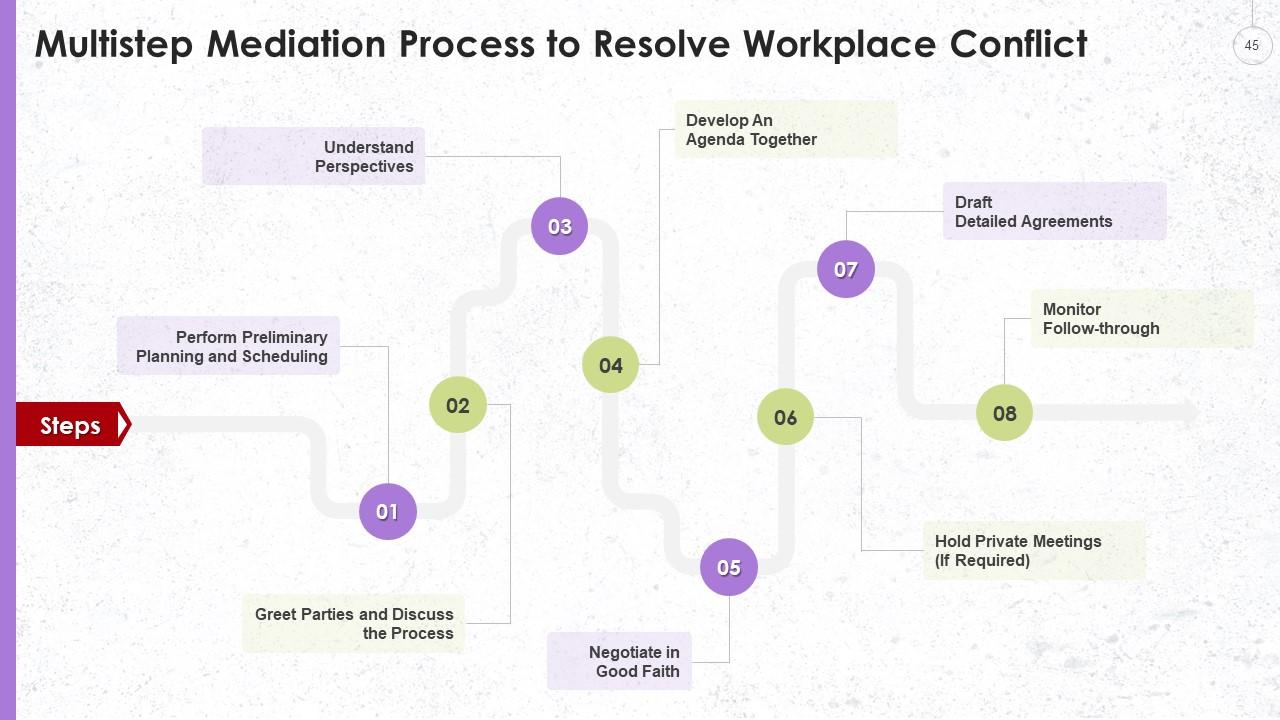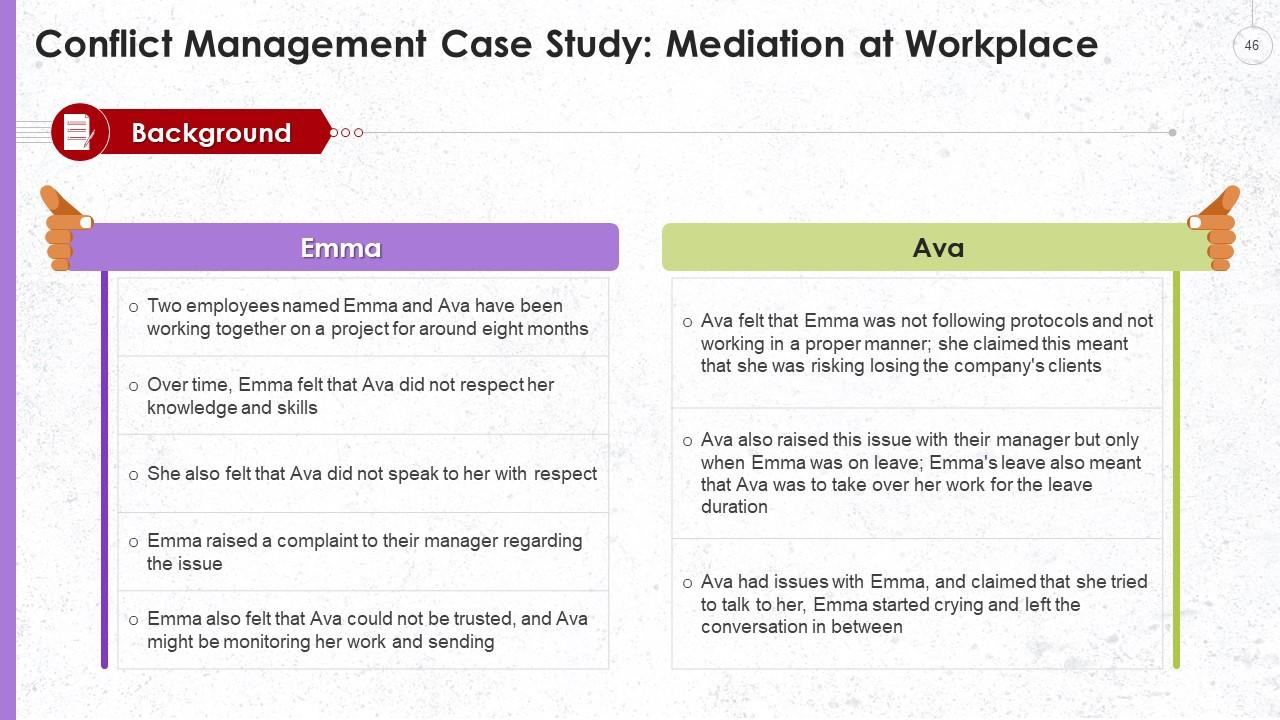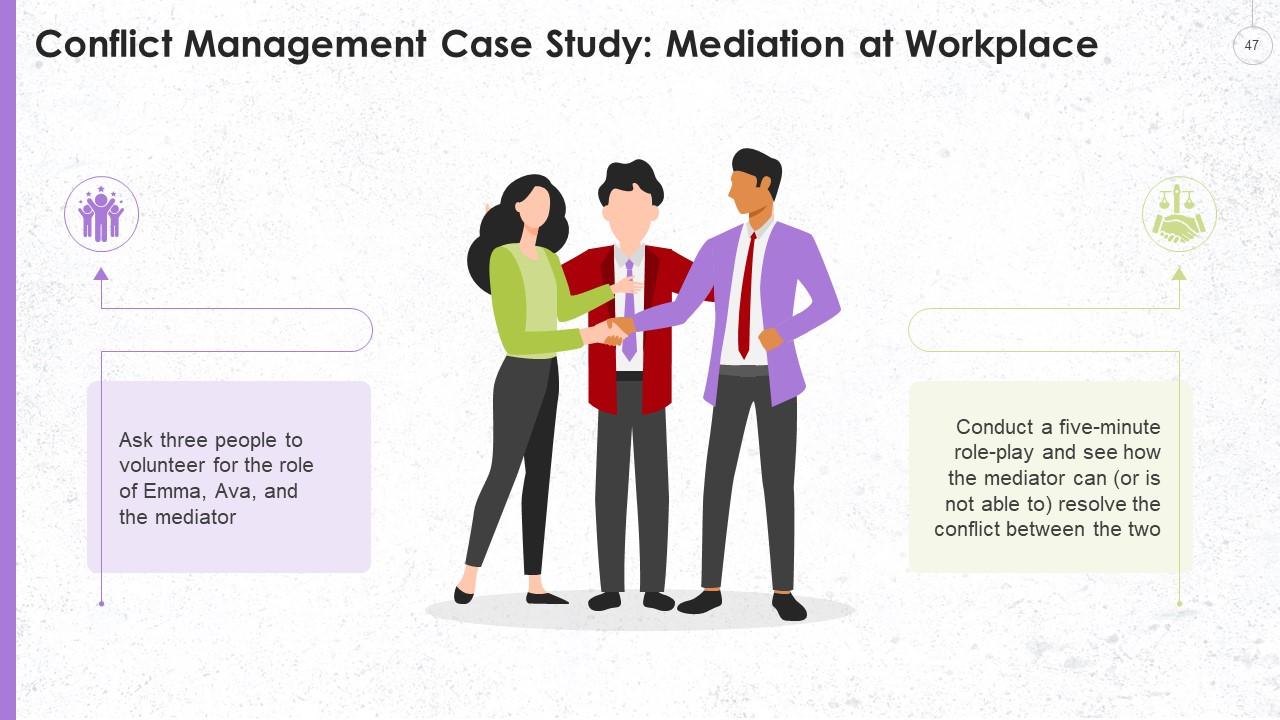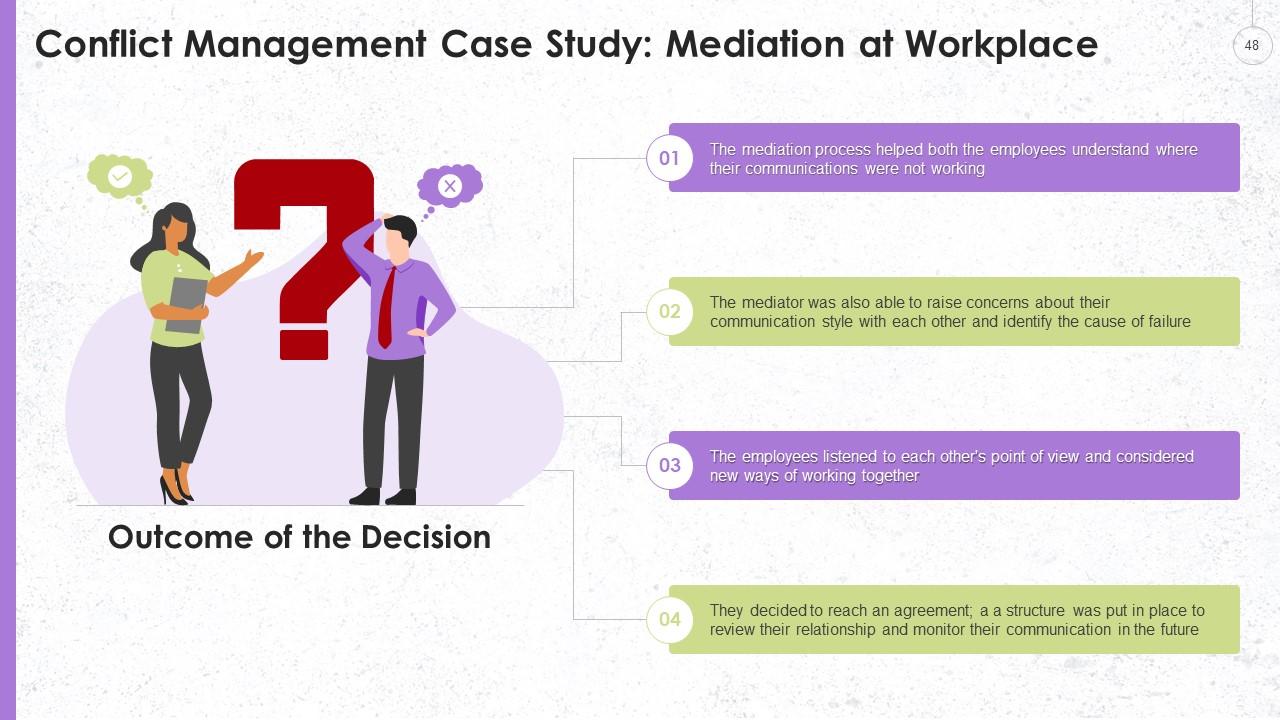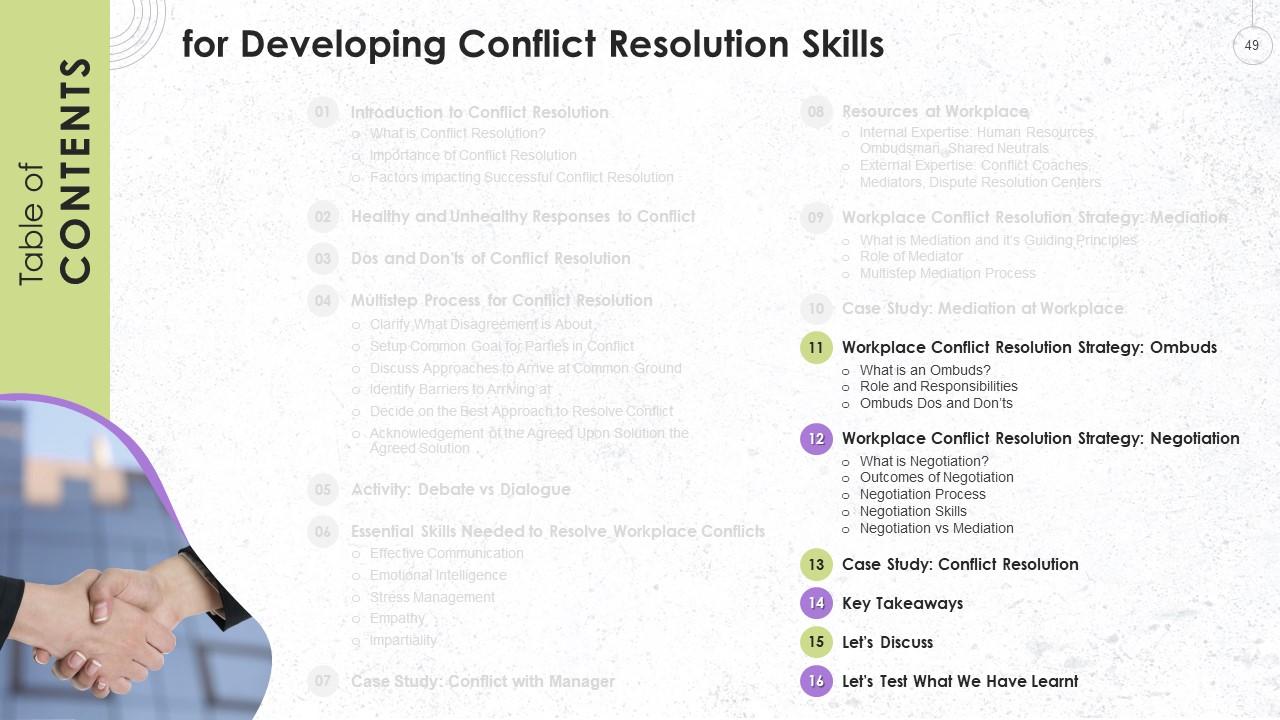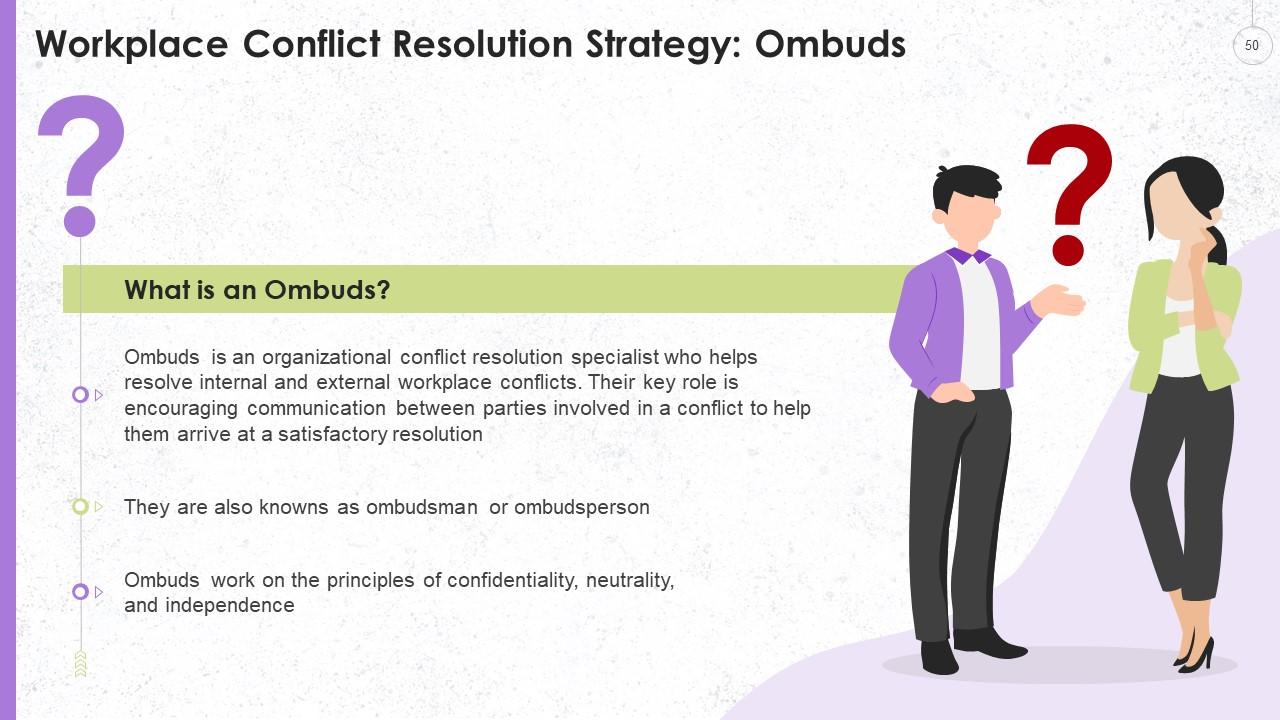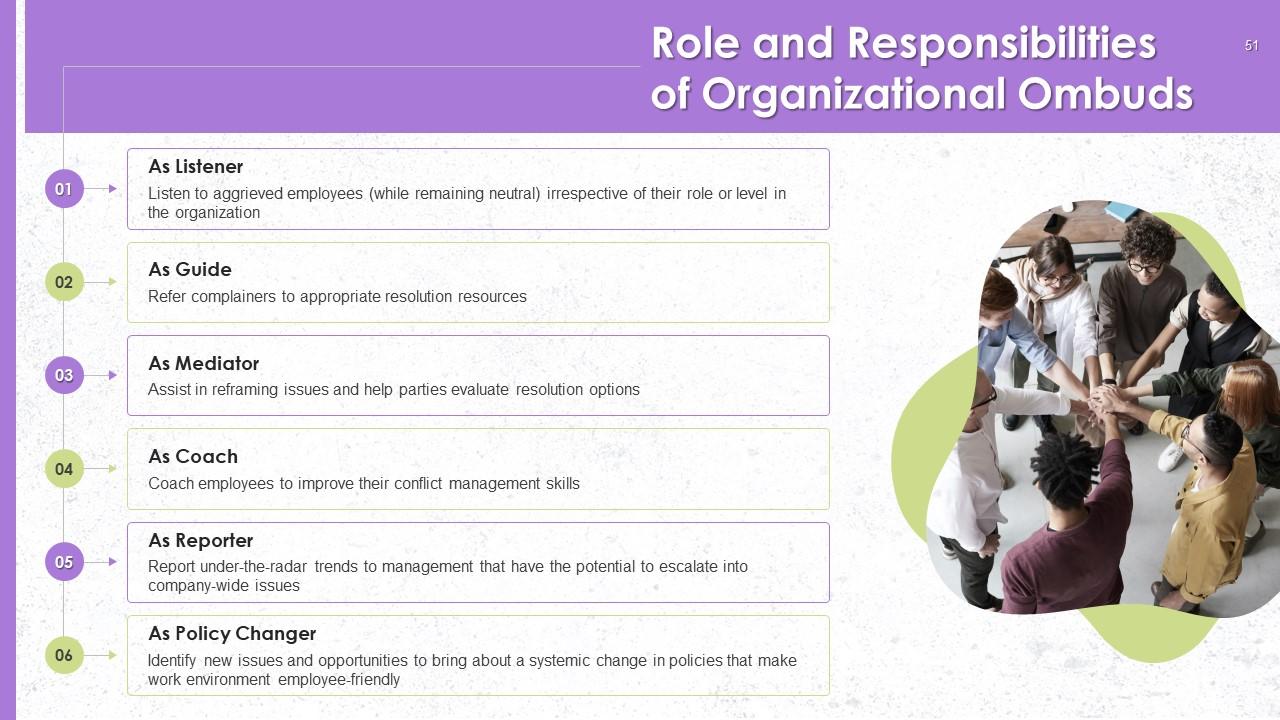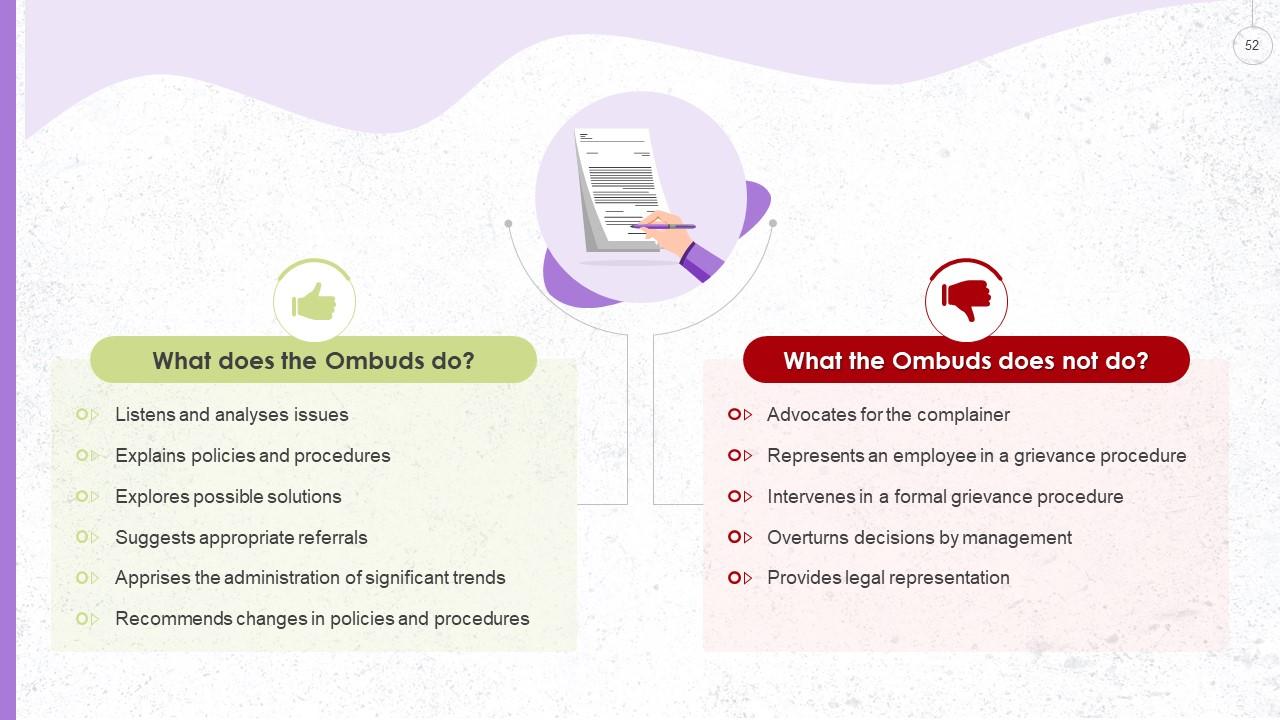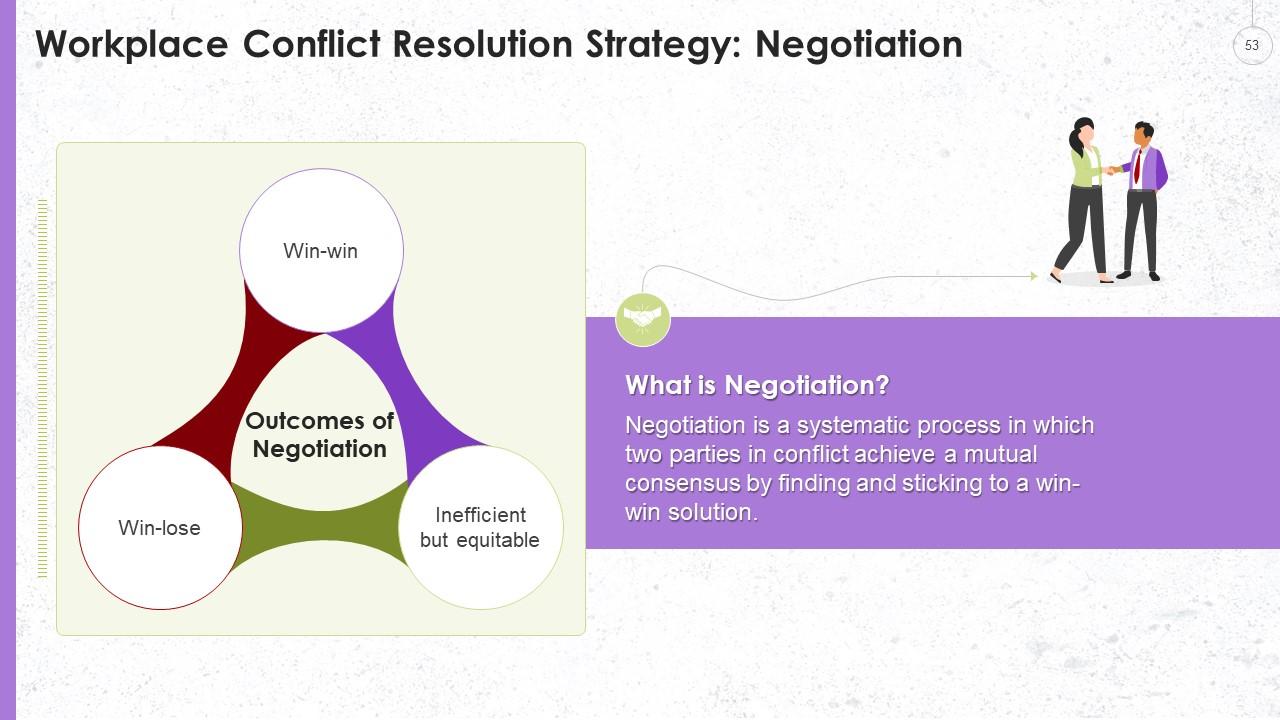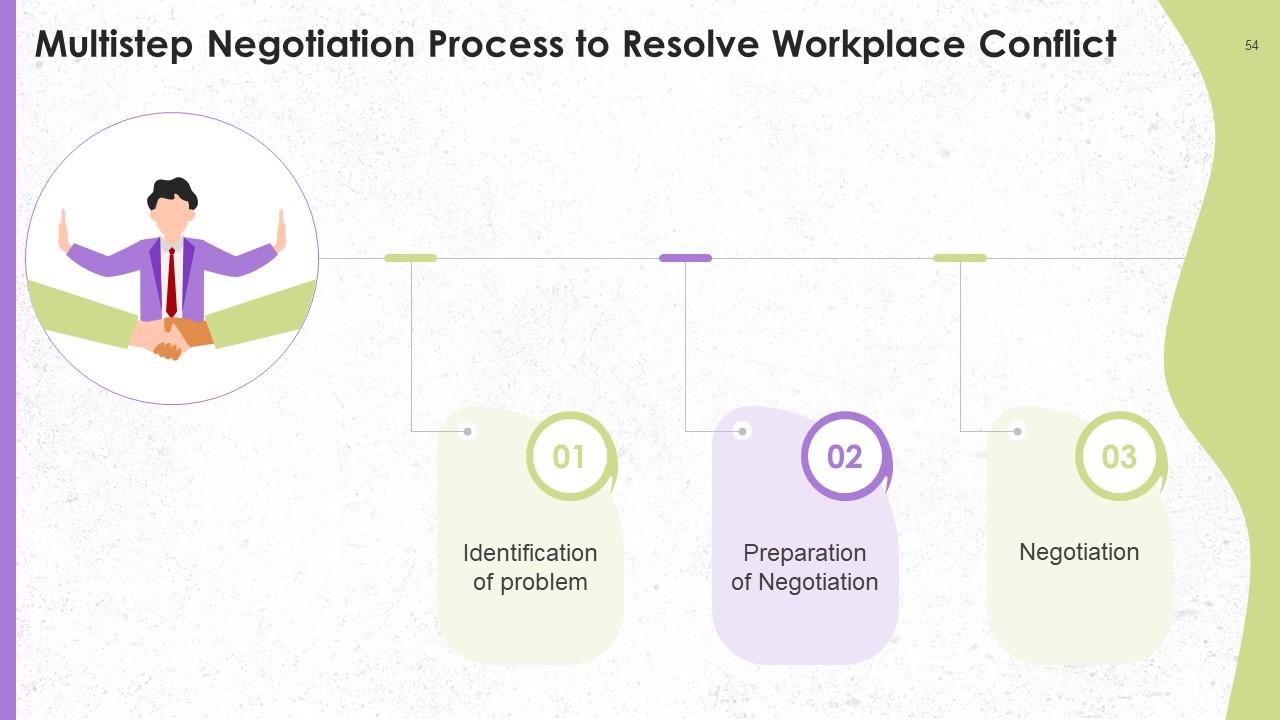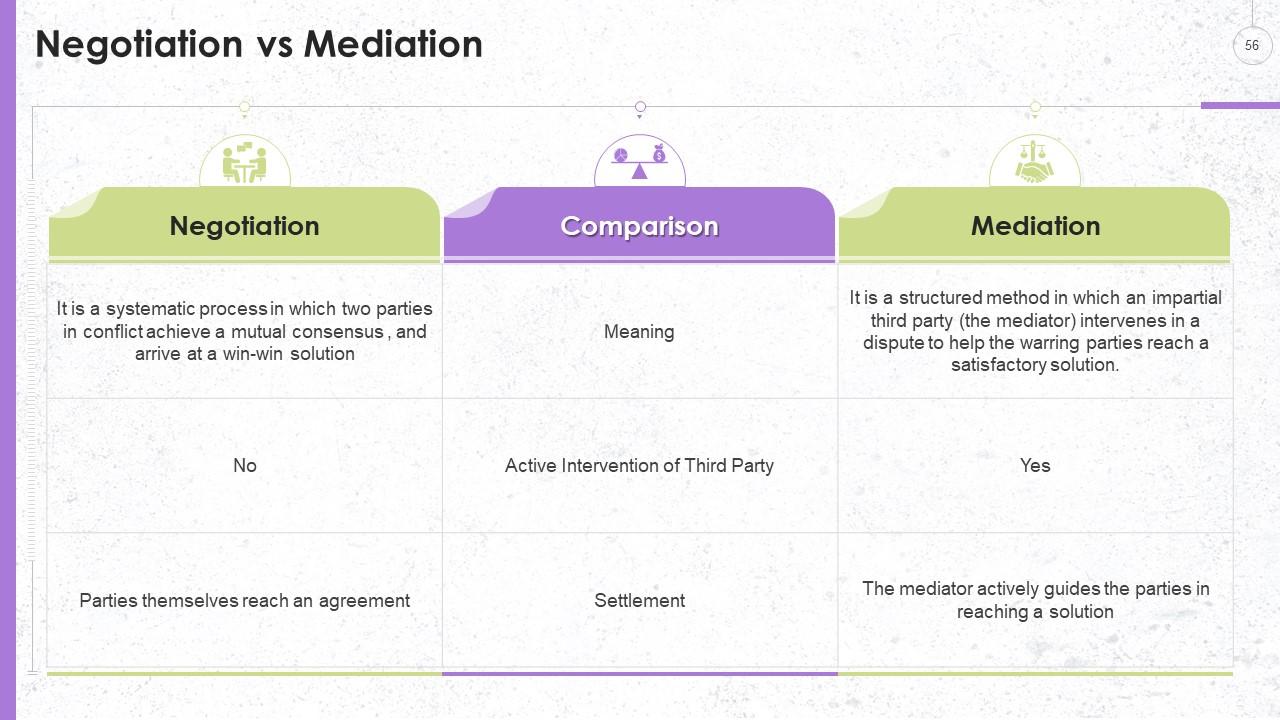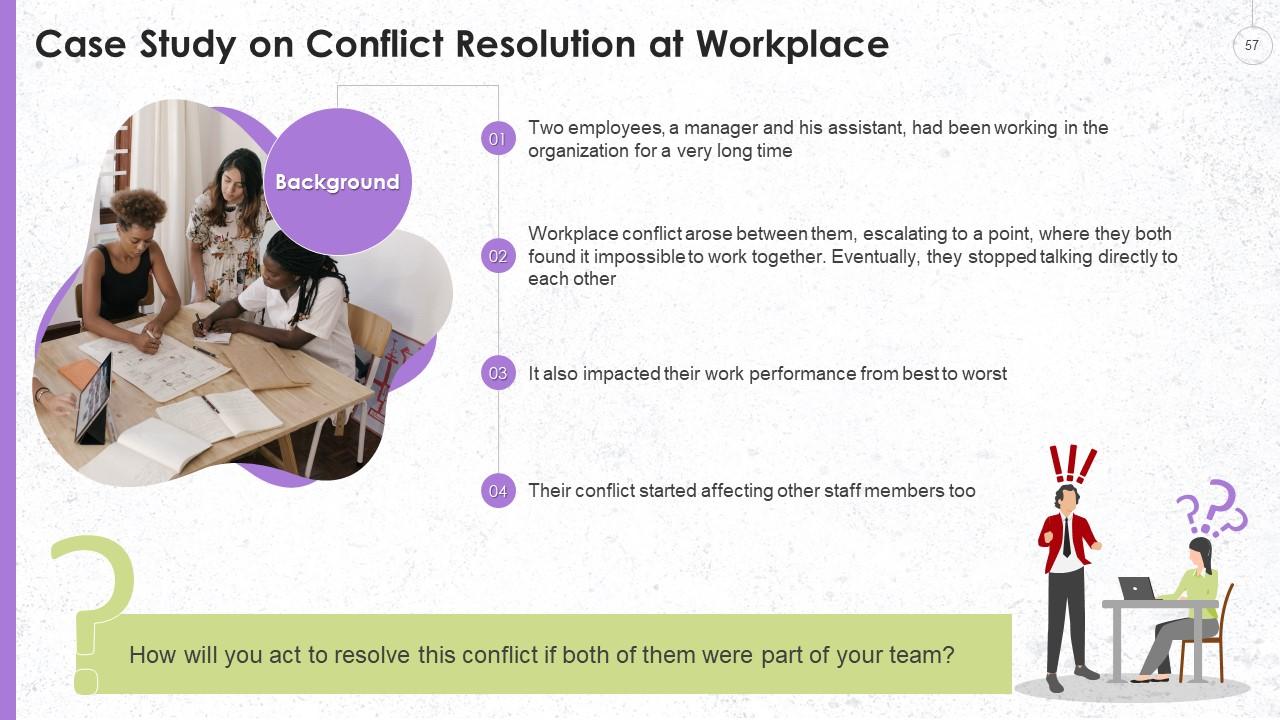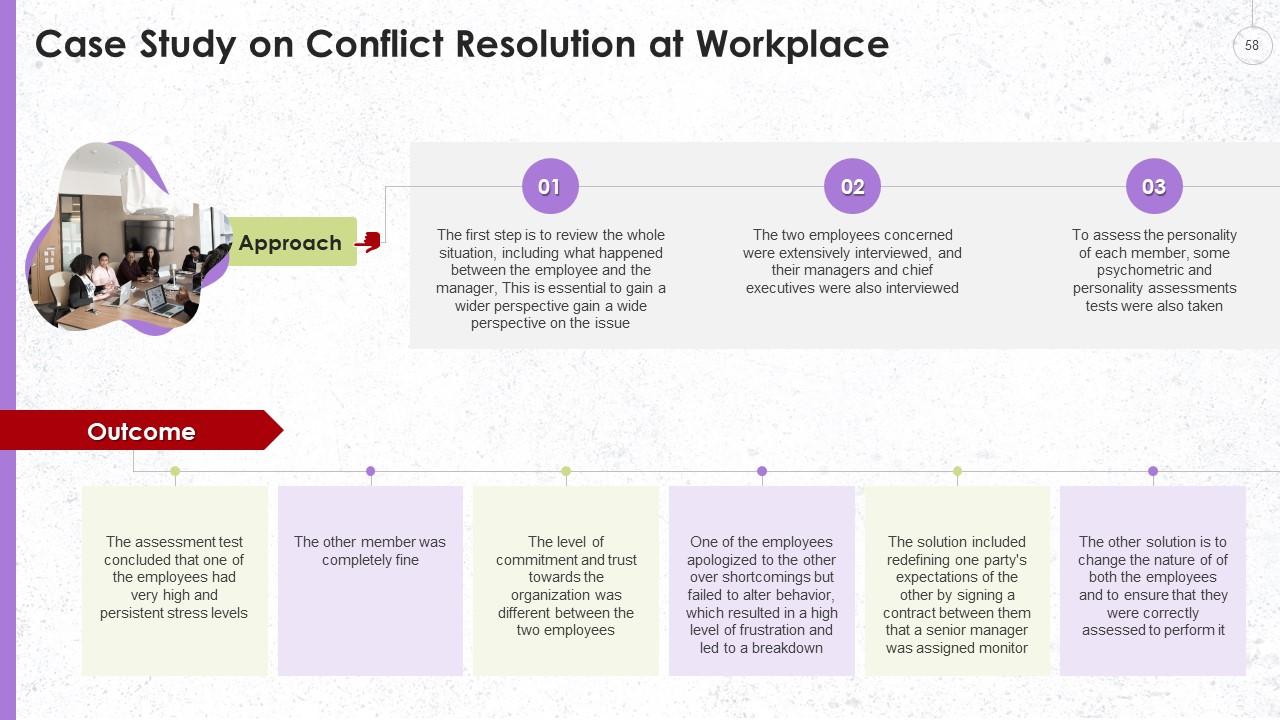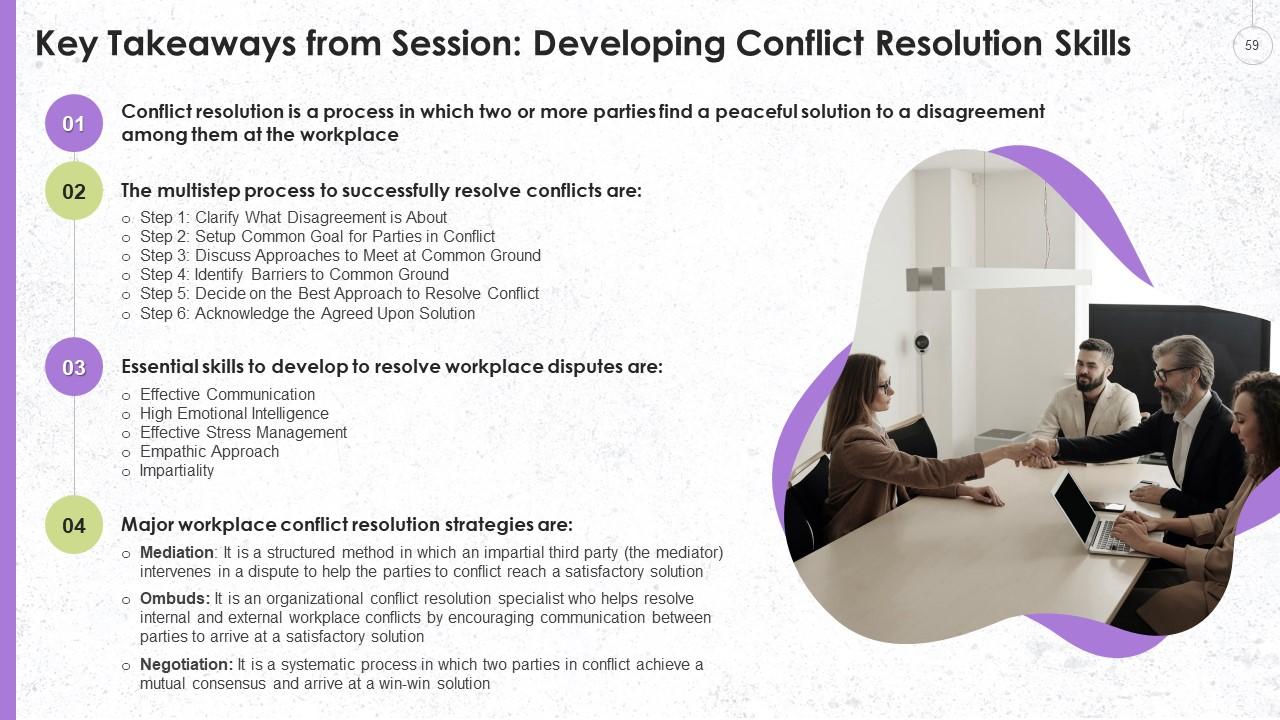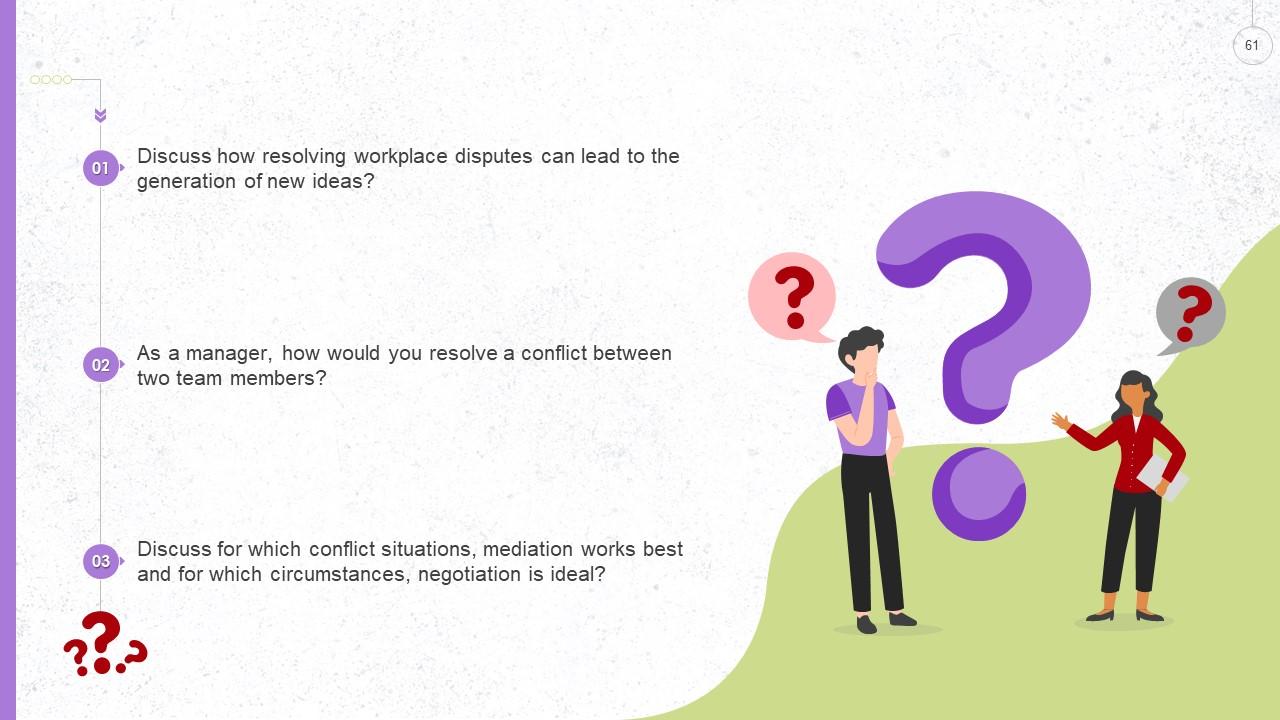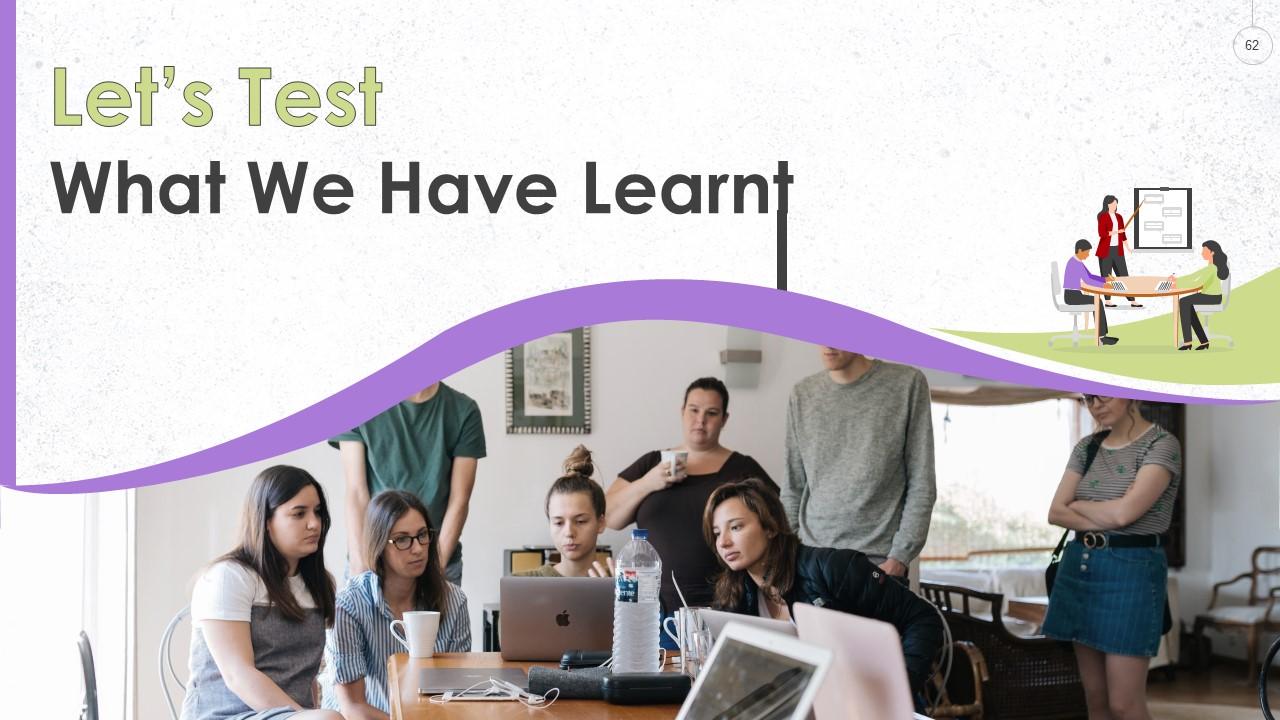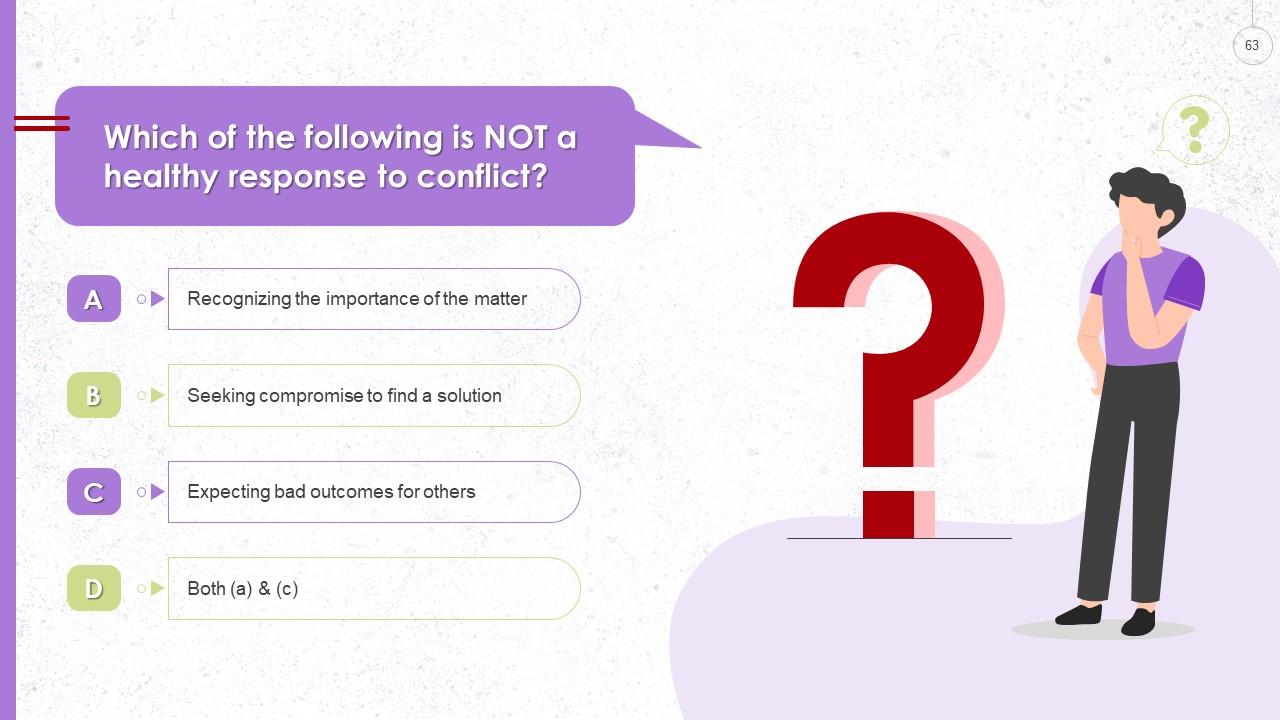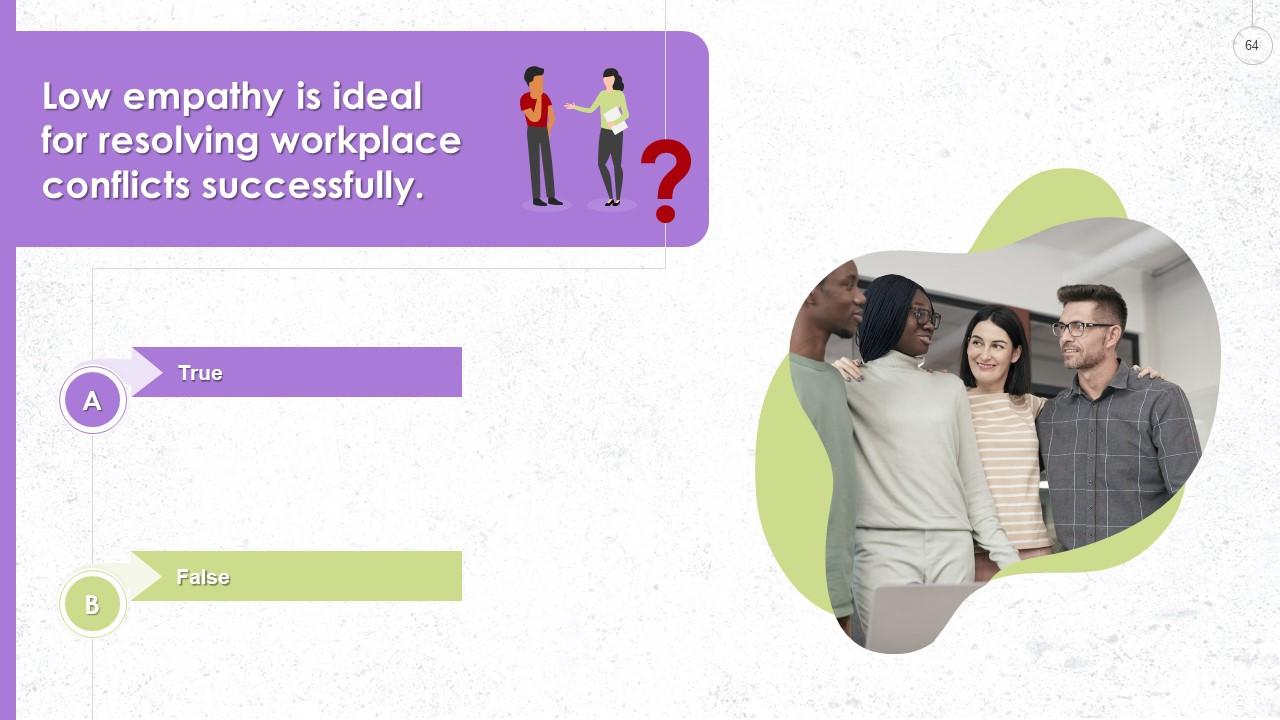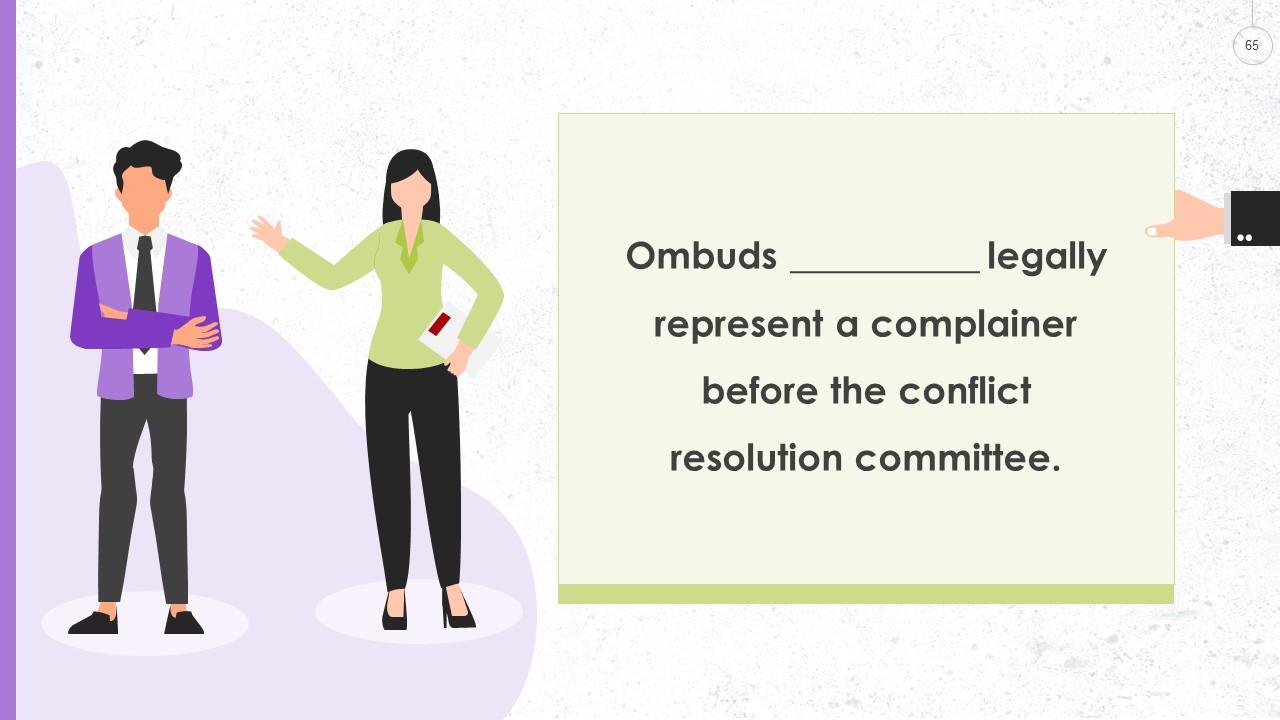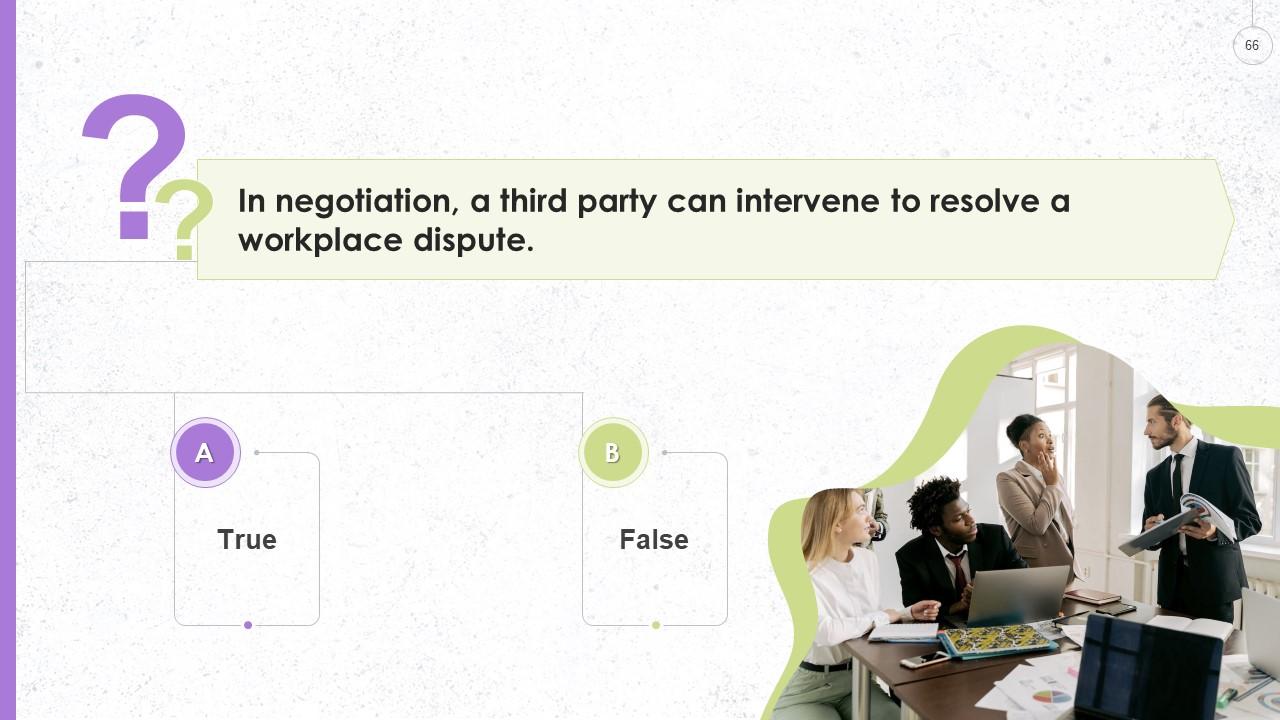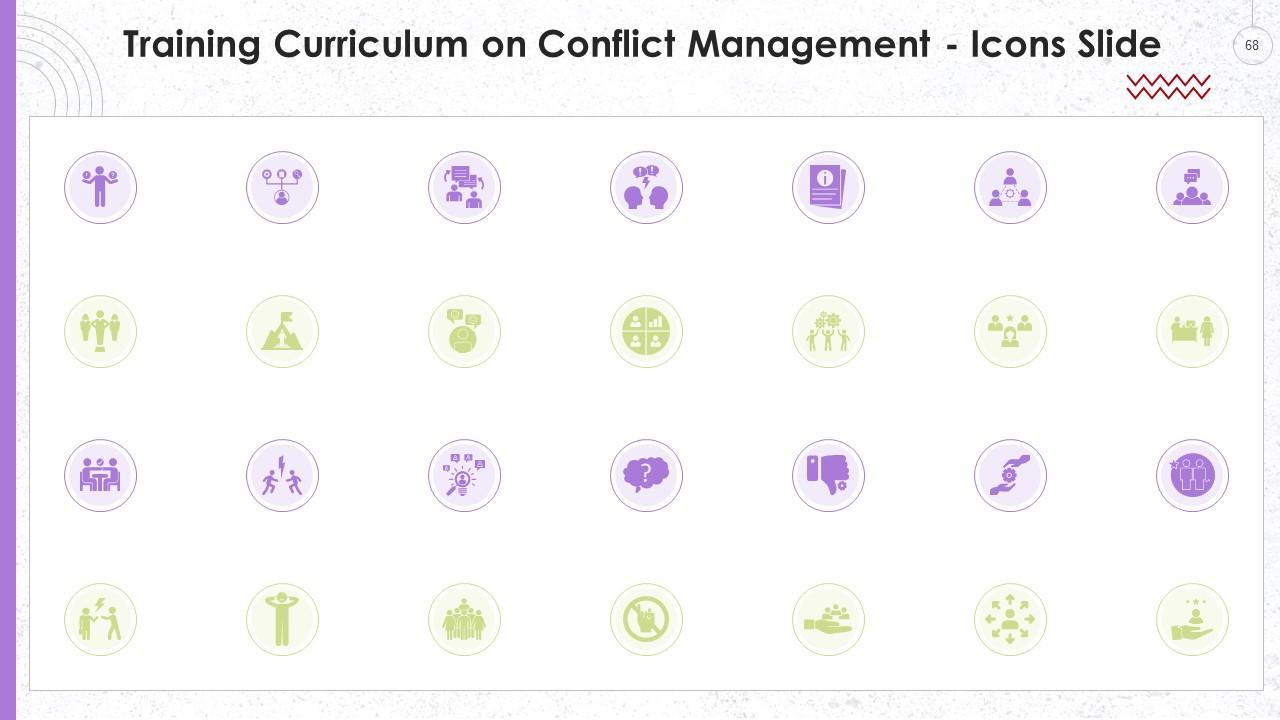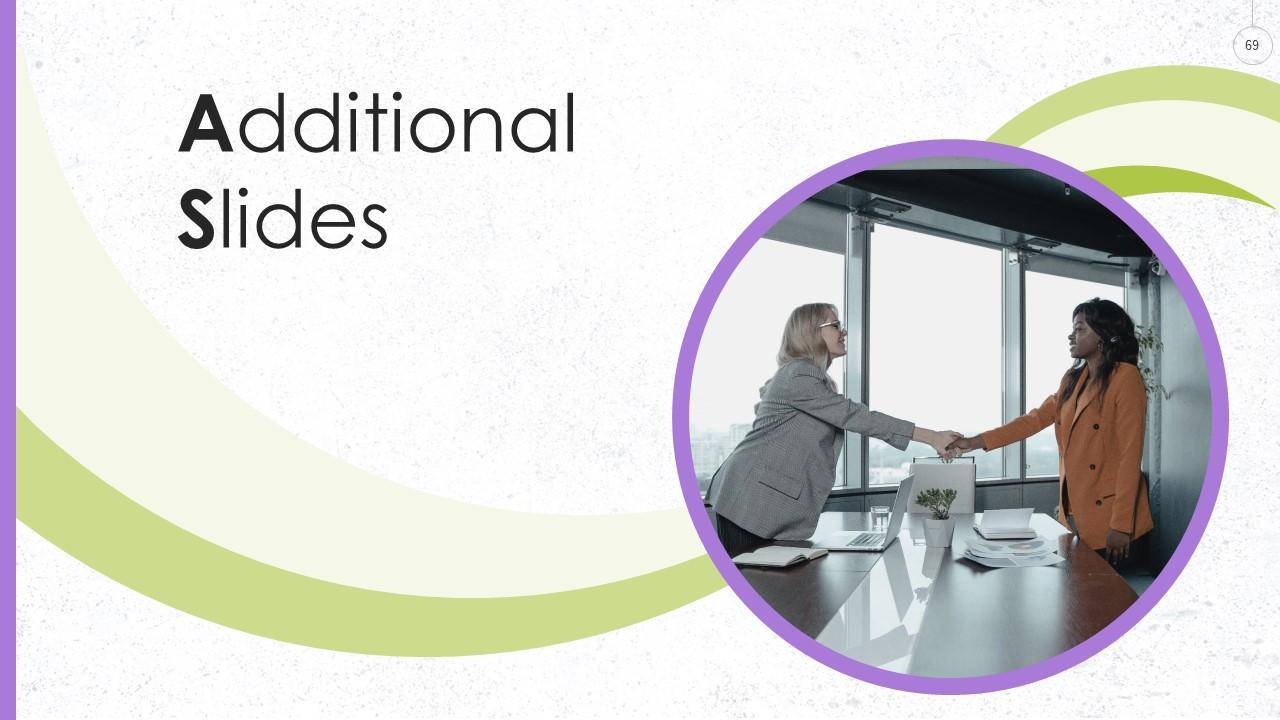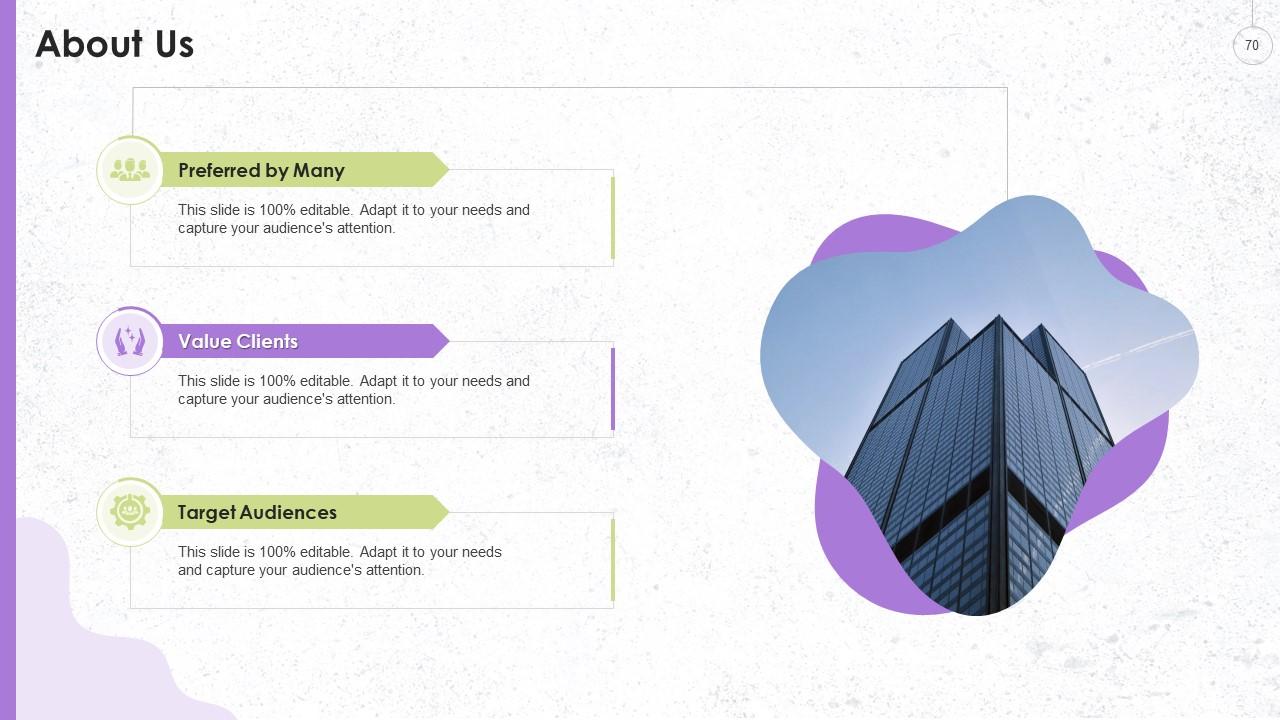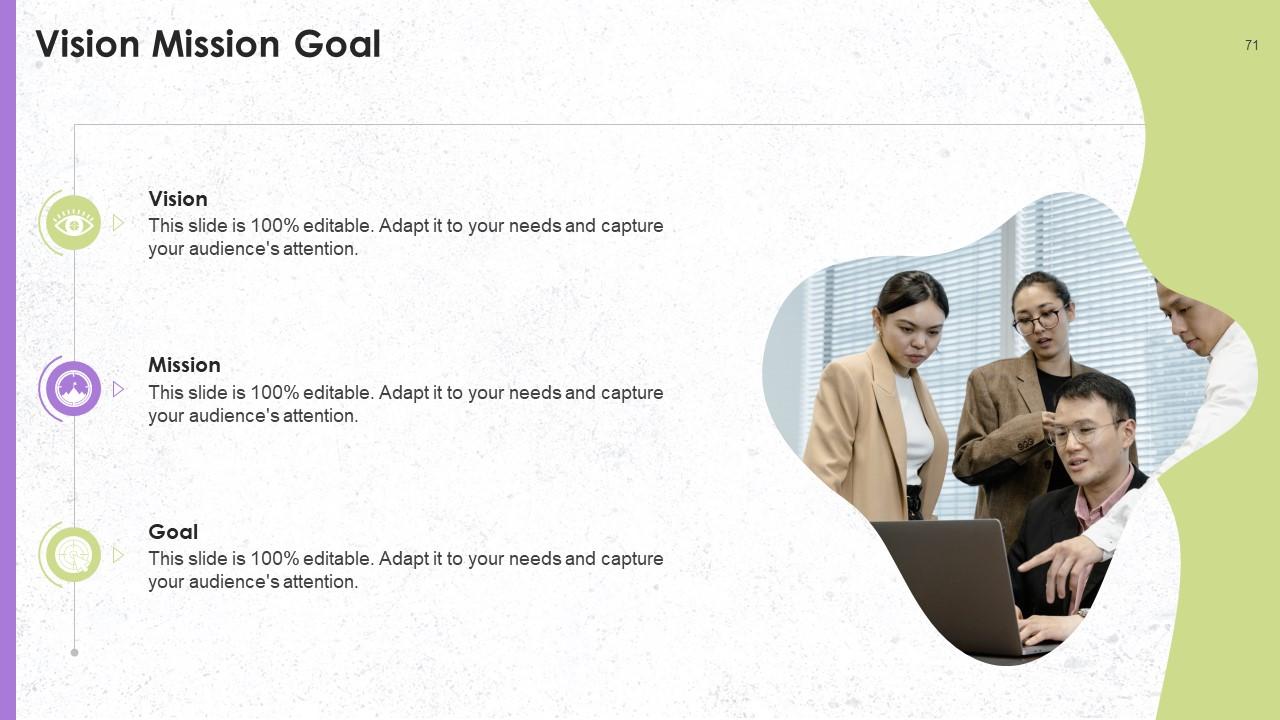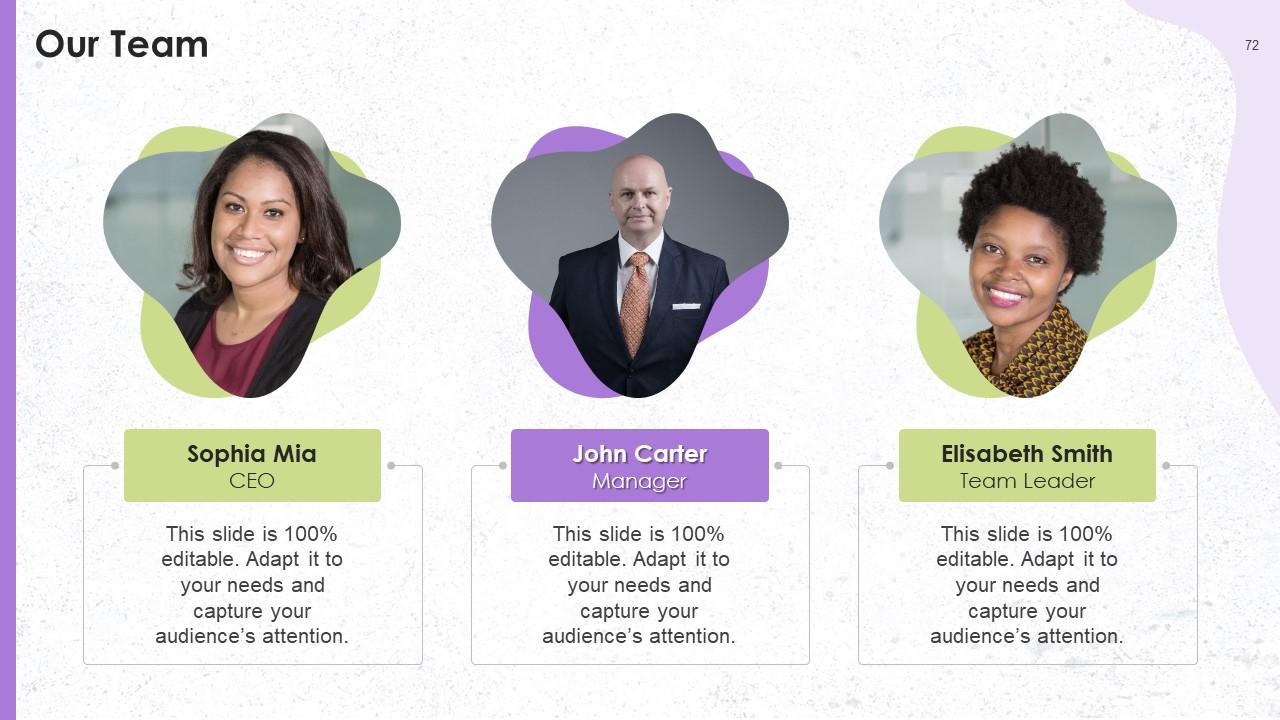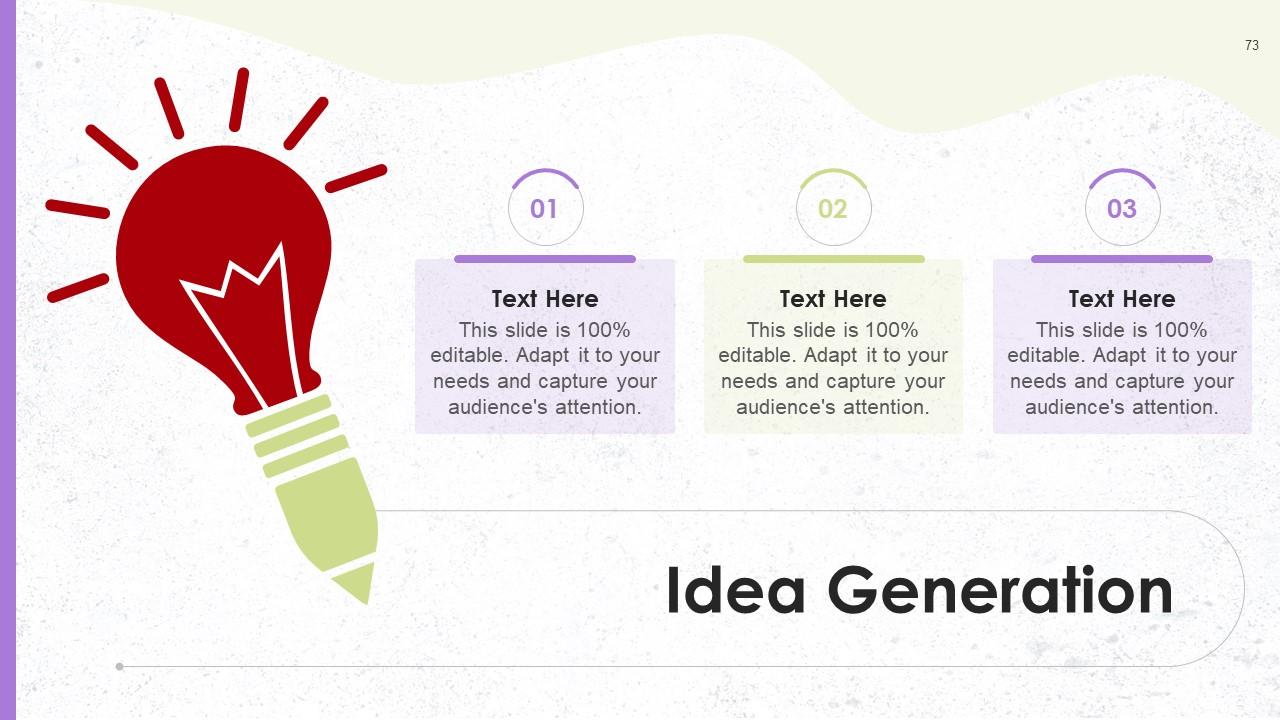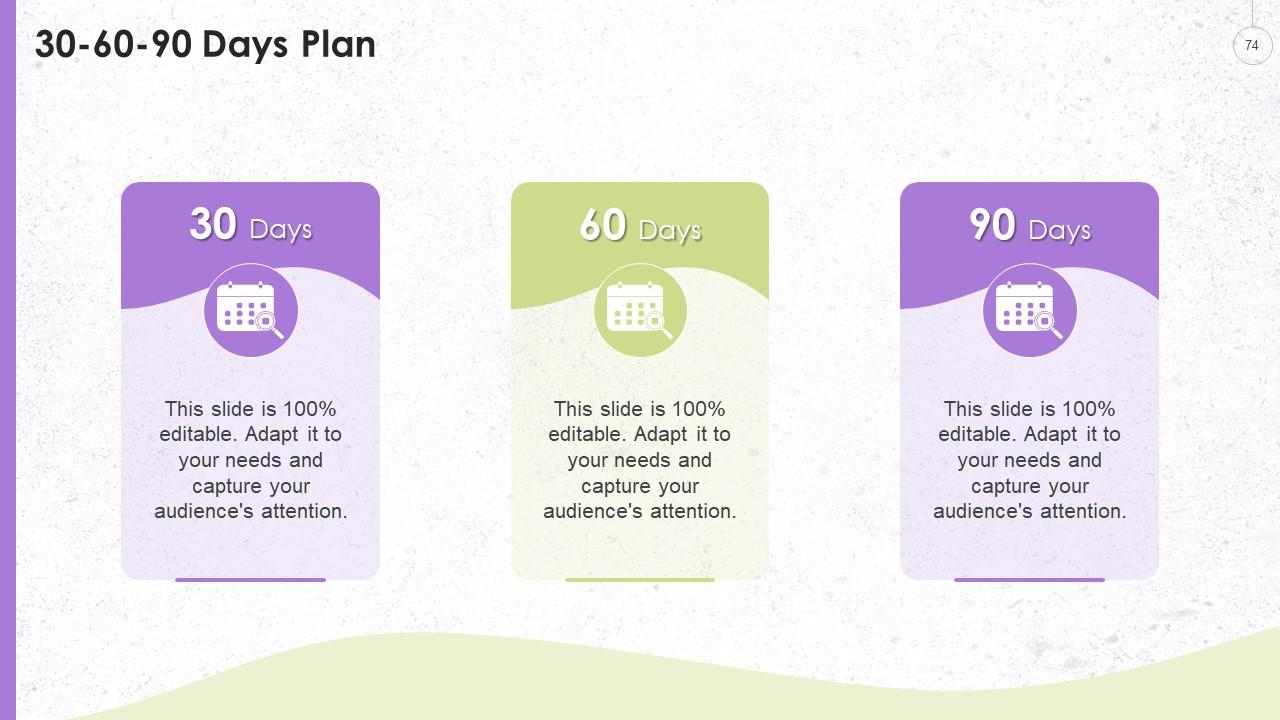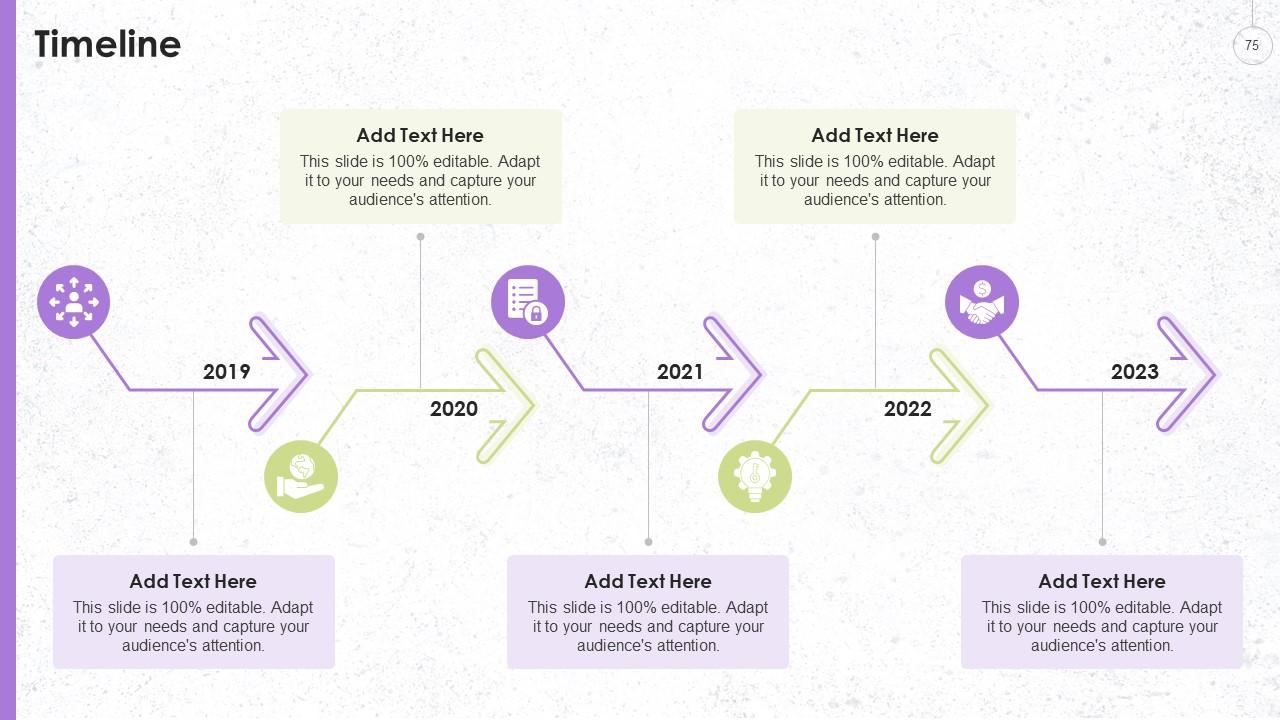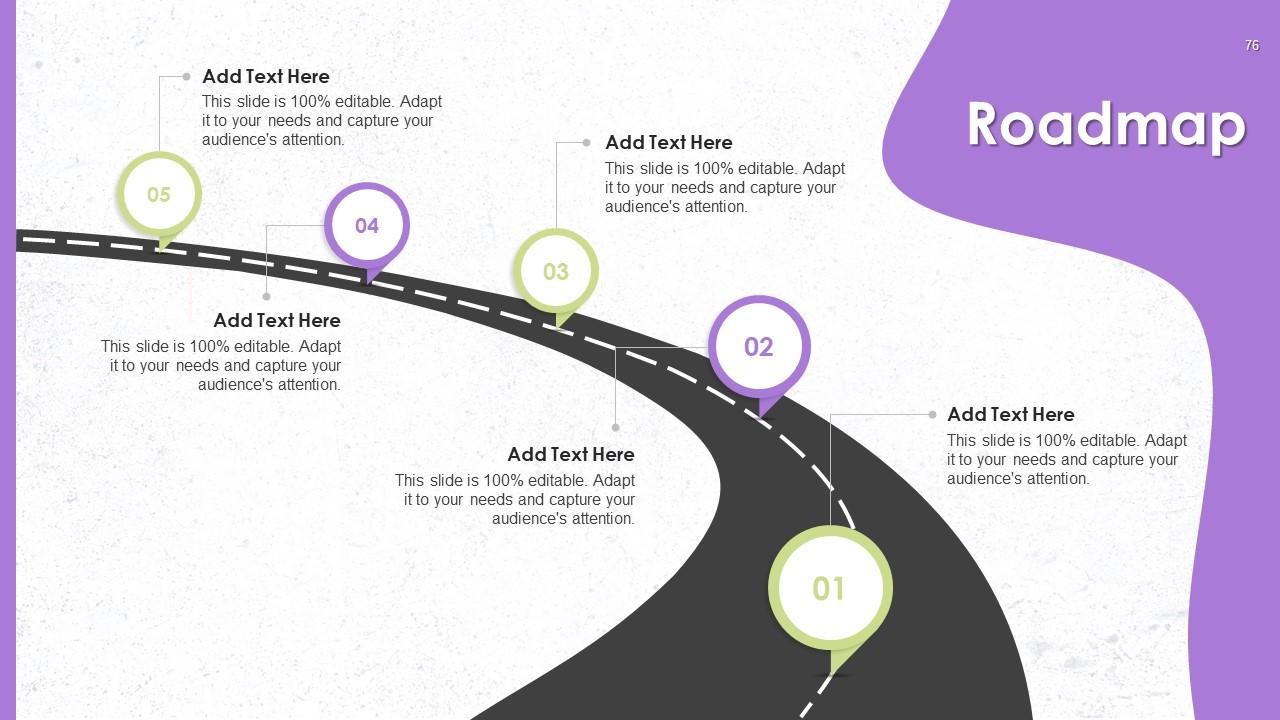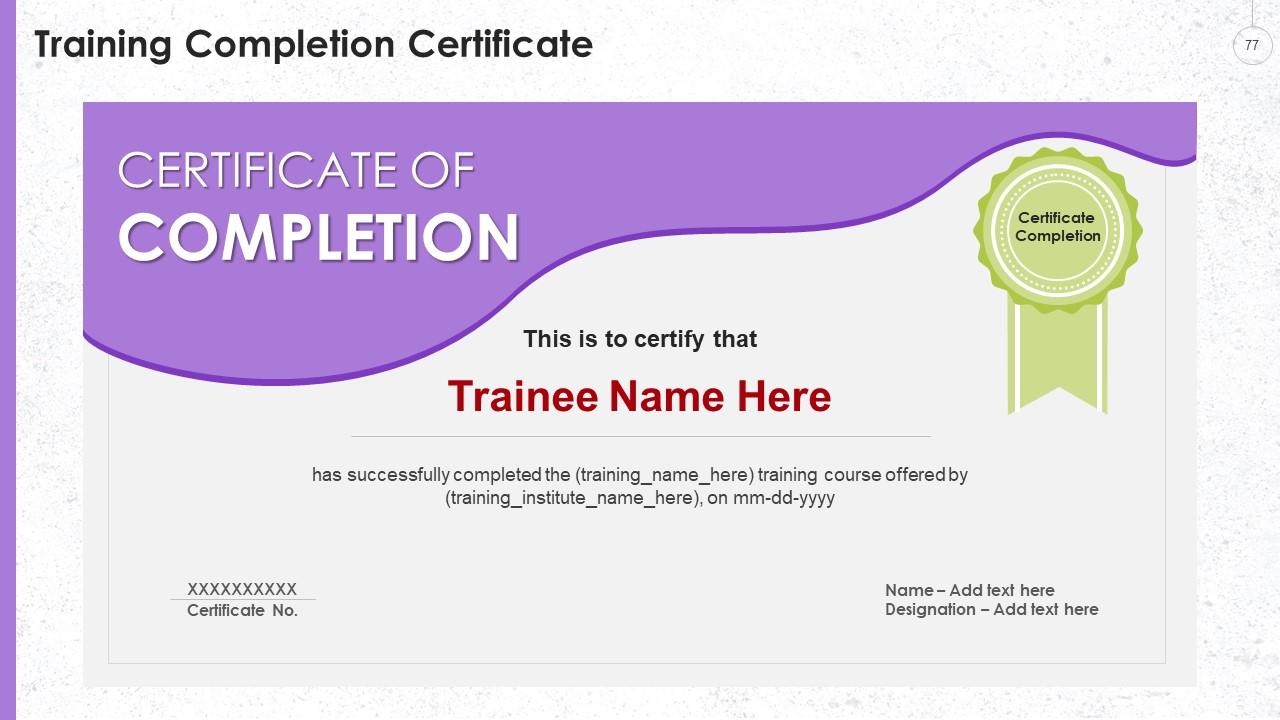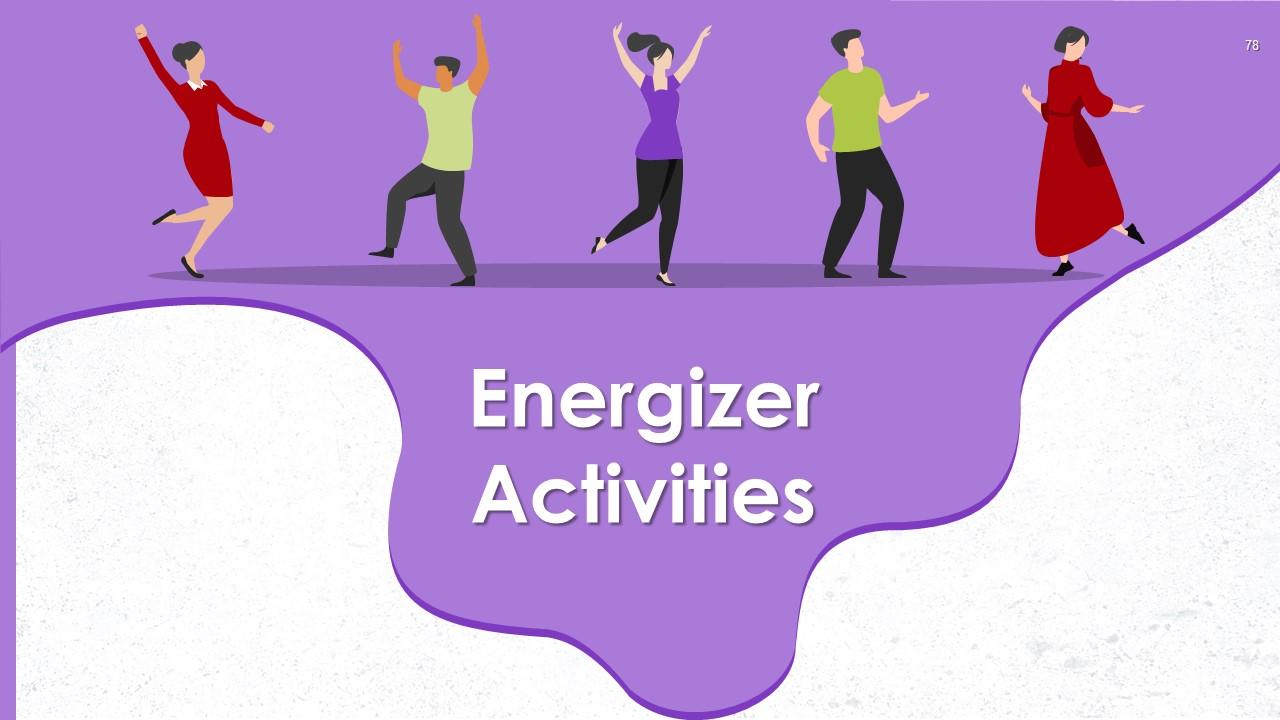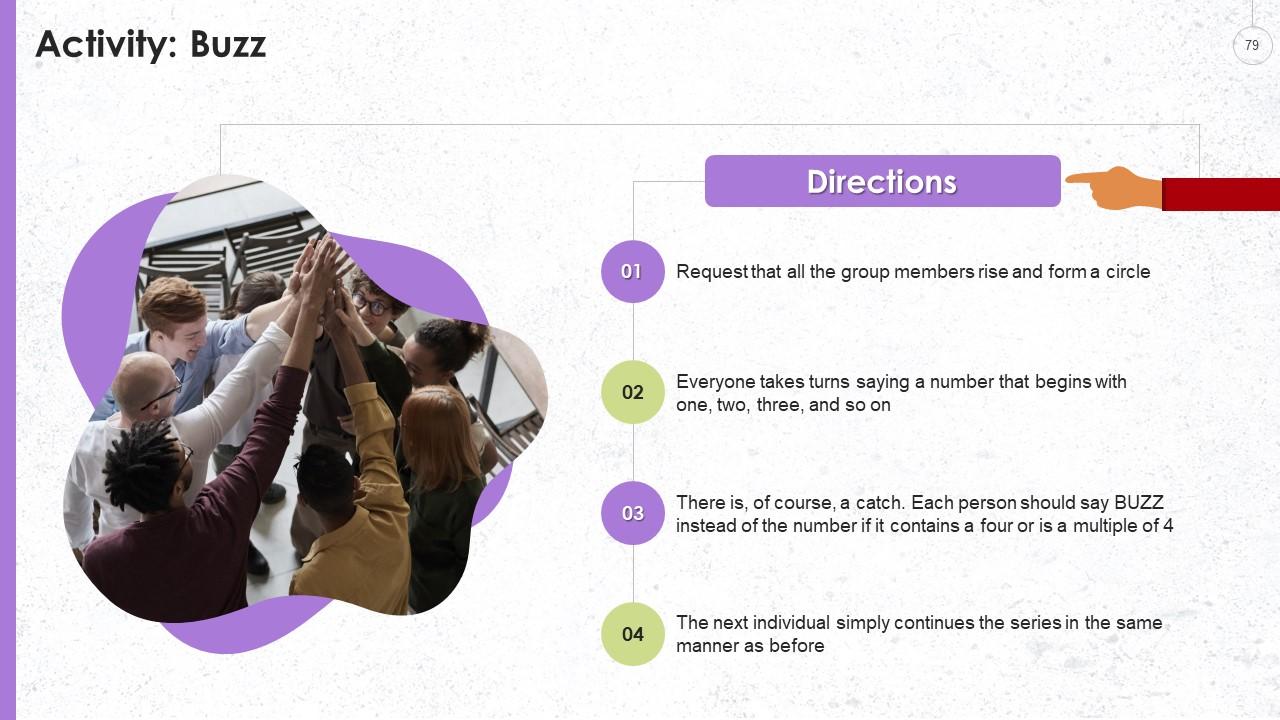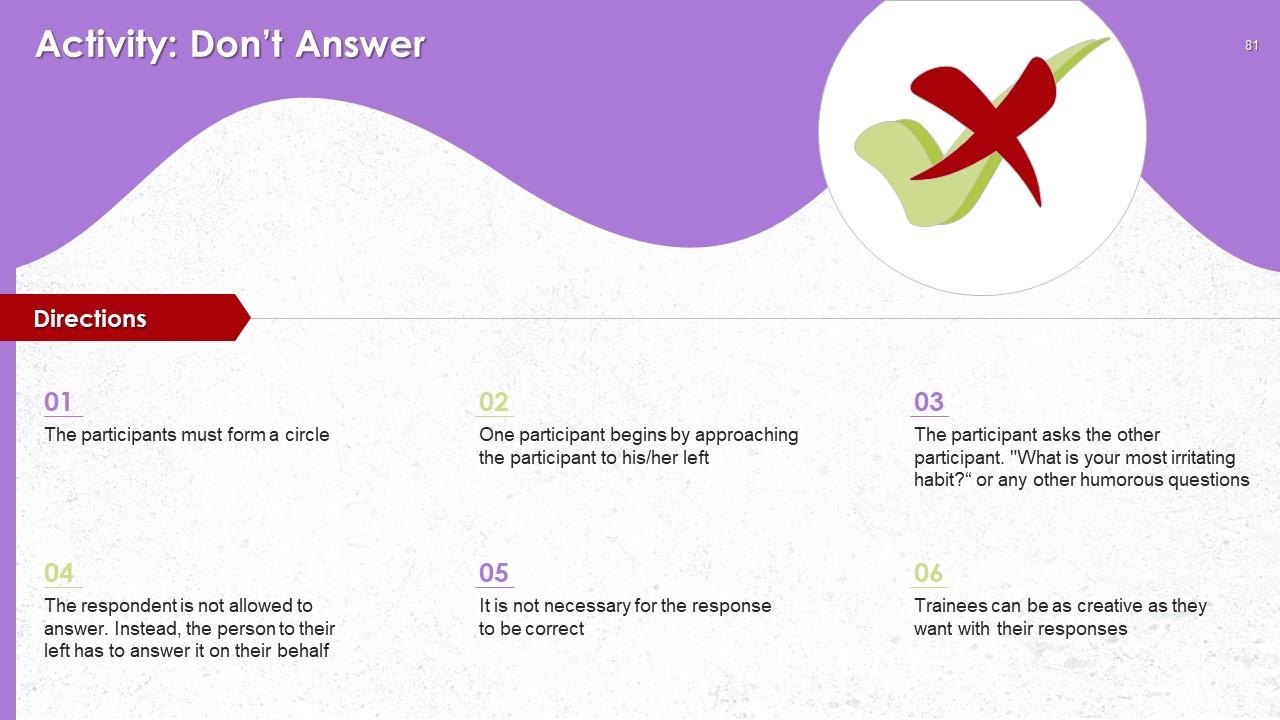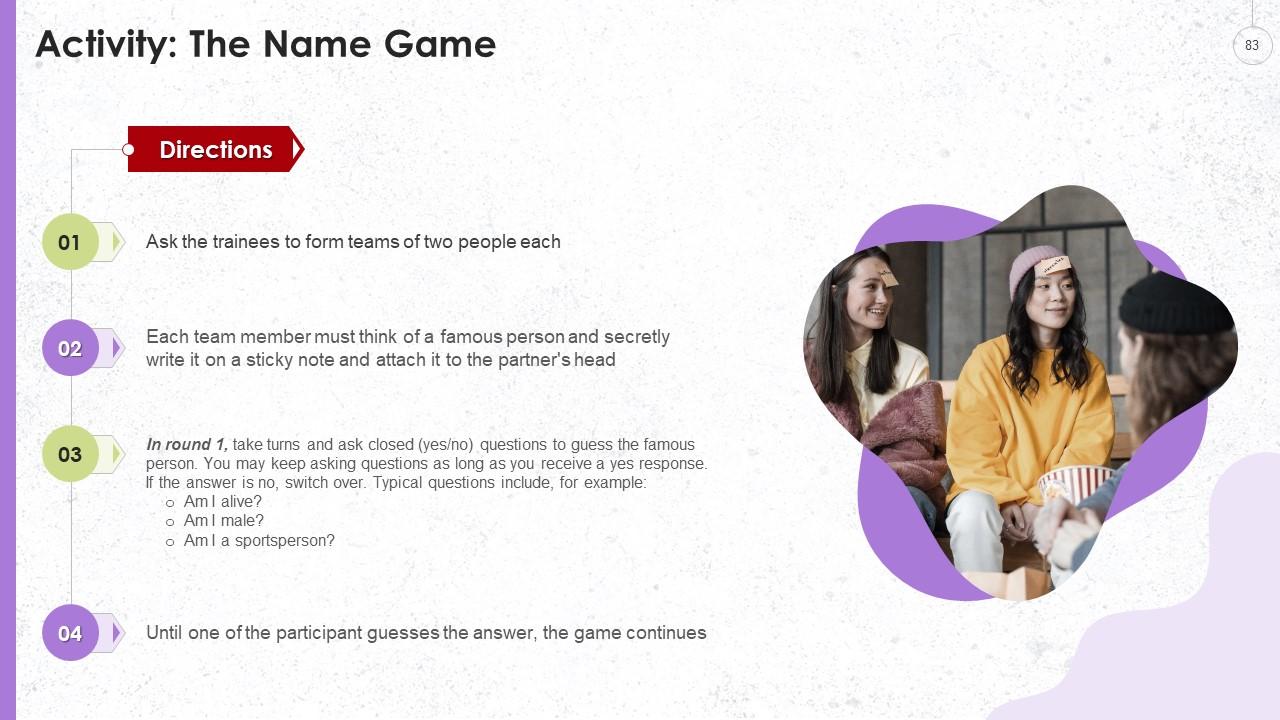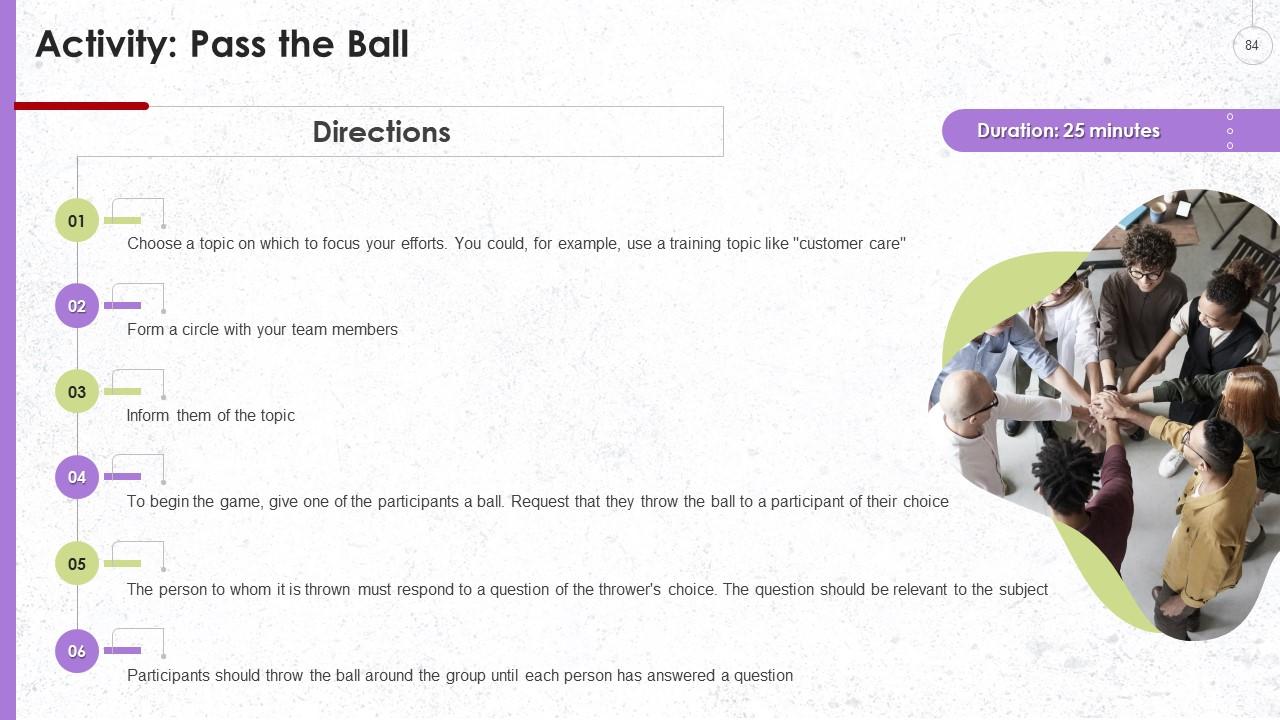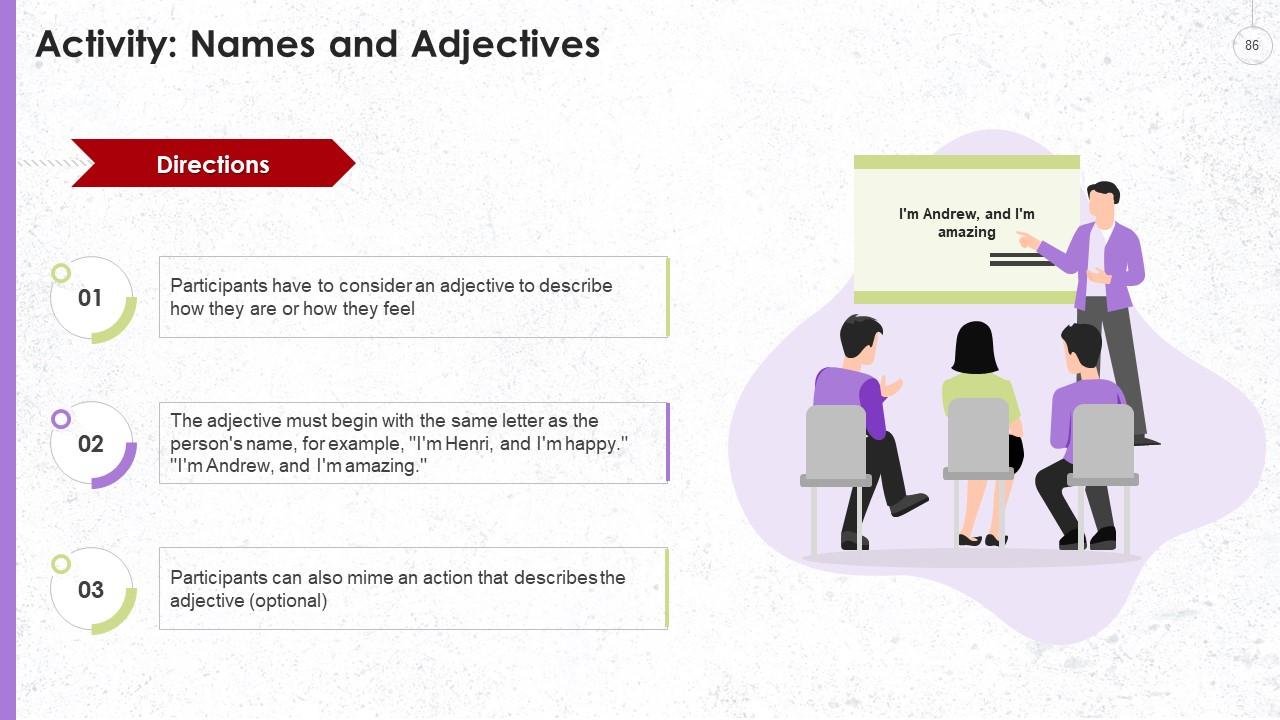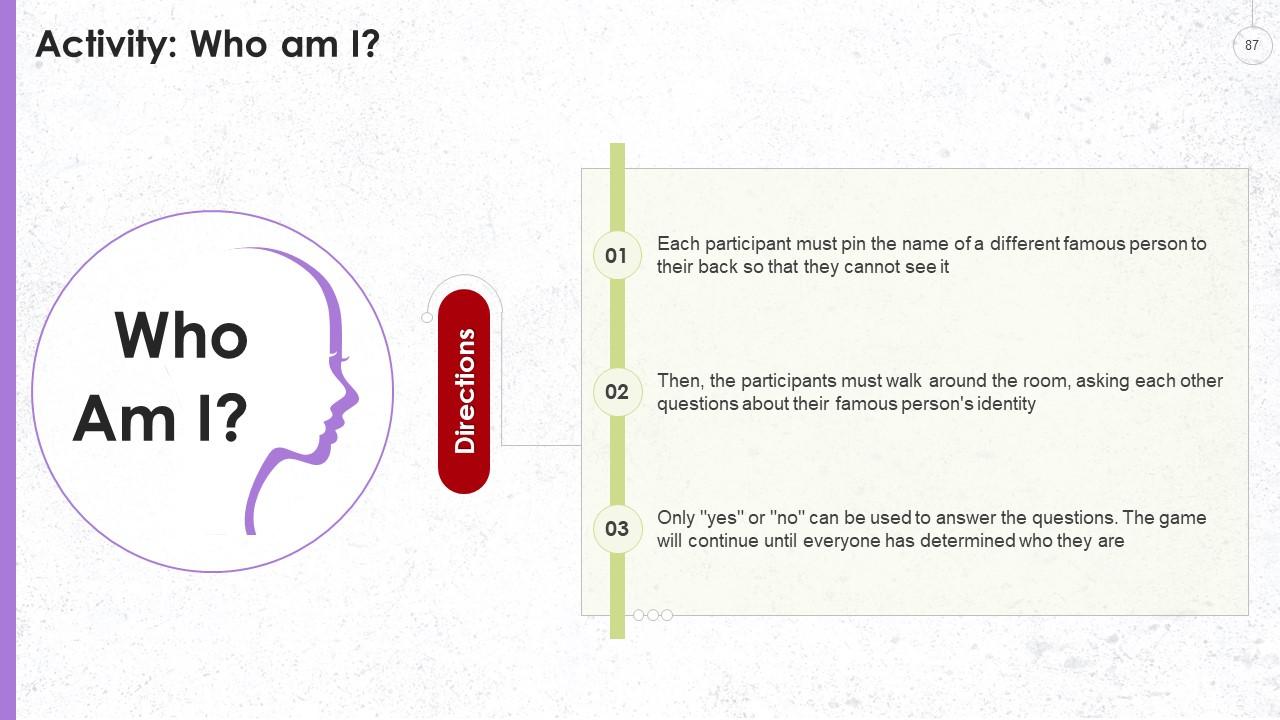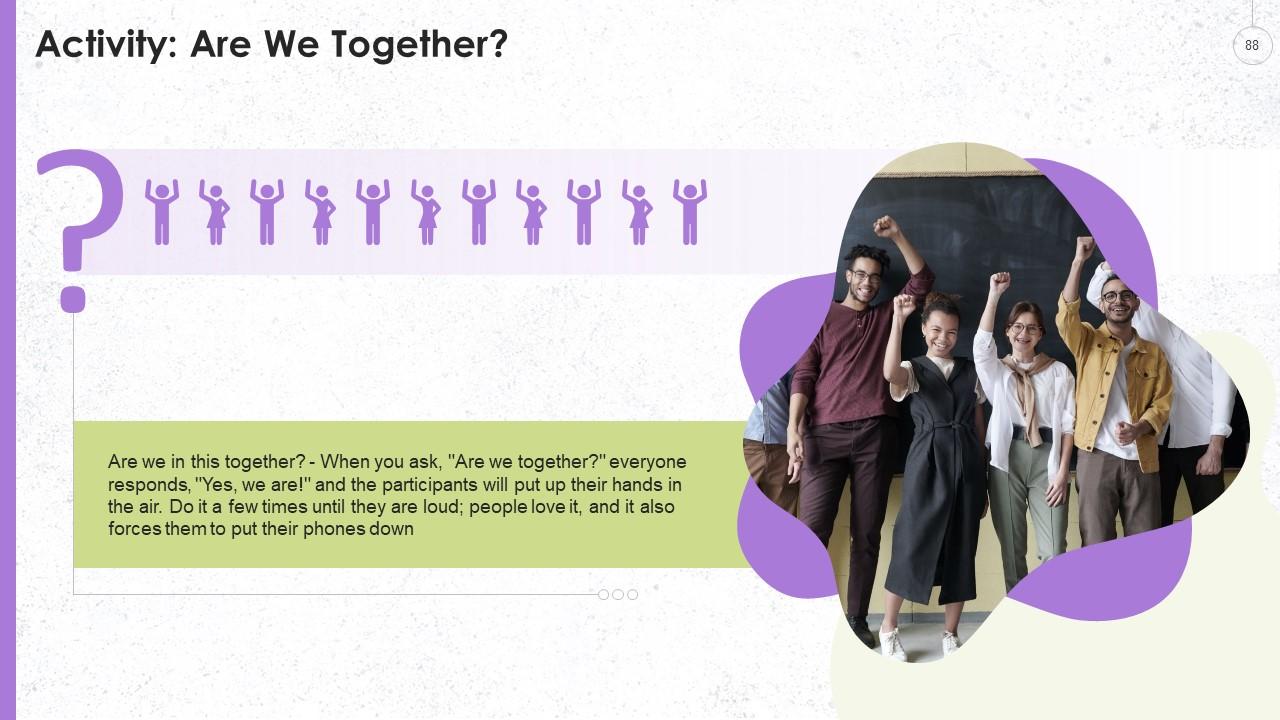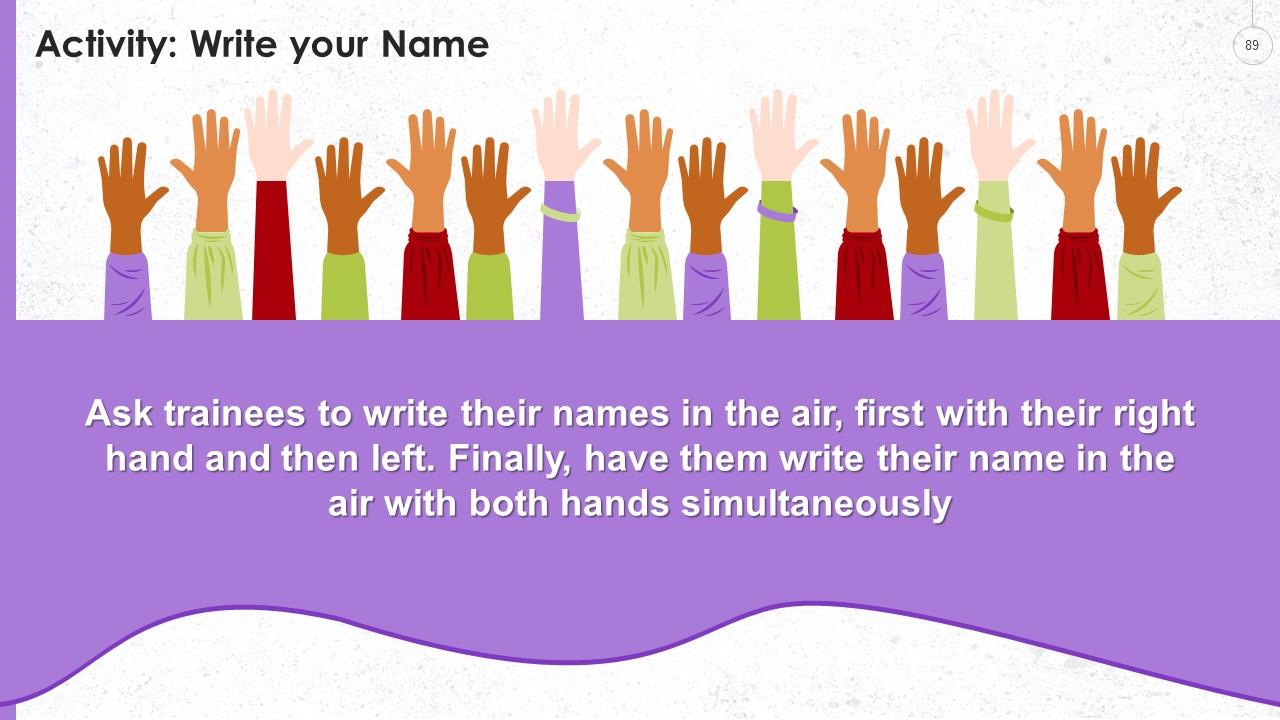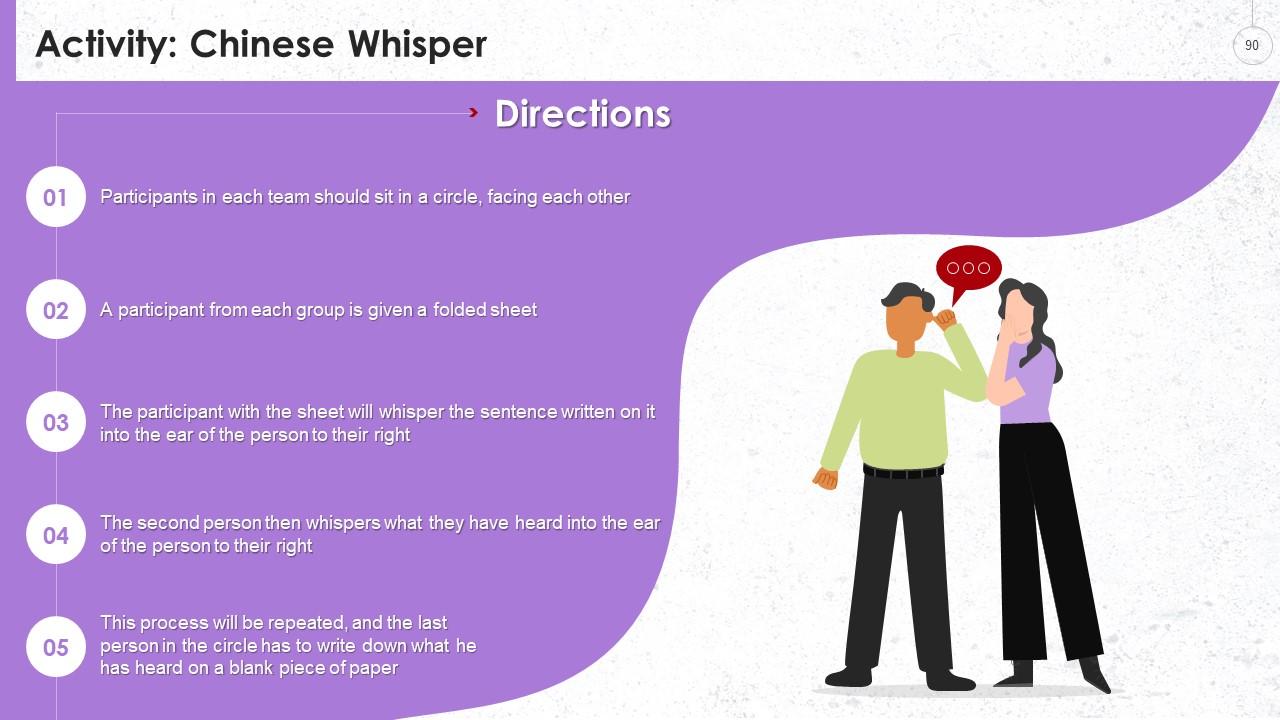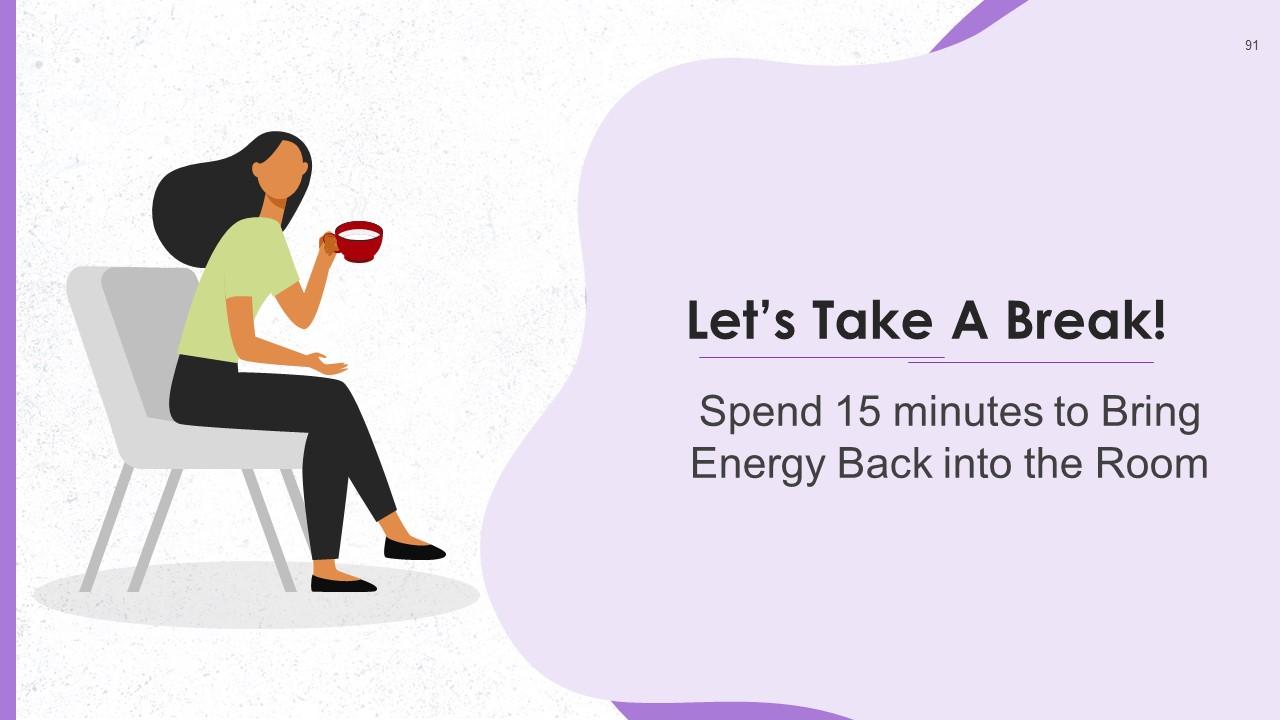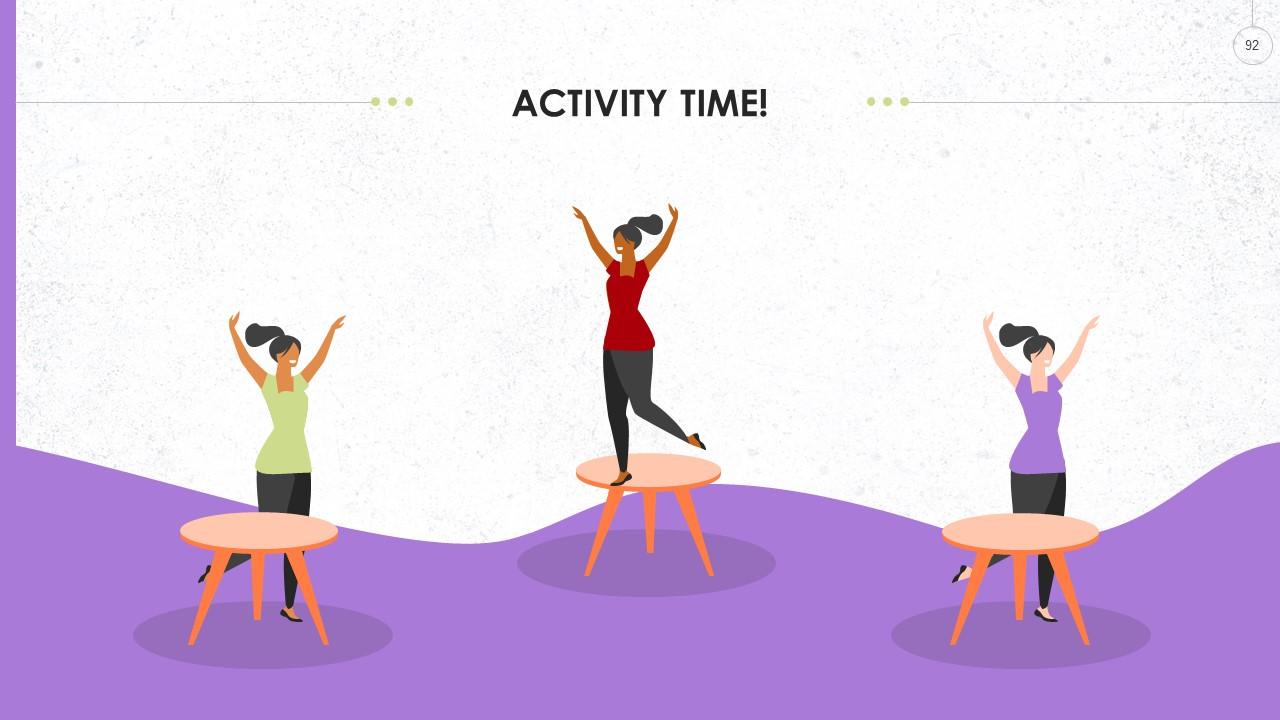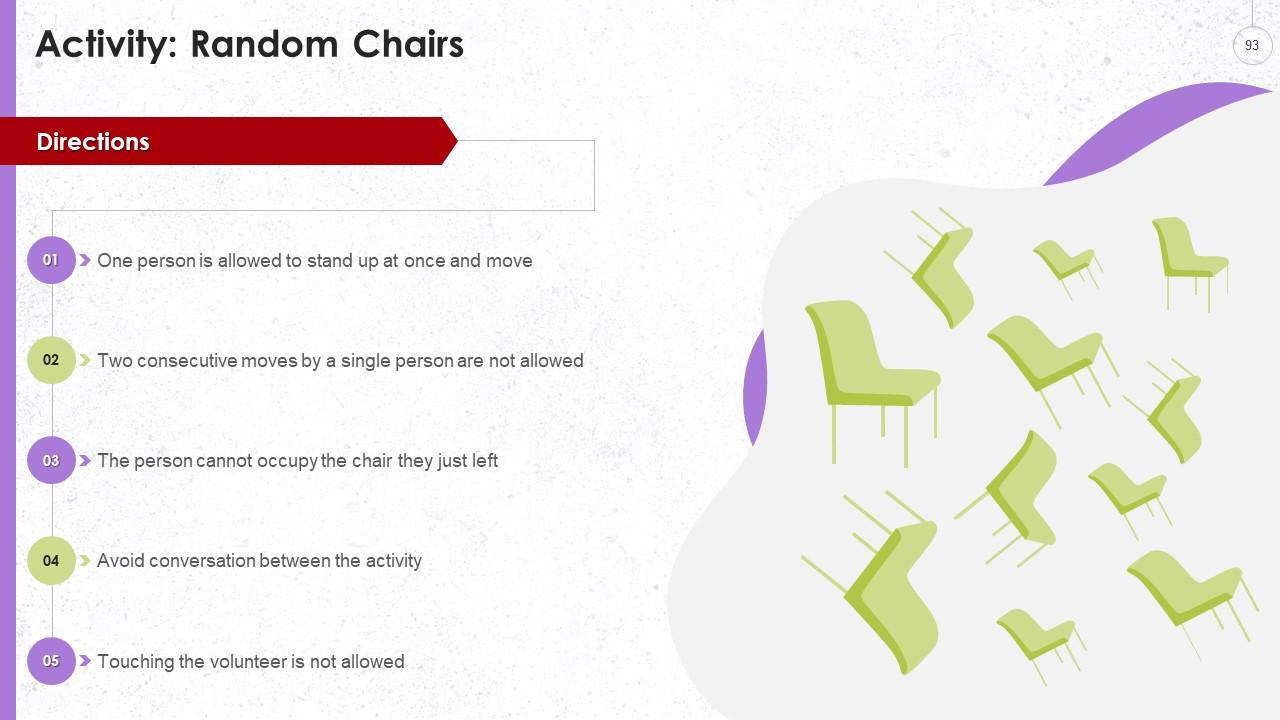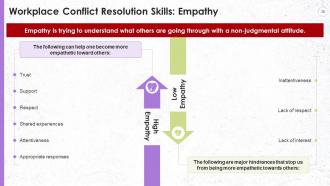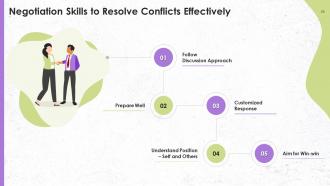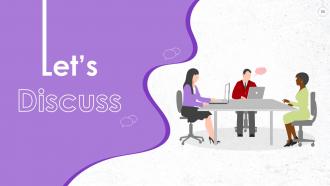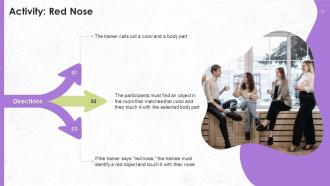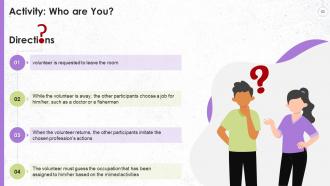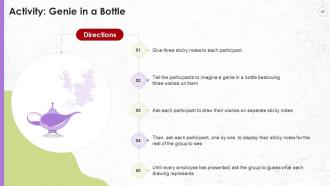Developing Conflict Resolution Skills Training Ppt
This training module on Developing Conflict Resolution Skills covers conflict resolutions importance, factors, dos and donts. It lists healthy and unhealthy responses to conflict and, in detail, covers the multistep conflict resolution process. It discusses the essential skills needed to resolve workplace conflicts which are effective communication, emotional intelligence, stress management, empathy, and impartiality. Then, it covers the internal expertise human resources, ombudsman, shared neutrals and external expertise conflict coaches, mediators, dispute resolution centers available at the workplace to resolve conflicts. Further, it comprehensively discusses the multiple conflict resolution strategies, which are mediation, ombuds, and negotiation. It also has an activity Debate vs. Dialogue, case studies Conflict with Manager, Mediation at Workplace, and Conflict Resolution, key takeaways, and discussion questions related to the topic. The deck has PPT slides on about us, vision, mission, goal, 30-60-90 days plan, timeline, roadmap, and training completion certificate. It has energizer activities to make the coaching session more interactive. It also includes a client proposal and assessment form for training evaluation.
This training module on Developing Conflict Resolution Skills covers conflict resolutions importance, factors, dos and dont..
- Google Slides is a new FREE Presentation software from Google.
- All our content is 100% compatible with Google Slides.
- Just download our designs, and upload them to Google Slides and they will work automatically.
- Amaze your audience with SlideTeam and Google Slides.
-
Want Changes to This PPT Slide? Check out our Presentation Design Services
- WideScreen Aspect ratio is becoming a very popular format. When you download this product, the downloaded ZIP will contain this product in both standard and widescreen format.
-

- Some older products that we have may only be in standard format, but they can easily be converted to widescreen.
- To do this, please open the SlideTeam product in Powerpoint, and go to
- Design ( On the top bar) -> Page Setup -> and select "On-screen Show (16:9)” in the drop down for "Slides Sized for".
- The slide or theme will change to widescreen, and all graphics will adjust automatically. You can similarly convert our content to any other desired screen aspect ratio.
Compatible With Google Slides

Get This In WideScreen
You must be logged in to download this presentation.
PowerPoint presentation slides
Presenting Training Deck on Developing Conflict Resolution Skills. This presentation deck contains 93 well-researched and uniquely designed slides. These slides are 100 percent made in PowerPoint and are compatible with all screen types and monitors. They also support Google Slides. Premium Customer Support available. Suitable for use by managers, employees, and organizations. These slides are easily customizable. You can edit the color, text, icon, and font size to suit your requirements.
People who downloaded this PowerPoint presentation also viewed the following :
Content of this Powerpoint Presentation
Slide 4
This slide provides an overview of conflict resolution, which is a process in which two or more parties find an amicable solution to a disagreement among them at the workplace. It also contains details of multiple benefits conflict resolution offers: These are harmonious relationships, improving goal achievement, enhancing commitment, and generating new insights.
Instructor's Notes:
The importance of conflict resolution lies in:
- Building Harmonious Relationship: Conflict resolution results in high-functioning and more satisfying relationships at the workplace as unresolved arguments among employees often result in the brewing of resentment. When not channeled properly, such energy leads to angry or irrational behavior at the workplace
- Improves Goal Achievement: Resolving issues results in greater efficiency and goal achievement at the workplace. The presence of underlying conflict among employees results in poor focus, which hampers productivity
- Enhances Commitment: Conflict resolution can help create strong commitment and emotional bonds among team members, leading to higher dedication at work
- Generates New Insights: Conflict resolution helps keep disagreements from escalating; also provides a platform for employees to share and discuss their varying points of view, leading to the generation of new ideas to solve a business problem
Slide 5
This slide lists factors that have a significant impact on successful conflict resolution at the workplace, such as managing stress, controlling emotions and behavior, paying attention and interpreting both verbal and nonverbal communication cues, and making sure personal attacks are not resorted to
Slide 6
This slide provides information about unhealthy responses to conflict in the workplace, such as being angry, hurtful, and resentful towards other people. It also contains details of healthy responses to conflict, which is seeking compromise to find a solution that addresses the concerns of both parties.
Slide 7
This slide list the dos and don'ts of conflict resolution, such as understanding that conflicts are inevitable, following an unbiased approach for resolution, etc. It also contains details of the Don’ts such as imposing personal values or beliefs, interrupting and attacking discussions on resolving the conflict and soon.
Slide 8
This slide highlights the multistep process for conflict resolution at the workplace. The six steps listed are: clarifying what disagreement is about, setting up a common goal for parties in conflict, discussing approaches to arrive at common ground, identifying barriers to common ground, deciding on the best approach to resolve conflict, and acknowledging the agreed upon solution.
Instructor's Notes:
The multistep process to successfully resolve conflict is:
- Step 1 - Clarifying What Disagreement is About: The main objective of the step is to get both sides to agree on what the disagreement is about by getting to the heart of the conflict
- Step 2 - Setting up Common Goal for Parties in Conflict: The main objective of the step is to make both parties agree on the desired outcome of the conflict
- Step 3 - Discussing Approaches to Meet Common Ground: In this step, the conflicting parties discuss and identify approaches to work together to accomplish an agreed common goal
- Step 4 - Identifying Barriers to Common Ground: In this step, the conflicting parties discuss the issues which resulted in the conflict in first place and how to overcome these
- Step 5 - Deciding on the Best Approach to Resolve Conflict: Both parties agree on the best resolution to solve the conflict
- Step 6 - Acknowledging the Agreed Solution: Both sides agree on their responsibilities to maintain an amicable position and prevent further conflicts
Slide 9
This slide contains details of the first step in the conflict resolution process, which is clarifying what the disagreement is about. It also includes information on multiple tips to implement this step successfully, such as asking questions.
Slide 10
This slide explains a step in conflict resolution process where a common goal is setup to initiate talks. It also includes details of multiple tips to implement this step successfully, such as finding a commonality to which both parties agree as starting point the conflict resolution talks.
Slide 11
This slide details the discuss approaches to meet the common ground in the conflict resolution process. It also includes details of multiple tips to implement this step successfully, such as brainstorming on strategies to work together and agreeing to a common goal.
Slide 12
This slide includes path-breaking tips on identifying barriers to common ground in the conflict resolution process. It also contains practical advice for successful implementation, such as listing out what can and cannot be changed about the conflict situation.
Slide 13
This slide includes information on deciding on the best approach to resolve conflict. It also lists tips for successful implementation of the step, such as selecting a solution to which both parties agree and defining the responsibility of each party for successful implementation of the solution, etc.
Slide 14
This slide provides an overview of the step to acknowledge the agreed solution in the conflict resolution process. It also includes information on tips for successful implementation of the step, such as showcasing the brighter side of the solution to both the parties and closing the talks on conflict resolution on a happy note.
Slide 15
This slide illustrates the debate vs dialogue conflict management activity. It also contains instructions that are required to conduct the activity successfully.
Instructor’s Notes:
Questions you can ask to start the discussion are as follows:
- What are your opinions on each situation?
- How you react to each situation?
- What changed in the activity when you switched from debate to dialogue?
- Why is it difficult to listen when somebody disagrees with you?
- How did you reach a conclusion that both of you agreed upon?
Slide 17
This slide showcases key skills that an individual should develop to resolve workplace conflicts successfully. The key skills listed are effective communication, emotional intelligence, stress management, empathy, and impartiality.
Slide 18
This slide provides an overview of the significance of effective communication in resolving workplace conflict. It also includes information about both the verbal and non-verbal components of communication.
Slide 19
This slide indicates how to prevent workplace disagreements from escalating by asking the right questions, and rephrasing what the other person is saying to showcase your genuine interest in resolving the conflict.
Slide 20
This slide lists multiple nonverbal cues that prove to be effective in resolving workplace conflicts, such as mirroring reactions, maintaining eye contact, nodding, using facial expressions, and adopting a calm tone of voice.
Slide 21
This slide provides information about the definition of emotional intelligence i.e., the capability to identify, understand, and manage one's own as well as teammates' feelings to respond in a proactive and non-reactive way in conflict situations at the workplace. It also explains how high EI is a beneficial skill in recognizing and comprehending employees' emotional turmoil and use this to prevent any conflict from escalating.
Slide 22
This slide provides an overview of major components of emotional intelligence as a skill. These are self- awareness, self- management, social awareness, and relationship management.
Slide 23
This slide presents the four-quadrant matrix to resolve workplace conflict using Emotional Intelligence. The major quadrants of 2-by-2 EI framework are self-awareness, self-management, social awareness, and relationship management.
Slide 24
This slide indicates the strategies to become aware of the team’s emotions to minimize workplace conflict. The techniques highlighted are conducting team meetings and developing informal communication channels.
Slide 25
This slide showcases the difference between low and high emotional intelligence people at the workplace in terms of leadership, working, and communication style.
Slide 26
This slide provides information on adverse impacts of stress, i.e., impairment of logical thinking. It also contains details on how effectively releasing stress in a tense situation can prevent conflicts from escalating.
Slide 27
This slide lists the multiple ways in which stress hampers workplace conflict resolution. Stress directs hits our ability to detect and be aware of emotions; interpreting the other person's body language; communication of our needs in a clear manner.
Slide 28
This slide highlights multiple methods to handle stress in conflict resolution, i.e., managing stress triggers and engaging one or more senses while interacting with parties in conflict.
Slide 29
This slide illustrates multiple approaches to handling workplace stress effectively. The strategies are tracking stressors, setting work-life boundaries, practicing problem-solving, talking to someone, practicing mindfulness, exercising regularly, and eating healthily.
Instructor's Notes:
Strategies to deal with workplace stress are:
- Track Stressors: Keep a note of things that cause you stress; it may be activity, a person a situation. Identify a pattern, if any, and limit exposure to these stressors. Limit exposure to such activities
- Set Work-Life Boundaries: Draw well-defined work-life boundaries and stick to these. For example, avoid checking work emails at home
- Practice Problem-solving Approach: Deploy the problem-solving approach to complex tasks using specific steps like defining a problem, brainstorming solutions, and developing an action plan.
- Talk to Someone: Seek guidance from someone senior in the organization to put things in perspective
- Practice Mindfulness: Practice mindfulness to tackle stress at work as it allows you focus on the present with a mindset of openness, acceptance, and curiosity.
- Exercise Regularly: Do regular exercise to lift mood and increase energy levels; physical activity releases endorphins that act as natural painkillers.
- Balanced Diet: Stress can lead to chronic overeating, especially food with high sugar. Regular consumption of unhealthy food in an invite to ill-health
Slide 30
This slide provides information regarding the definition of empathy. It also details habits/strategies that can help one become more empathetic towards others. These are offering trust, support, respected, shared experiences and responses that come from kindness and caring.
Slide 31
This slide highlights how empathy can be used to resolve workplace conflicts. The key is retaining objectivity no matter how difficult the conversation becomes; being non-judgmental in understanding the other's stated position or point of view.
Slide 32
This slide showcases the empathy mind map to understand employee behavior better to prevent workplace conflicts. The major sections of the empathy mind map are who are we empathizing with? What do they need to do? What do they think and feel?
Slide 33
This slide showcases the strategies to make conflict resolution talks more empathetic, such as practicing active listening, asking questions, using conversation fillers, and body language that welcomes and encourages others to vent out. Appropriate eye contact is an absolute must.
Slide 34
This slide highlights the major empathy blockers that one must be careful about such as domination, manipulation, disempowerment, and denial. When empathy blocker statements are used, it leads to conversation closure. These are a complete NO-NO during conflict resolution talks.
Instructor's Notes:
The major empathy blockers that limit conflict resolution conversations are:
Domination:
- Threatening: “Do it or else.”
- Ordering: “Don’t ask me why. Just do it because I said so.”
- Criticizing: “You don’t work hard enough.”
- Name-Calling: “You’re neurotic.”
Manipulation:
- Withholding Relevant Information: “If you knew the “big picture” you would see it differently.”
- Interrogating (Micro-managing): “How many hours did this take you?”
- Praising to Manipulate: “You are so good at report writing, I would like you to do this one.”
Disempowerment:
- Diagnosing Motives: “You are very possessive.”
- Untimely Advice: “Why didn’t you do it this way?”
- Changing the Topic: “Yes, it is a worry…by the way, did I tell you I applied for a new job?”
- Persuading with Logic: “There’s nothing to be upset about, and it’s all quite reasonable. We do this, and then we do that.”
- Topping: “I crashed the car last week,” and you follow with “When I smashed up my car.”
Denial:
- Refusing to Address the Issue: “There is nothing to discuss as I cannot see any problem.”
- Reassuring: “Don’t be nervous.”
When empathy blocker statements are used, it leads to conversation closure, so one must avoid them as much as possible during conflict resolution talks.
Slide 35
This slide lists the multiple tips to practice impartiality during conflict resolution talks, such as staying calm and mindful of tone, not involving past issues in an ongoing conflict, and never turning the conflict as being only about an individual.
Slide 36
This slide provides background of the case study on managing conflict with manager at workplace. The major cause of conflict is unclear communication between an employee and his manager.
Slide 37
This slide showcases the question for workplace conflict management study. A trainer can use this question to conduct a discussion during a conflict management training session.
Slide 38
This slide showcases the resolution for conflict with manager at workplace case study. Clear communication and greater transparency in decision taken are the two best ways to resolve such kind of conflict.
Slide 40
This slide highlights multiple conflict resolution resources at the workplace, i.e., internal and external expertise. Internal expertise includes human resources, an ombudsman, and shared neutrals. External expertise consists of conflict coaches, dispute resolution centers, and mediators.
Slide 41
This slide provides information on internal resources in the organization that help resolve workplace conflicts. The multiple resources are HRs, ombudsman, and shared neutrals.
Slide 42
This slide provides information on multiple sources outside the organization to help resolve workplace conflicts, such as conflict coaches, mediators, and dispute resolution centers.
Slide 43
This slide is a comprehensive, but succinct source of information on mediation, i.e., a structured method in which an impartial third party (the mediator) intervenes in a dispute to help parties to a conflict reach a satisfactory solution. The slide also covers details of multiple principles associated with mediation These are voluntarism, confidentiality, impartiality and objectivity, and self-determination.
Instructor's Notes:
A brief on multiple principles associated with mediation are:
- Voluntarism: The warring parties enter the mediation process according to their own will and have the right to exit the process at any stage or time
- Confidentiality: Any information shared during the mediation process remains confidential, giving employees in conflict the freedom to express themselves without any fear or reservation
- Impartiality and Objectivity: Mediators take a neutral stance to ensure that the mediation process remains impartial and objective
- Self-Determination: In the mediation process, it is the parties to a conflict that reach an agreement. A mediator guides them to a solution with his/her skill in asking the parties to think deeply about solutions
Slide 44
This slide list the responsibilities of a mediator in the mediation process, such as providing impartial support to all parties to the dispute, fostering a safe environment so that both parties can engage in open and honest dialogue and helping parties explore a variety of solutions to reach an agreement to work together.
Slide 45
This slide showcases the multistep mediation process to resolve workplace disputes. The major steps to be executed in order are: preliminary planning, scheduling, and room setup, greet parties and discuss the process, It also involves sharing perspectives, build an agenda together, negotiate in good faith, hold private meetings if necessary, draft agreements with details, and monitor follow-through
Instructor's Notes:
- Step1 - Perform Preliminary Planning and Scheduling: Calling the right people at the right time in the right room is the first step to resolving a workplace conflict. Do research upfront to identify who is involved in a conflict and then create an inviting environment for conflict resolution talks
- Step 2- Greet Parties and Discuss Process: Set ground rules, discuss your role as a neutral facilitator, and assure parties to the conflict that you will help them resolve their differences, and reach an amicable solution
- Step 3 - Understand Perspectives: Neutralize emotional language, reflect and reframe conflict points to demonstrate active listening towards each party's point of view for a better understanding of their respective perspectives
- Step 4 - Develop an Agenda Together: Post-hearing each party's perspective, prepare a cooperative agenda by guiding employees to build a list of topics to be discussed in the conflict resolution meeting
- Step 5 - Negotiate in Good Faith: As a silent player, provide employees the required space to brainstorm and prepare a proposal to create long-lasting and durable solutions
- Step 6 - Hold Private Meetings (if required): Meeting privately will allow each employee to share sensitive information and ask for what they need. Connecting with both parties independently can help the mediator find common ground around which a consensus can be developed and shared with the disputing parties
- Step 7 - Draft Detailed Agreements: Draft detailed agreements with well-defined roles and responsibilities of each employee ensure that agreed-upon solutions are implemented, with commitment solutions
- Step 8 - Monitor Follow-through: Maintain a follow-through to ensure employees walk the talk on the agreed-upon points of the conflict agreement. Also, check for any signs of brewing resentment and coach employees to resolve issues amicably
Slide 46
This slide provides background of the case study on conflict management mediation at workplace. The major cause of conflict mentioned is unclear communication between two employees.
Slide 47
This slide showcases the question for workplace conflict management mediation case study. A trainer can use this question to conduct a roleplay during a conflict management mediation training session.
Slide 48
This slide showcases the outcome of the workplace conflict management mediation case study. It explains that mediation process helps both employees understand how and why was their communication style causing conflict.
Slide 50
This slide provides information on ombuds, i.e., an organizational conflict resolution specialist that helps resolve internal and external workplace conflicts. They are also knowns as ombudsman or ombudsperson.
Slide 51
This slide lists an organizational ombudsman's major roles and responsibilities as a listener, guide, mediator, coach, reporter, and policy changer.
Slide 52
This slide provides information about the dos and don’ts of organizational ombuds. The common dos are listens and analyses issues, explains policies and procedures, recommends changes in policies and procedures. The common don’ts are advocates for the complainer, intervenes in a formal grievance procedure, and provides legal representation.
Slide 53
This slide provides information about the definition of negotiation in a conflict situation, i.e., a systematic process in which two parties in conflict achieve a mutual consensus by reaching a win-win solution. It also provides details of the possible negotiation outcomes such as win-win, win-lose, and inefficient but equitable.
Instructor's Notes:
There are three possible outcomes of negotiation in a conflict situation:
- Win-win: In this outcome, both parties win. It is also known as integrative bargaining
- Win-lose: In this, one party wins while the other party loses. It is also known as distributive bargaining
- Inefficient but equitable: In this, agreement is such that all the resources are shared equally while both parties in conflict remain slightly dissatisfied
Slide 54
This slide illustrates the major steps of the negotiation process used to resolve workplace conflict. The major steps are identification of the problem, preparation of negotiation, and negotiation.
Instructor's Notes:
The major steps of the negotiation process are:
- Identification of the Problem: Identify the existing sources of brewing resentment, such as salary issues, micromanagement, etc. The correct identification of the cause is crucial as the nature of issues affect the entire negotiation process, i.e., the selection of representatives, period of negotiation, etc.
- Preparation of Negotiation: In this stage, parties in conflict prepare (in advance) the list of issues to be discussed during the negotiation. Each party also appoints representatives to carry out the negotiation
- Negotiation: An appointed chief negotiator presents the issue under consideration in the negotiation meeting. After that, the representatives of both parties put forward their point of view. Discussions continue under the observation of the negotiator till a final settlement is reached
Slide 55
This slide provides information about the multiple negotiation skills that one should develop to effectively resolve workplace conflict. The skills are discussion approach, prepare well, customize response, understand position – self and others, and aim for win-win.
Instructor's Notes:
Negotiation skills needed to resolve workplace conflicts in an effective manner are:
- Follow Discussion Approach: In negotiations, always follow the discussion style while conversing. Remaining rigid about your own perception and not understanding the other party's viewpoint result in failure
- Prepare Well: Preparation leads to success. Before entering into a negotiation, research the subject of conflict well
- Customize Response: Tailor replies in accordance with the person in front of you. Use nonverbal cues to support verbal communication and make a lasting impact
- Understand Position – Self and Others: Avoid making unrealistic demands as it will surely lead to failure of talks
- Win-win for Everyone: Always aim for integrative bargaining so that everyone leaves the negotiation table on a happy note
Slide 56
This slide tabulates the difference between negotiation and mediation as techniques for workplace conflict resolution. The primary difference between negotiation and mediation is that in mediation, there is an active intervention of a third party, i.e., the mediator that actively guides the parties to arrive at an amicable solution.
Slide 57
This slide showcases the case study on employee conflict resolution at the workplace. It also explains that workplace conflict between members of an organization can impact clients and other staff members working in the organization.
Slide 58
This slide showcases the position and resolution of conflict at workplace. It also explains that it is important to review the situation in order to find a solution.
Slide 59
This slide showcases the key takeaways from the session Developing Conflict Resolution Skills. A trainer can use it to highlight important learning points to the audience.
Slide 78 to 93
These slides contain energizer activities to engage the audience of the training session.
Developing Conflict Resolution Skills Training Ppt with all 98 slides:
Use our Developing Conflict Resolution Skills Training Ppt to effectively help you save your valuable time. They are readymade to fit into any presentation structure.
-
Design layout is very impressive.
-
Presentation Design is very nice, good work with the content as well.


